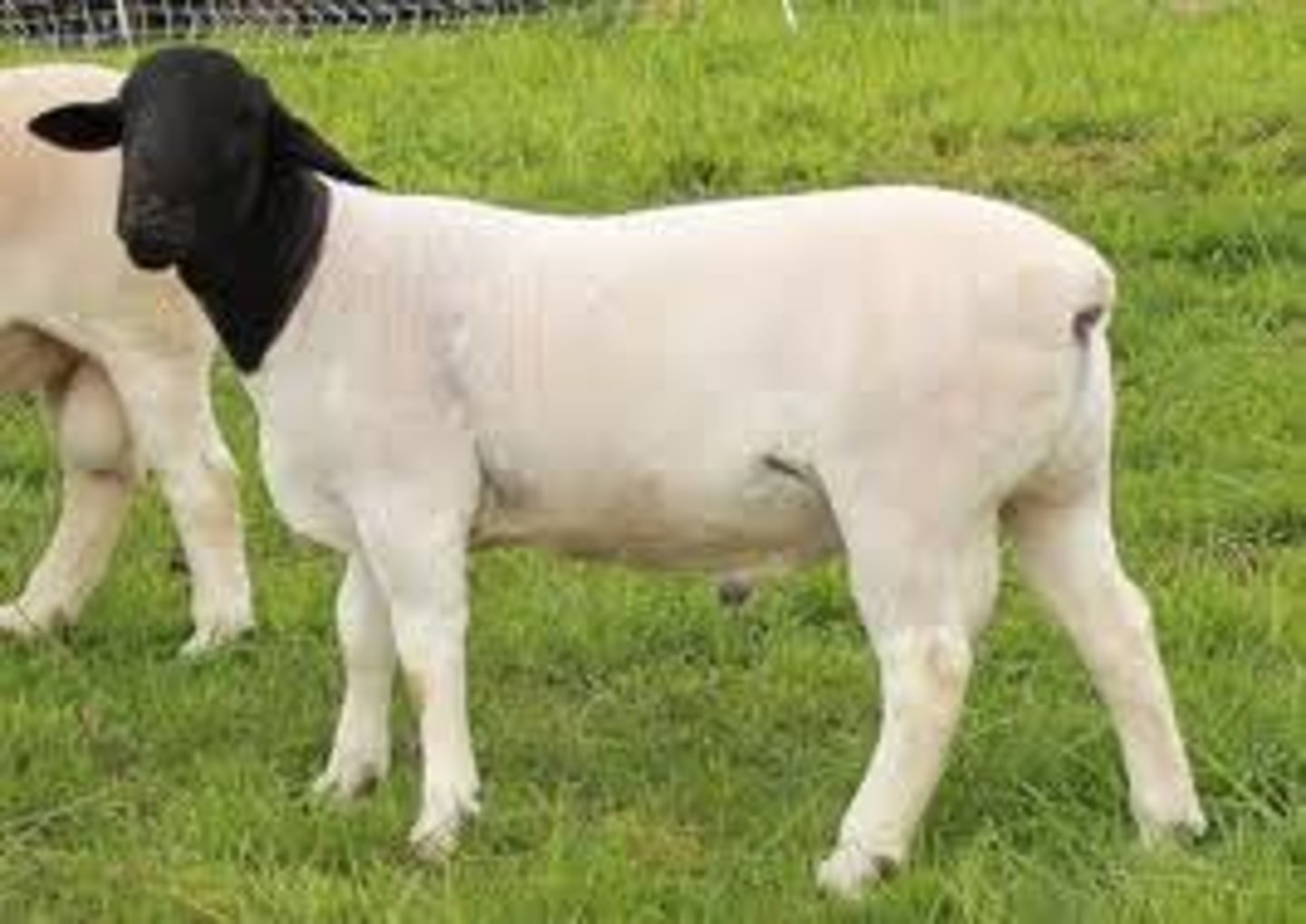ANSC 1401 EXAM 1
1/126
There's no tags or description
Looks like no tags are added yet.
Name | Mastery | Learn | Test | Matching | Spaced |
|---|
No study sessions yet.
127 Terms
stallion
sexually mature, male horse (stud)
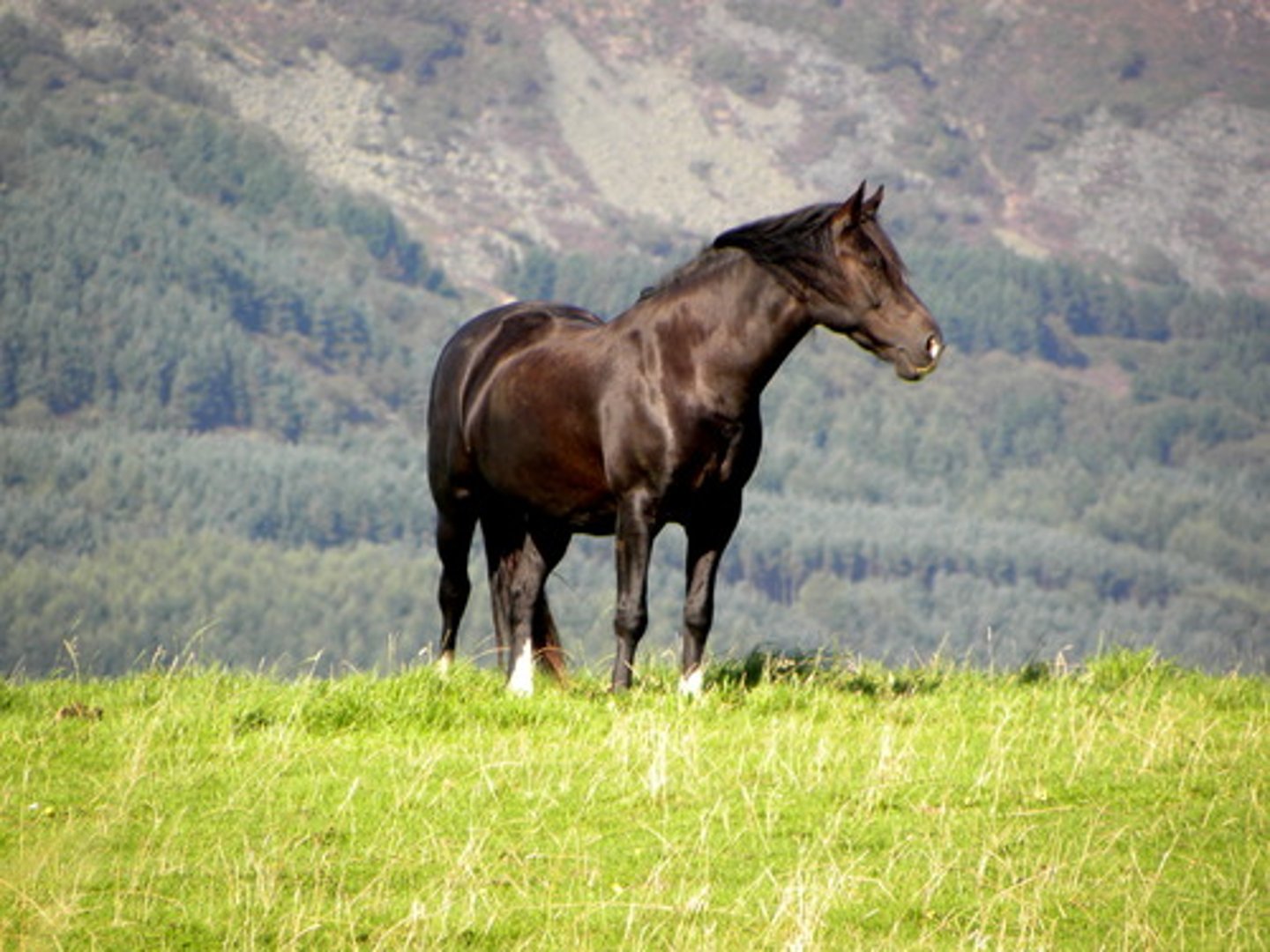
colt
sexually immature, male horse
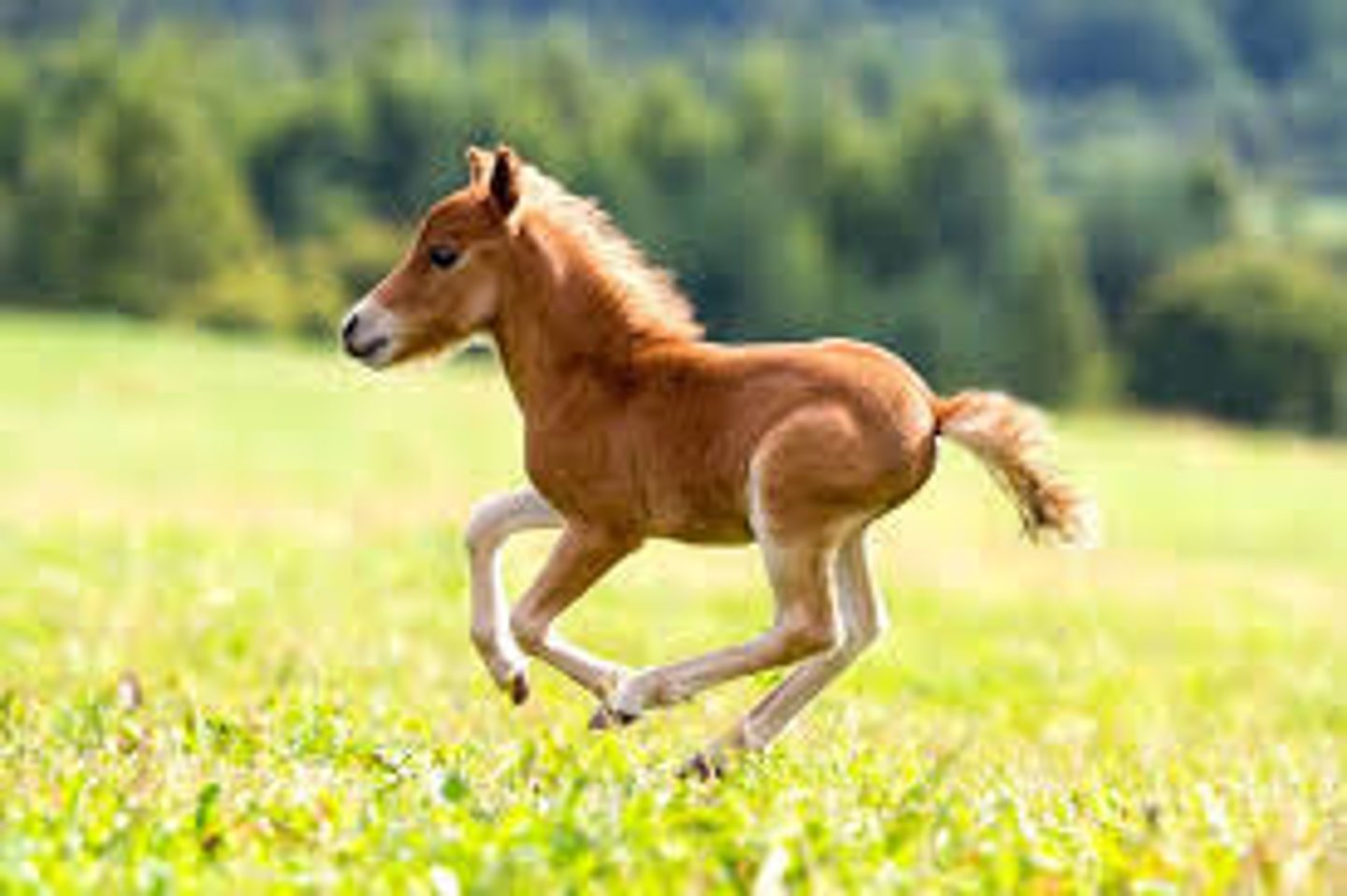
mare
sexually mature, female horse (above 4 years)

filly
sexually immature, female horse (less than 2 years)
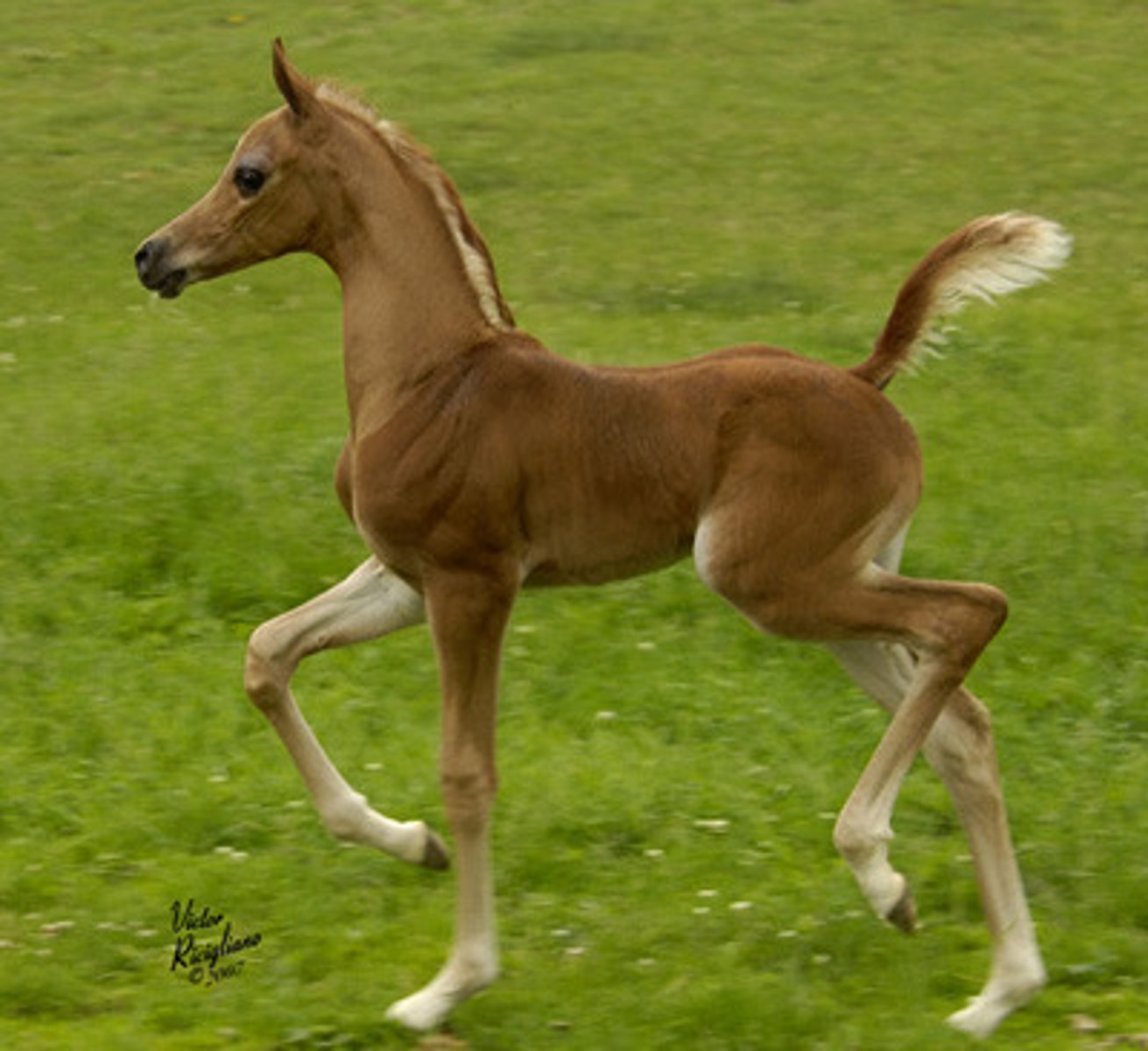
gelding
male horse castrated (best thing to do for a male) before reaching sexual maturity
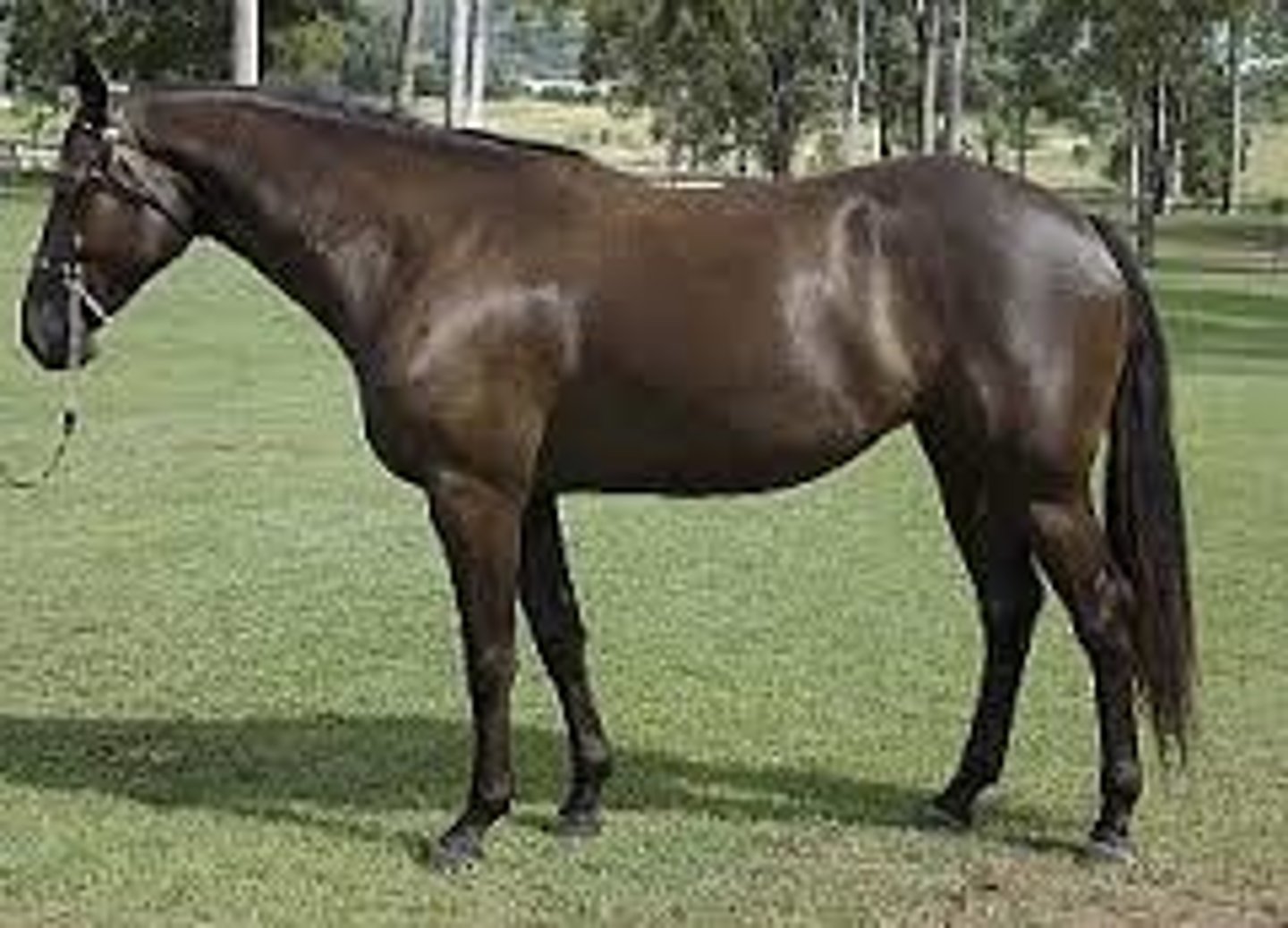
foal
a young male or female horse until weaned at 4-6 months of age
equine
refers to horses, species name (between donkeys/horses)
jack
male donkey
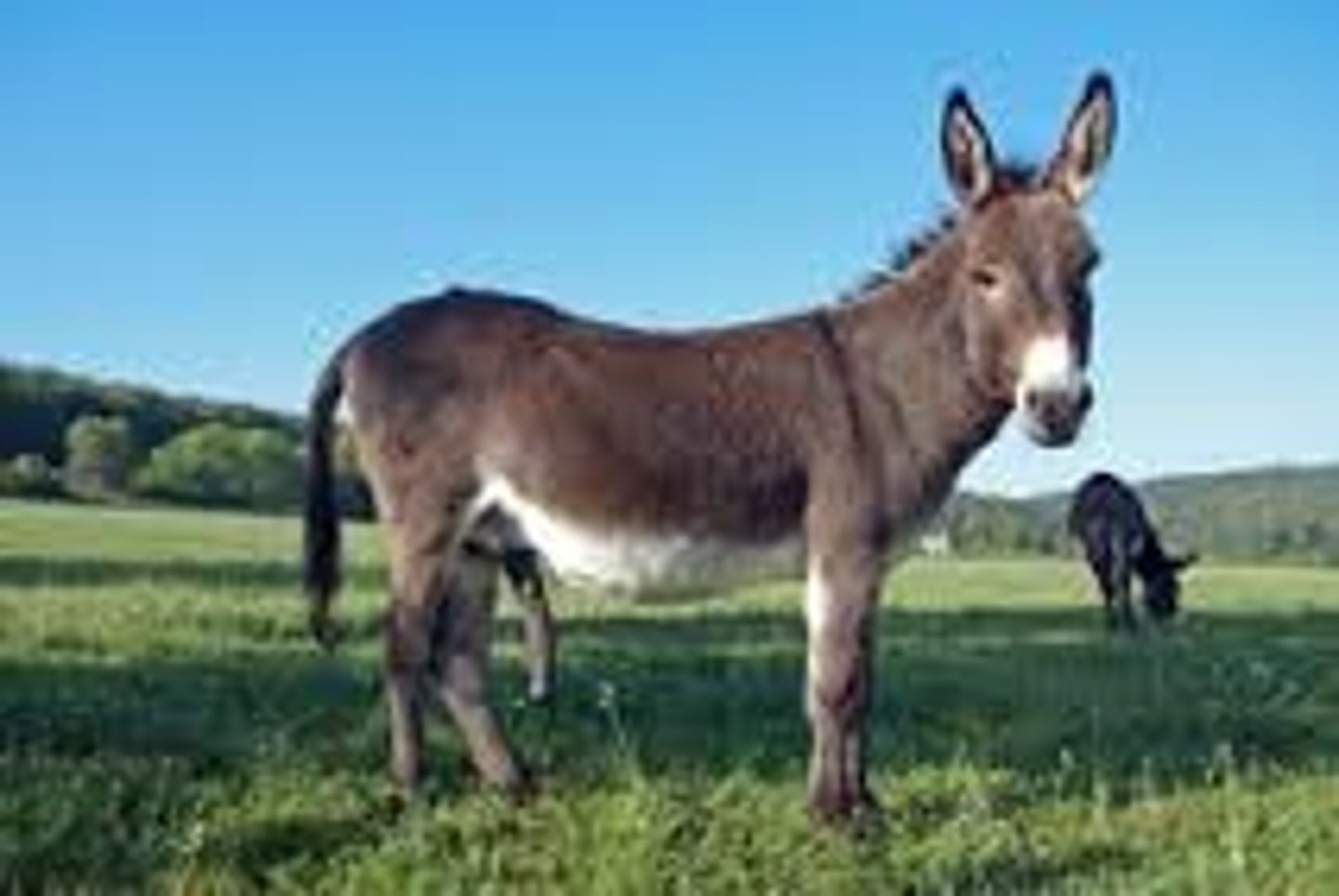
jennet
(jenny) female donkey
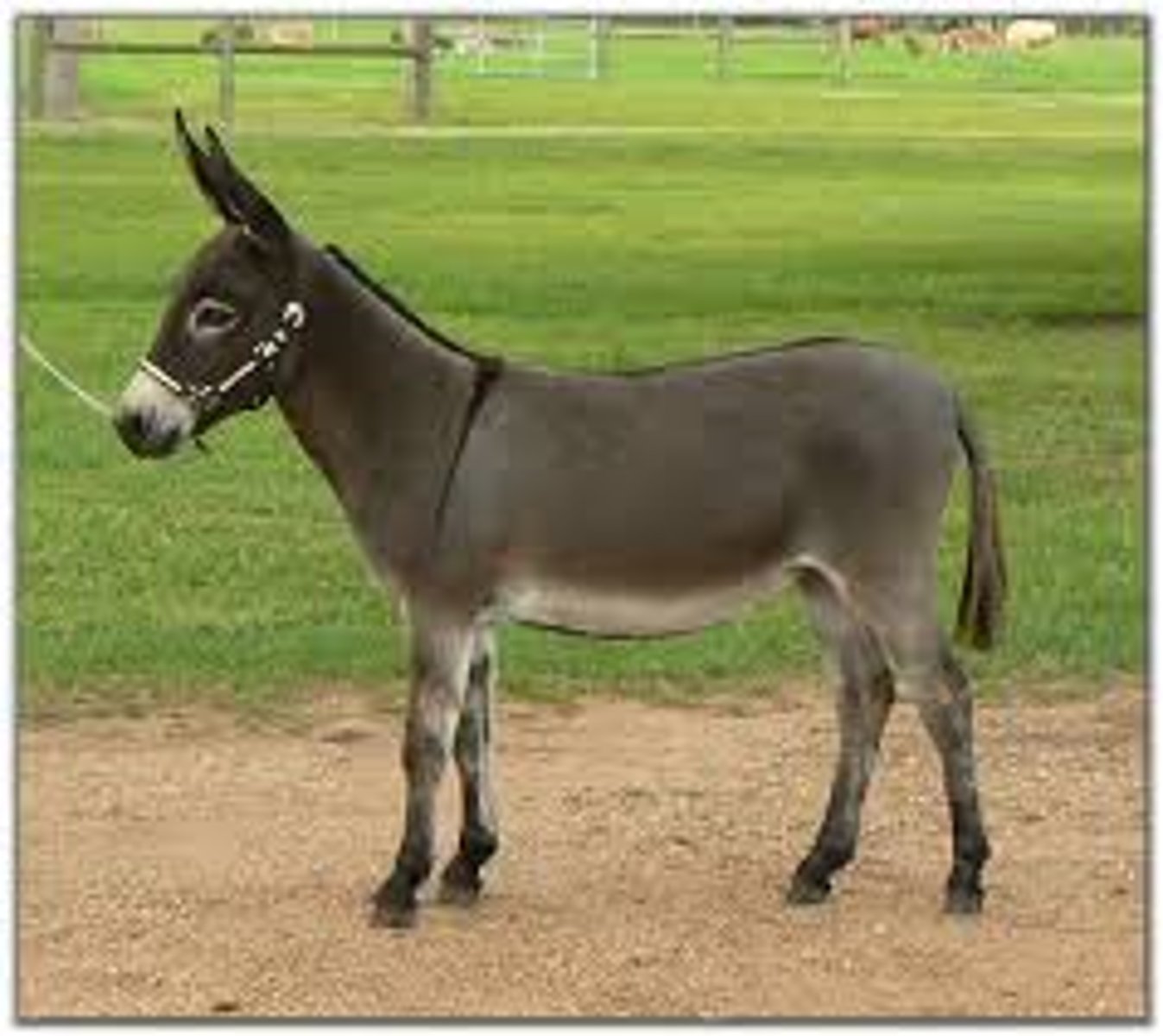
mule
offspring of a mare mated to a jack; Jack x Mare
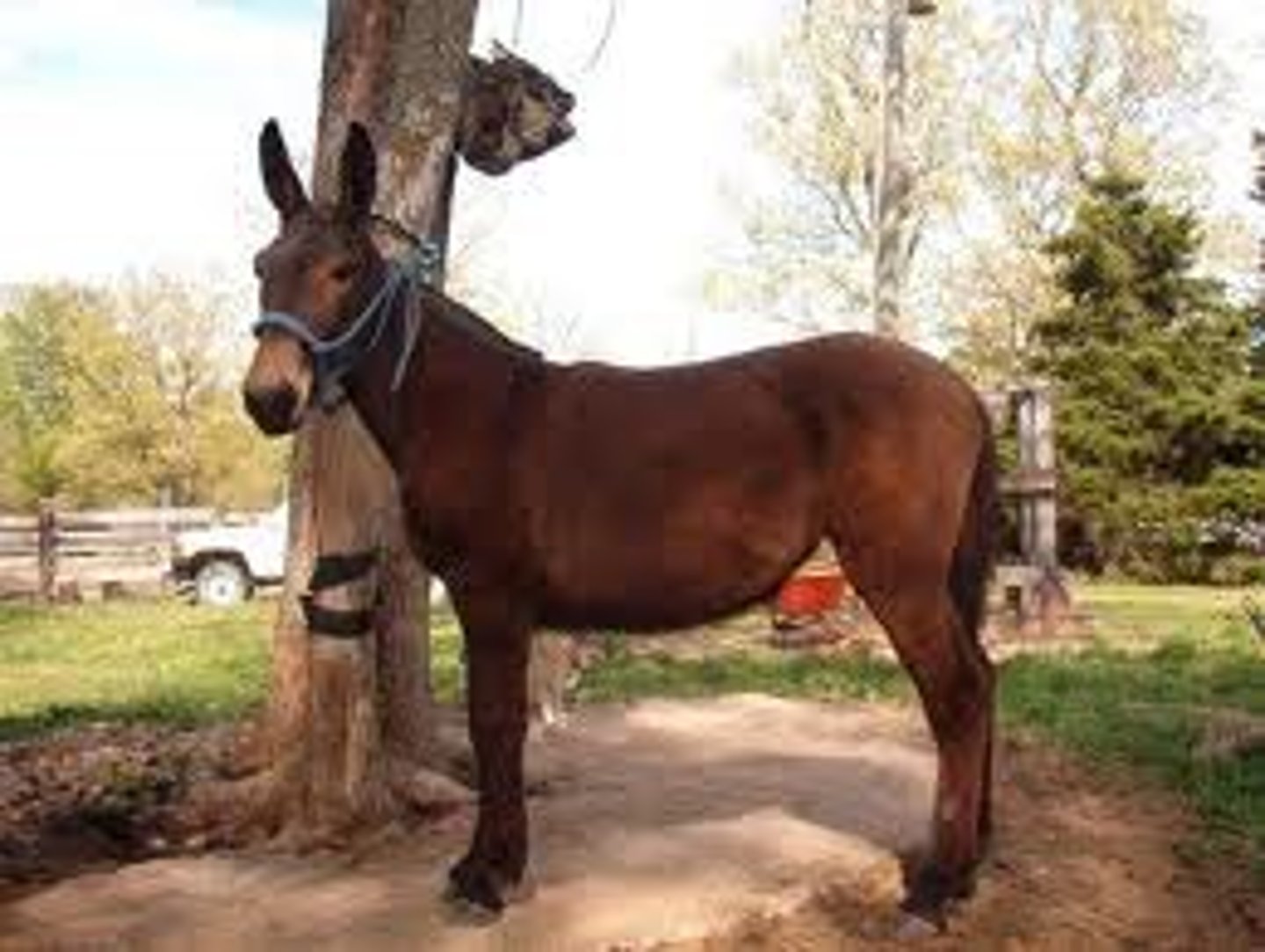
hinny
offspring of a jenny mated to a stallion; Stallion x Jennet
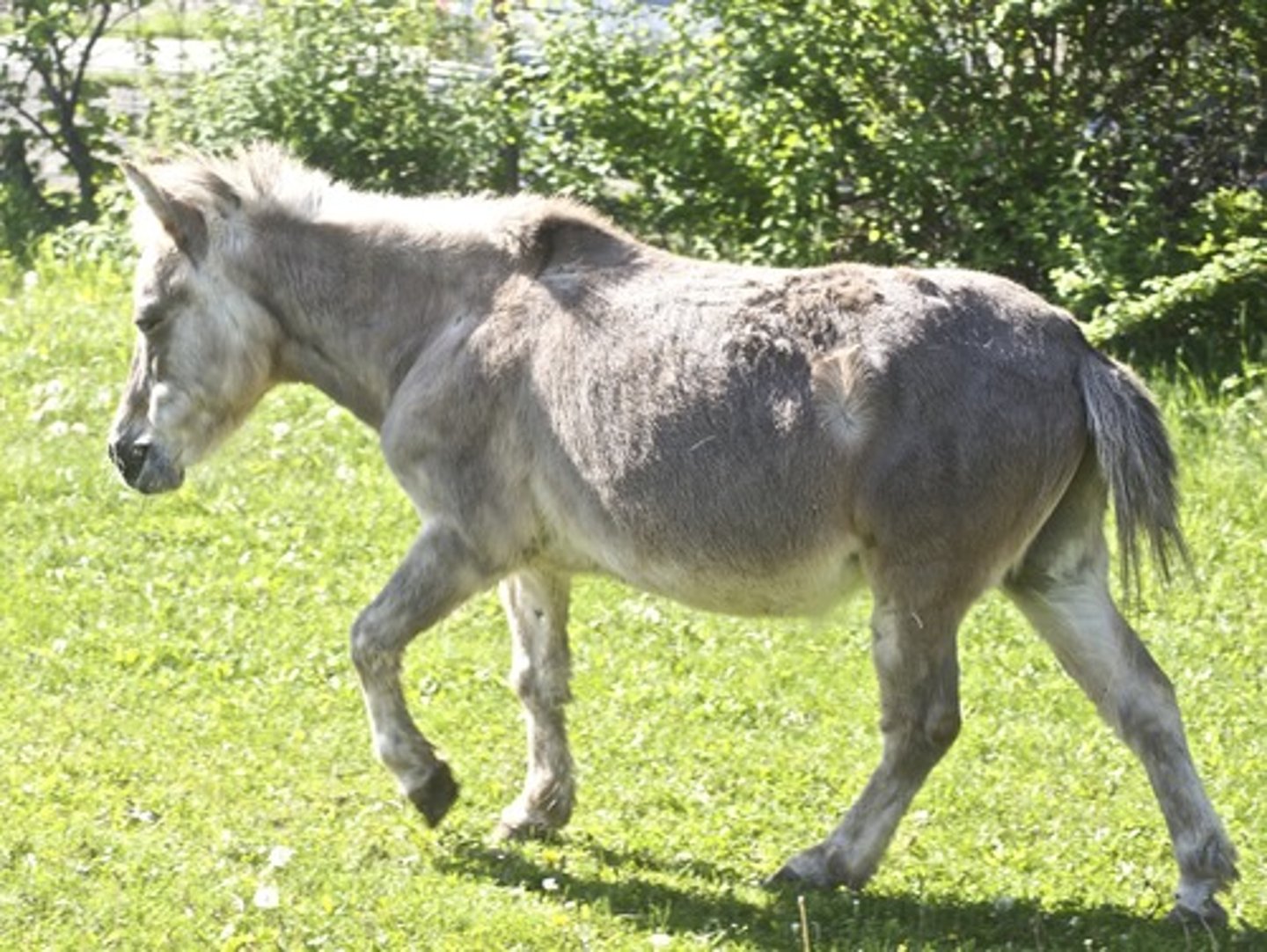
stud
place where stallions are housed/breeding operation
hand
unit of measure (4 in.) for height of horses
walk
4-beat lateral gait
1) left hind
2) left fore
3) right hind
4) right fore
trot
2-beat diagonal gait, all four feet are off the ground= balance gait, riding gait
pace
2-beat lateral gait
canter
(lope, gallop) 3-beat gait (left leg lead) in english entire
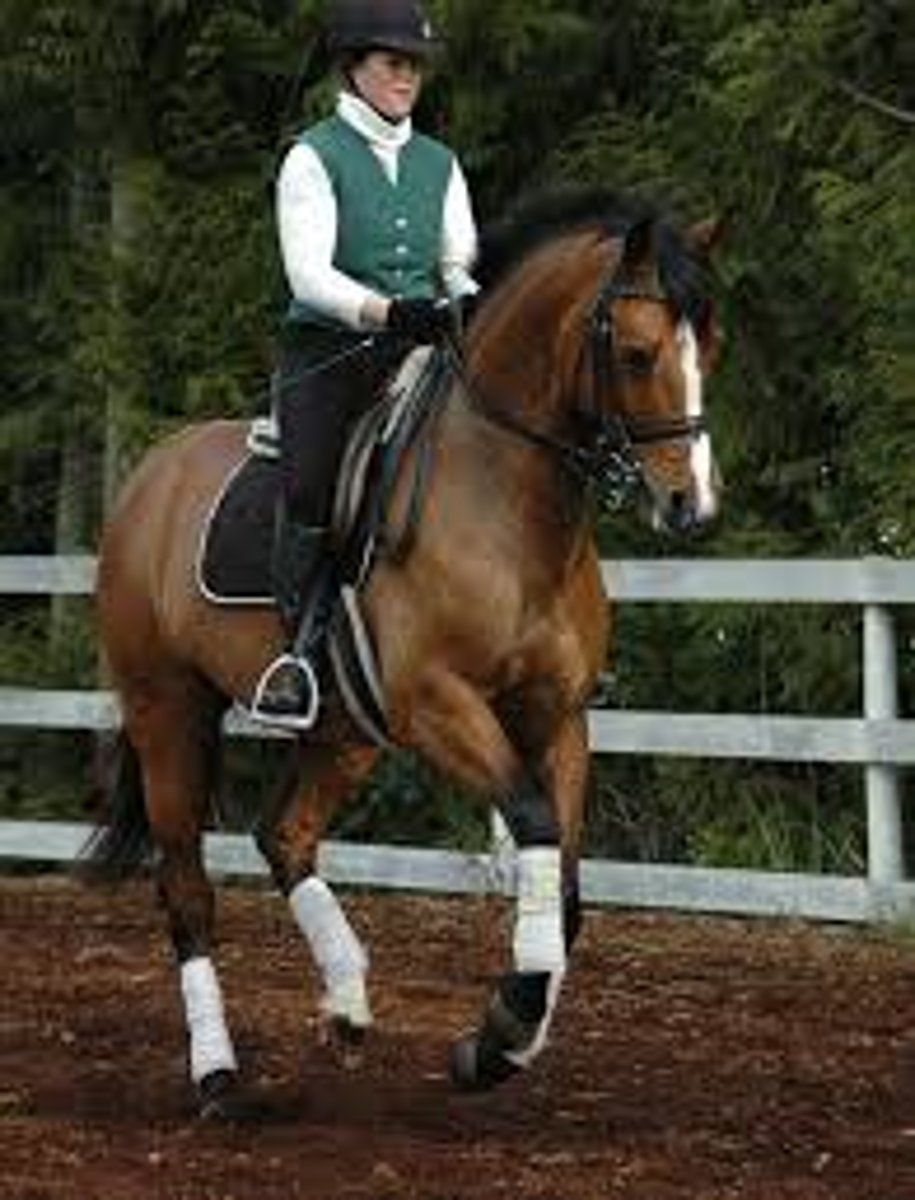
running walk
4-beat gait that is faster than the ordinary walk= causing horse to race
light horse breeds
14.2 hands and over, 900-1200+ lb., "hot=blooded (temperament)"; riding breeds; small bones and thin legs
american quarter horse
light horse breed:
"fearless champion;" most popular breed of horse; originated in America; American Quarter Horse Association- AQHA; uses: racing, cutting- some are very agile, fastest in the quarter mile; always a solid color; can register 1/2 Quarter horse and 1/2 Thoroughbred
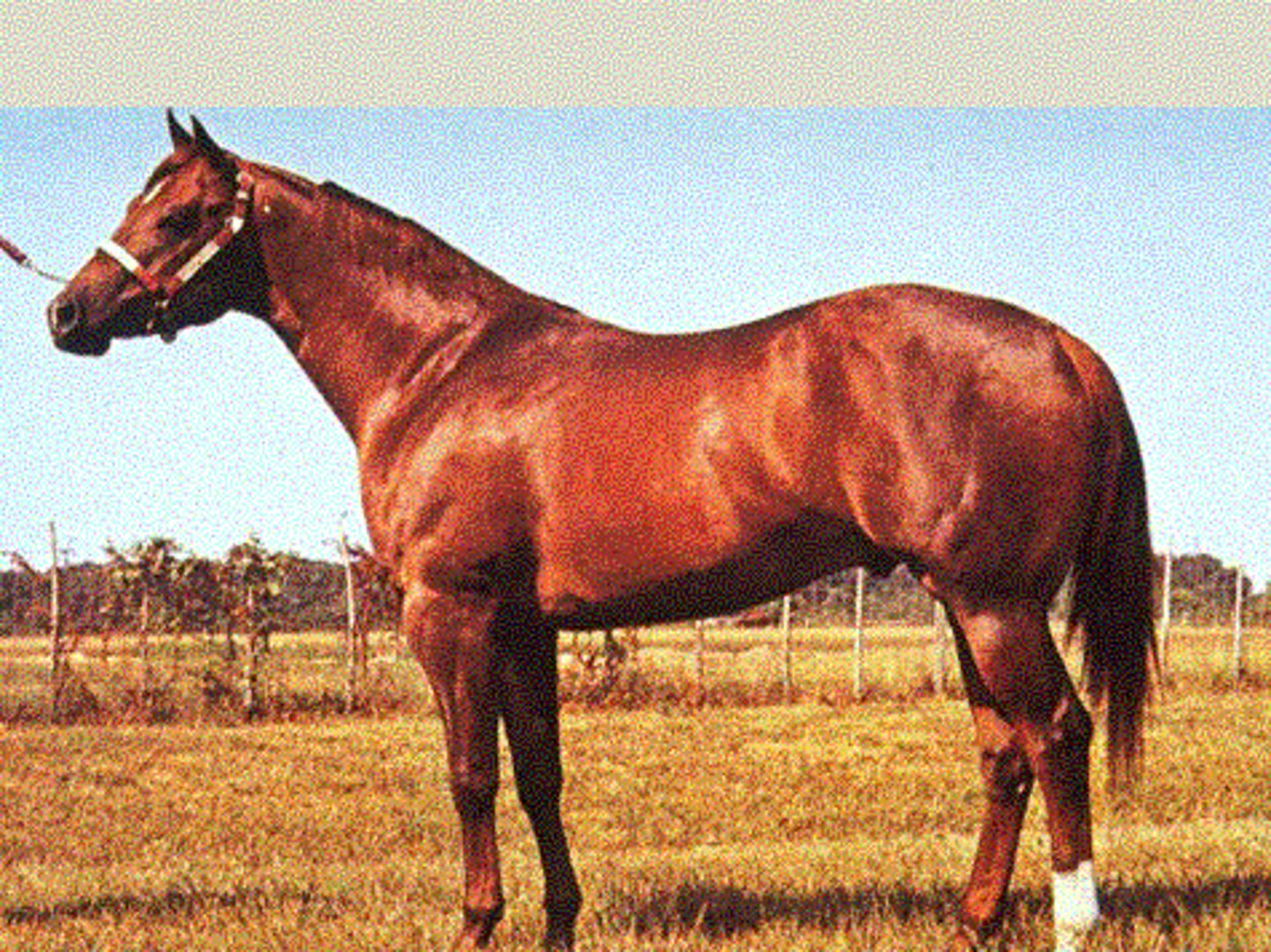
AQHA
largest horse breed association in the world with the most promotional information
arabian
light horse breed:
light-muscled and light boned; came from desert areas of the Far East (Egypt); speed, stamina (endurance), dished face (gibber), longer and arched neck, flat croup; variety of colors; uses: endurance and competitive trail rides

thoroughbred
light horse breed:
foundation stock for the Quarter Horse, Morgan and Standardbred breeds; uses: racing, hunters, dressage, polo, three-day events

morgan
light horse breed:
developed in the New England, Justin Morgan (Thoroughbred X Arabian); 2 types: english pleasure and stock
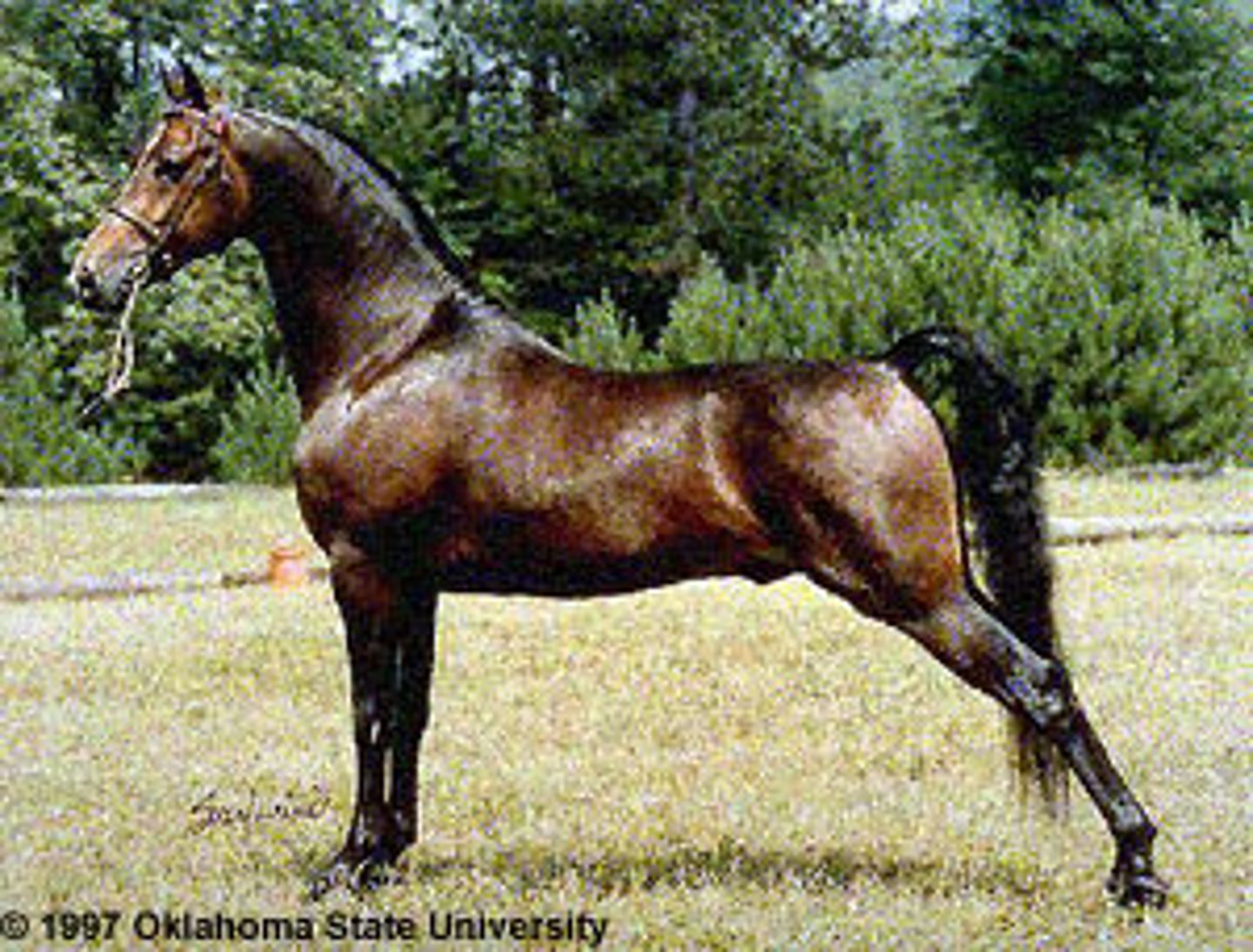
standardbred
light horse breed:
similar in conformation but smaller than the Thoroughbred; originated in America; only breed that recognizes pacers (2-beat lateral gait), "standard for speed in sulky races" a) trot a mile in 2:30 minutes or less b) pace a mile in 2:25 minutes or less; uses: sulky racing in endurance and fitness events
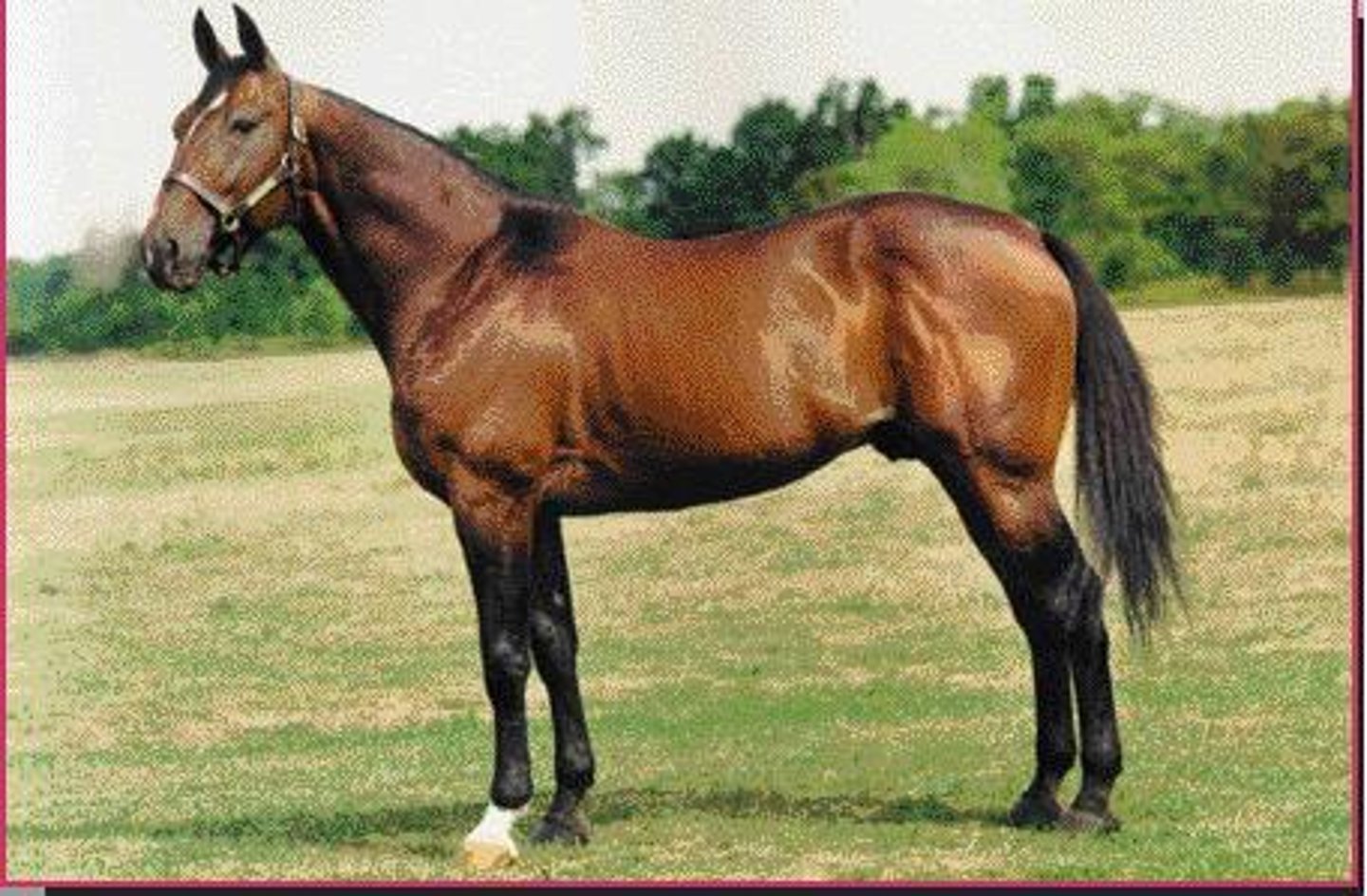
America Saddlebred/American Saddle Horse
light horse breed:
developed in kentucky as a plantation horse, known for ease of riding; 2 types: 3-gaited- walk, trot, canter gaits b) 5-gaited- slow gait and rack gaits
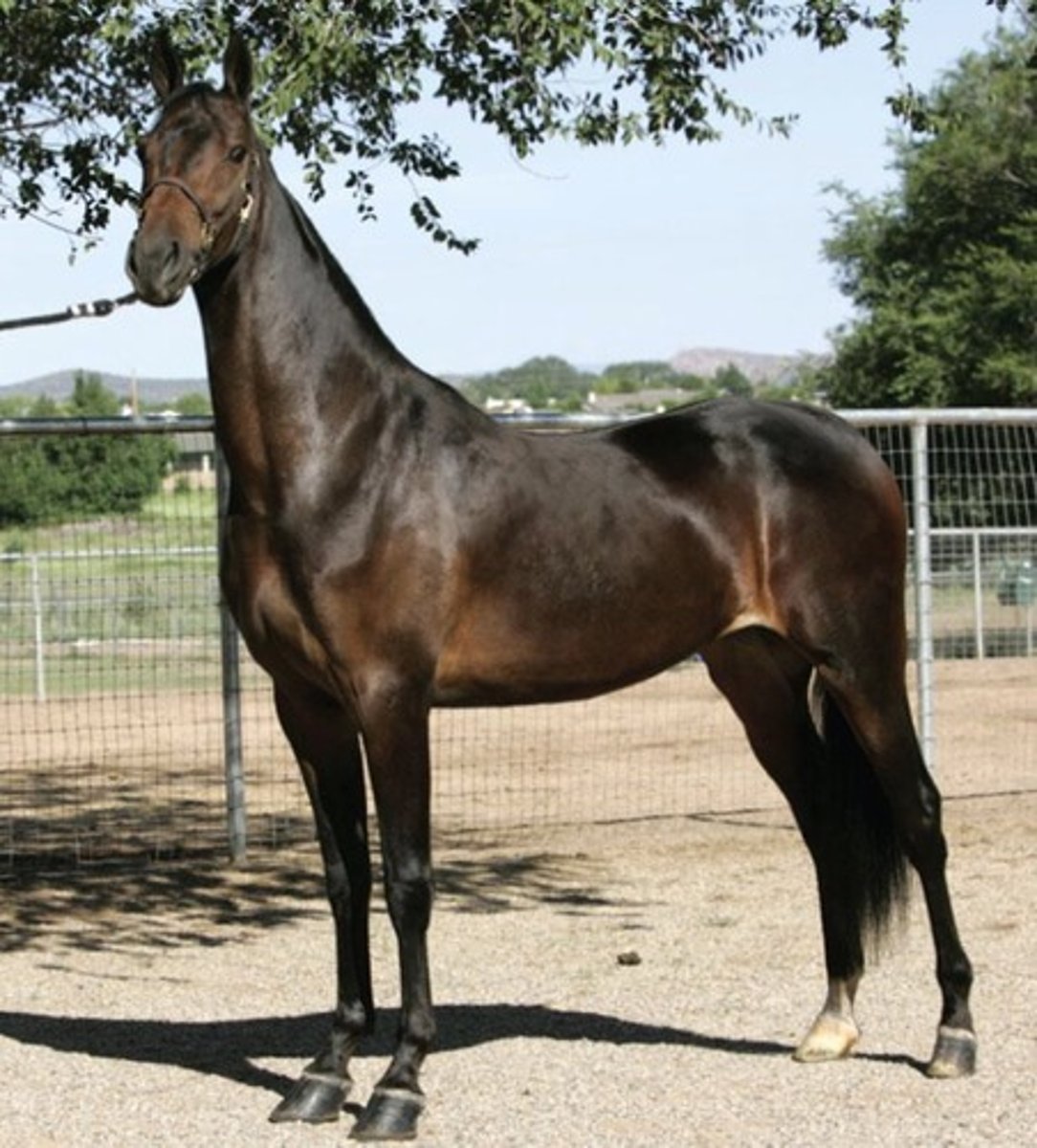
tennessee walking horse
light horse breed:
originated in middle tennessee valley; known for easy riding (much leg action). hind foot over: reaches the front footprint
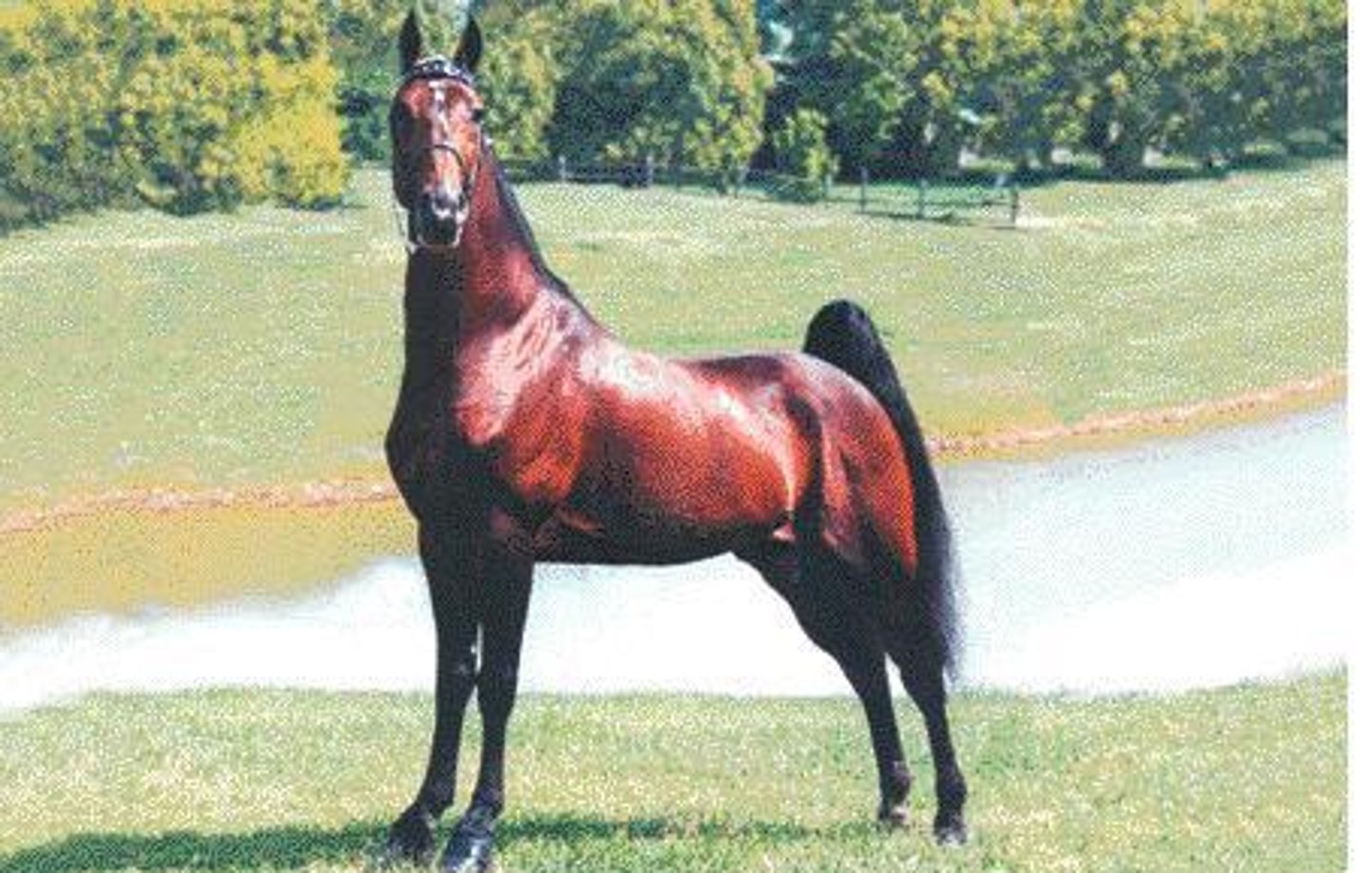
american paint horse
breed registries with color requirements:
fastest growing breed in numbers today; Quarter horse with too much white, must have one spot above the legs larger than a silver dollar; Sire and dam must be paint, Quarter horse or Thoroughbred
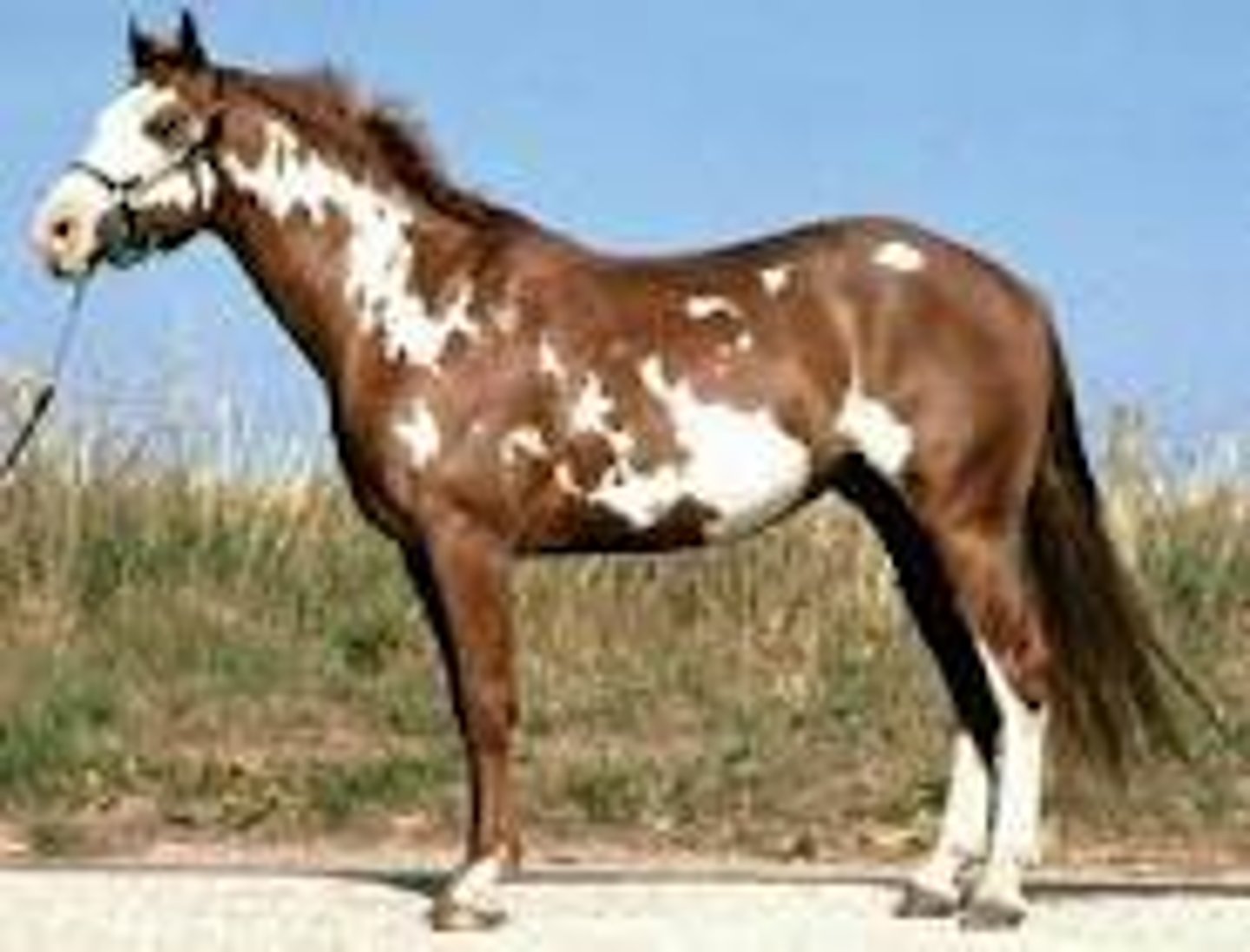
overo
color patterns/types of spotting:
white spots do not cross the back
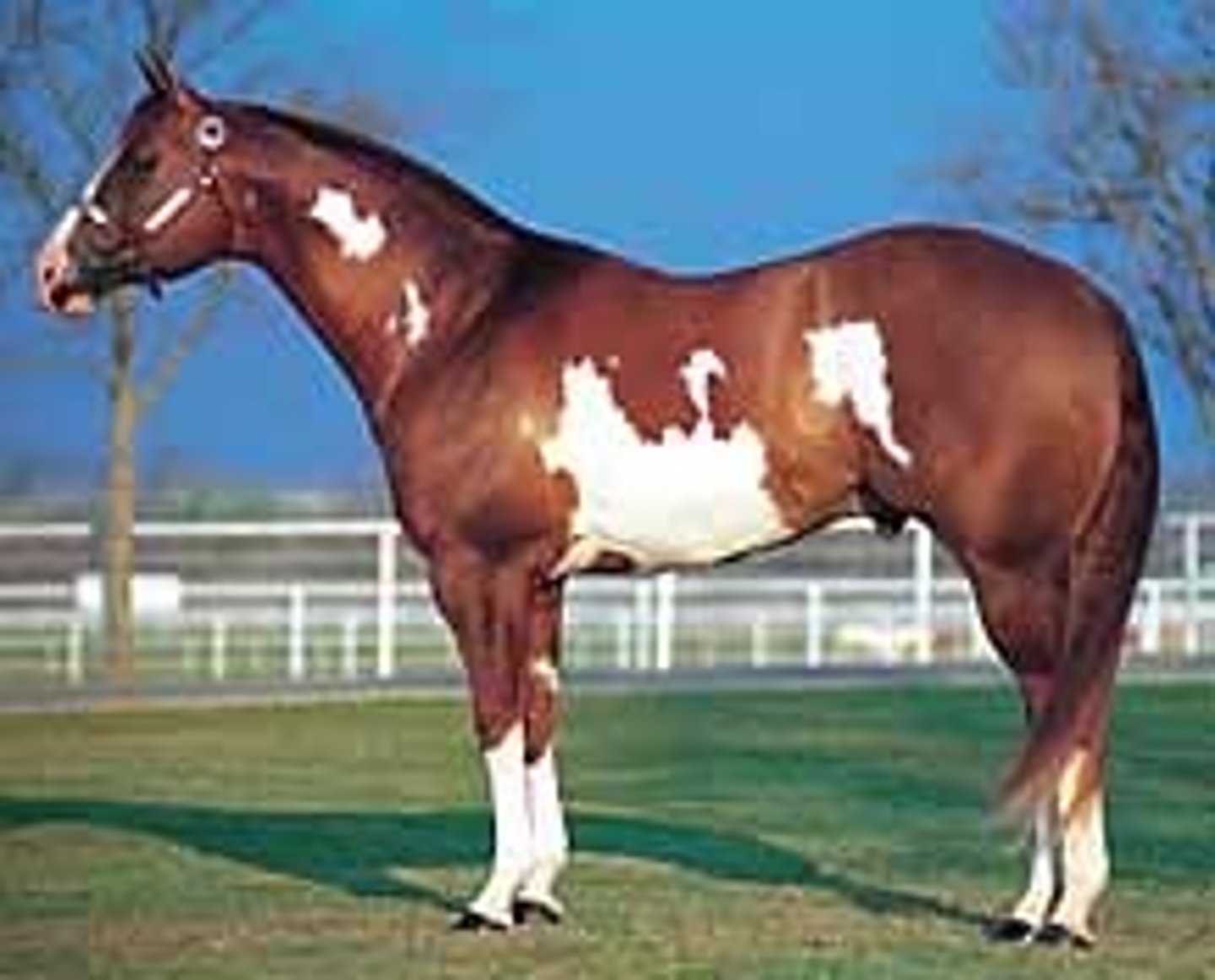
tobiano
color patterns/type of spotting:
white crosses the back
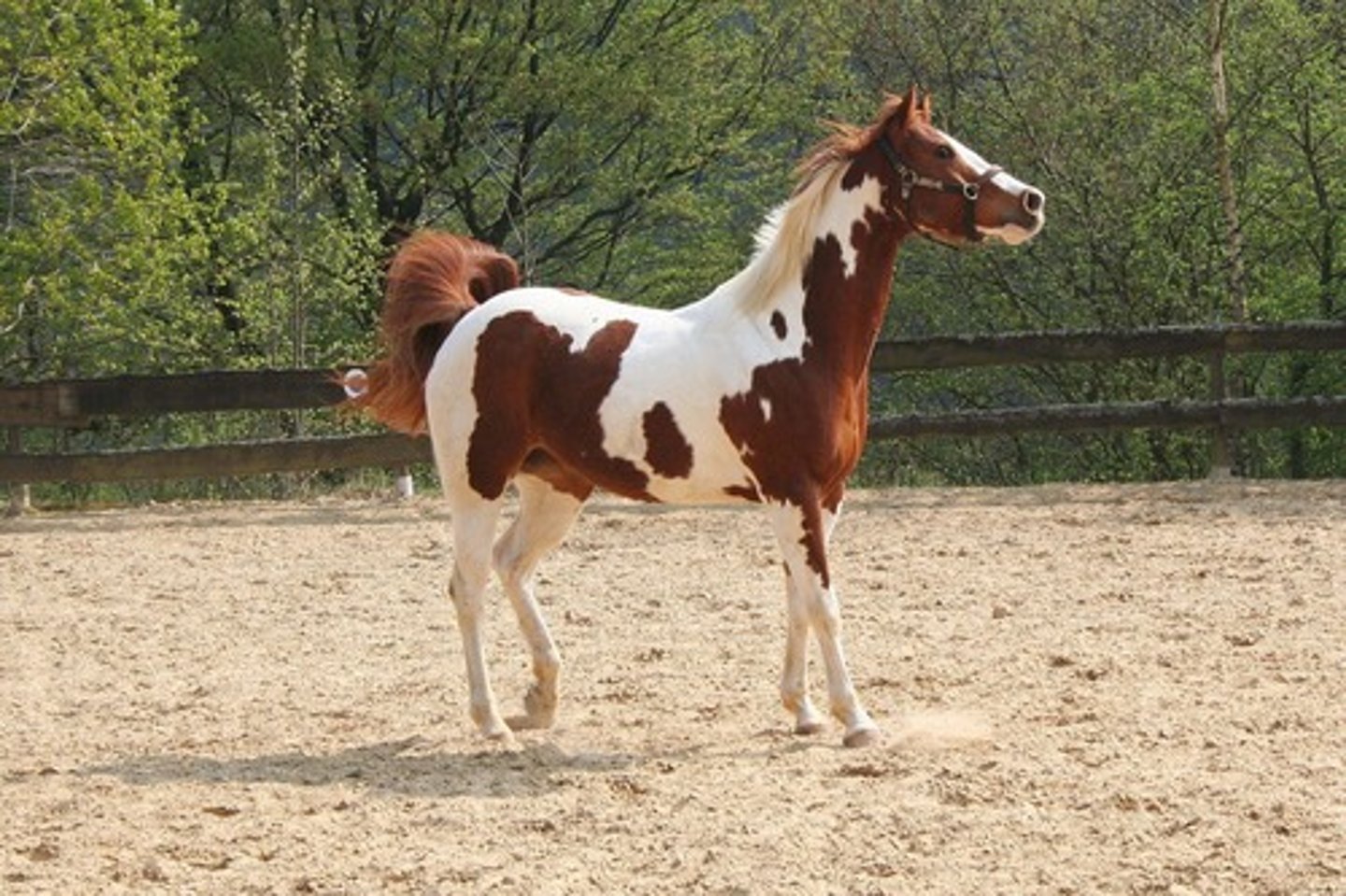
tovero
color patterns/type of spotting:
combination of tobiano and over characteristics
ex. blue eyes

american pinto
breed registries with color requirements:
indian war horses; similar color requirements to American Paint Horse; can be any breed type; no Appaloosa or draft blood allowed
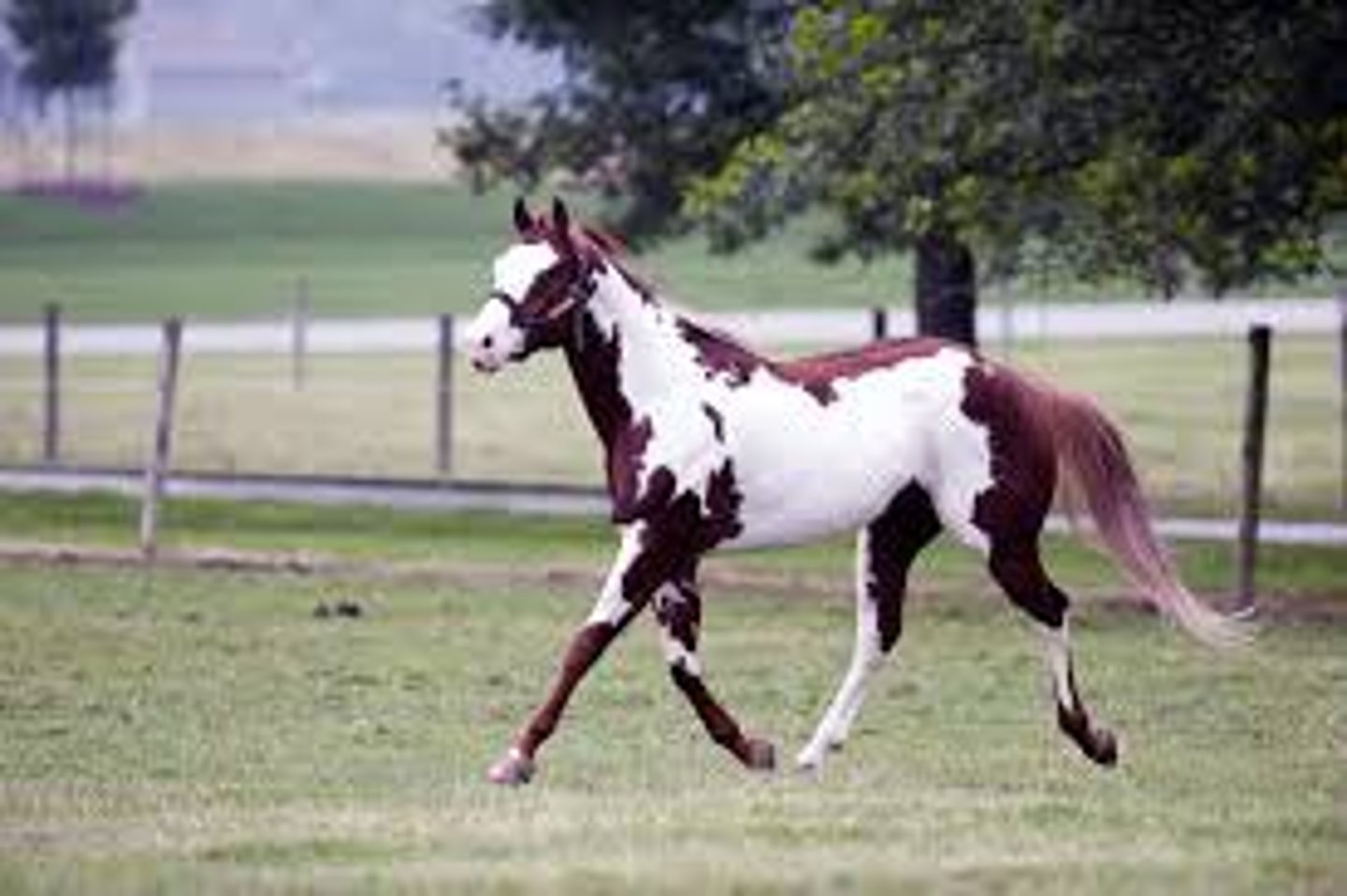
appaloosa
breed registries with color requirements:
developed by New Perce Indians; color characteristics: white sclera, skin is mottled with an irregular spotting, hooves are striped vertically; 2 color patterns: blanket and leopard; uses: racing, noted for endurance and sure-footedness
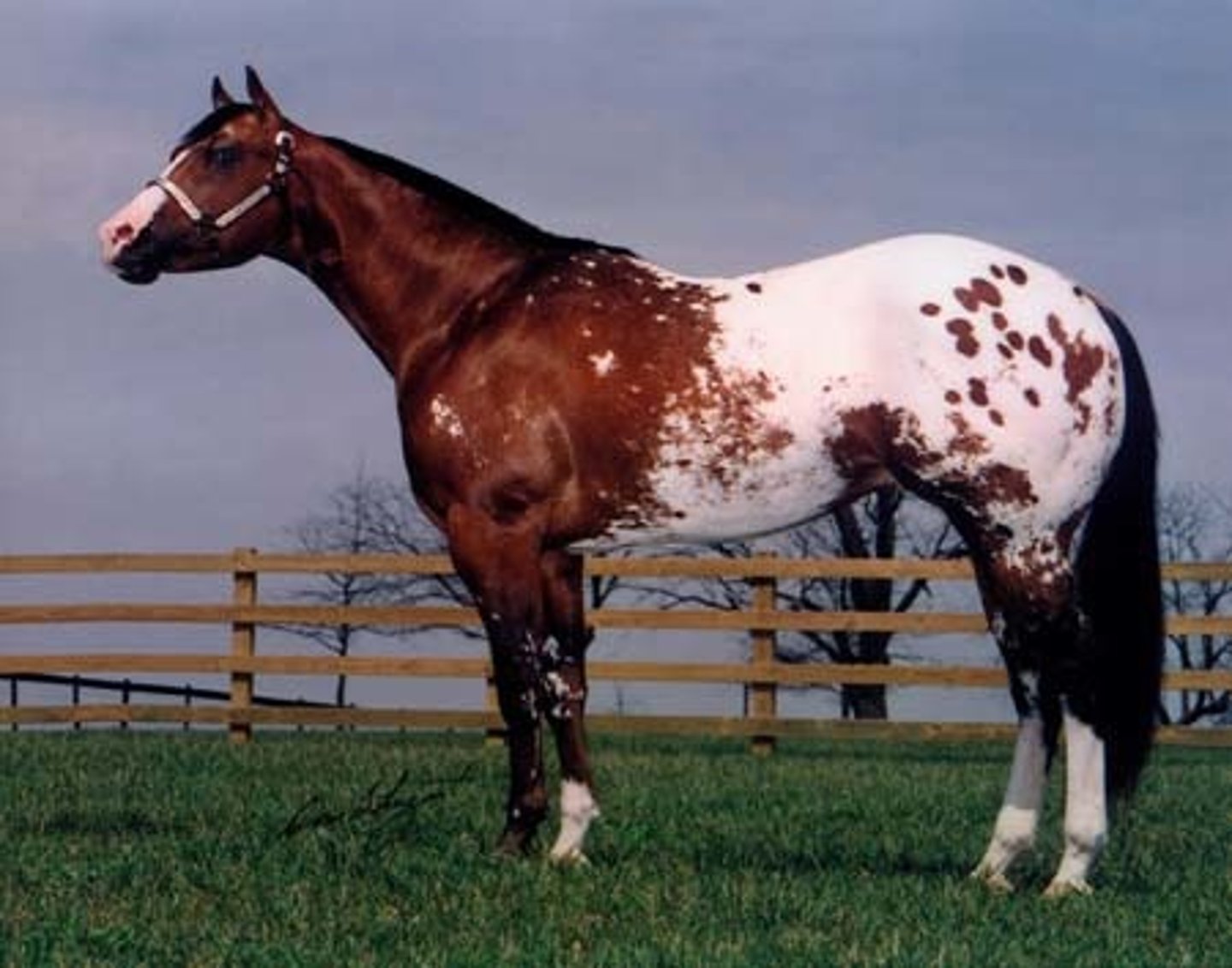
palomino
breed registries with color requirements:
golden in color with white mane; skin must be black, dark or mouse-colored; must have 15% or fewer dark hairs, a lightened sorrel color; can be registered with other breed associations

american buckskin
breed registries with color requirements:
eligible for registry if these colors:
1) buckskin- light, golden
2) dun- smutty
3) grulla- mouse color
4) red dun- points redder than body
stamina and hardy

draft horses
1,500- 2,000 lb.; 14.2- 17.2 hands; large bones and think; war horses
percheron
draft horse:
originated in France; black or gray or a combination; no feathering; much knee and hock action
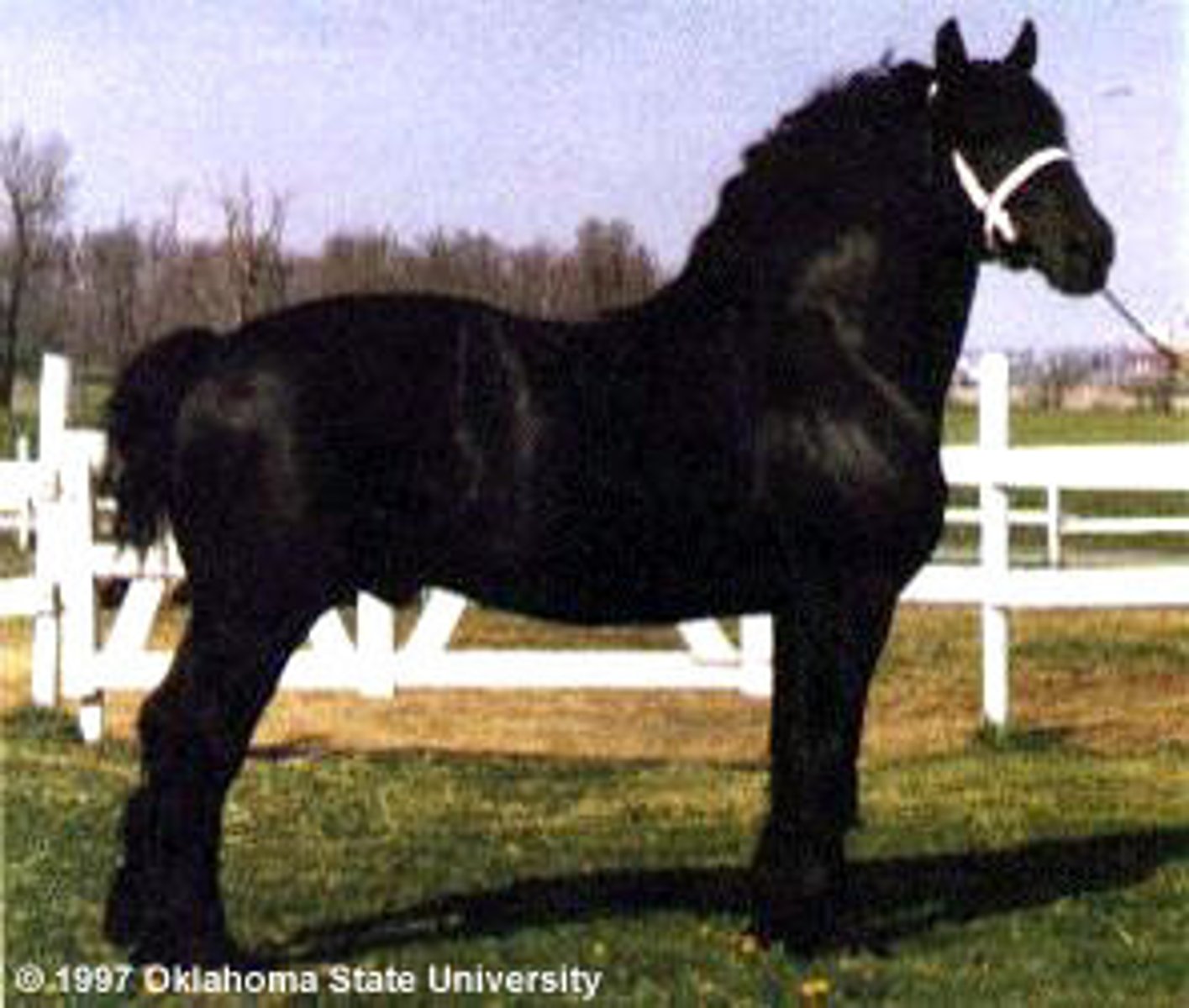
clydesdale
draft horse:
the Budweiser horses; originated in Scotland; feathered legs- disease problems; white face, sorrel or bay color

belgian
draft horse:
originated in Belgium, most massive of the draft horses; known for size and strength
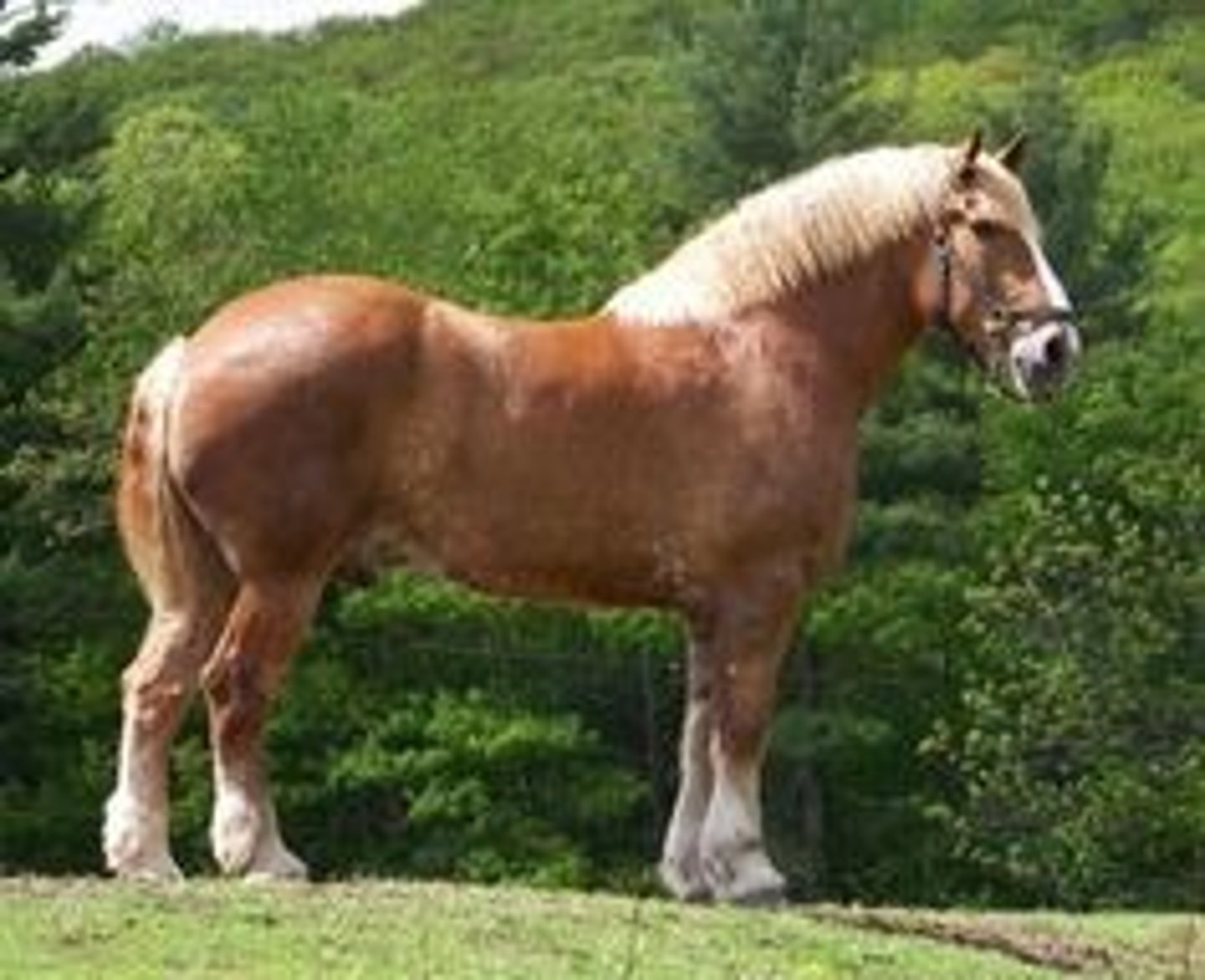
shire
draft horse:
originated in England; tallest of the draft breeds
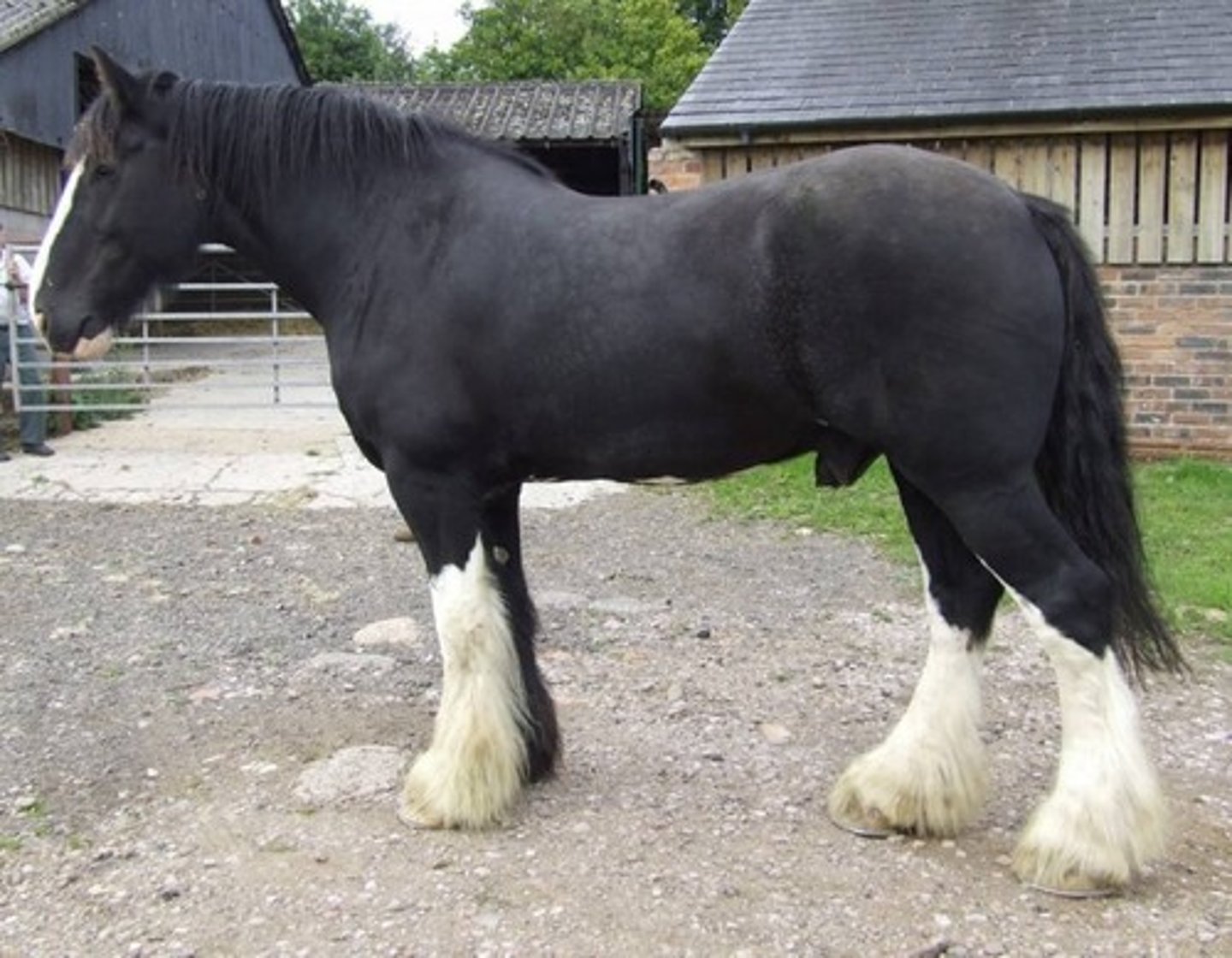
suffolk
draft horse:
originated in England; chestnut color- breeds completely true for color
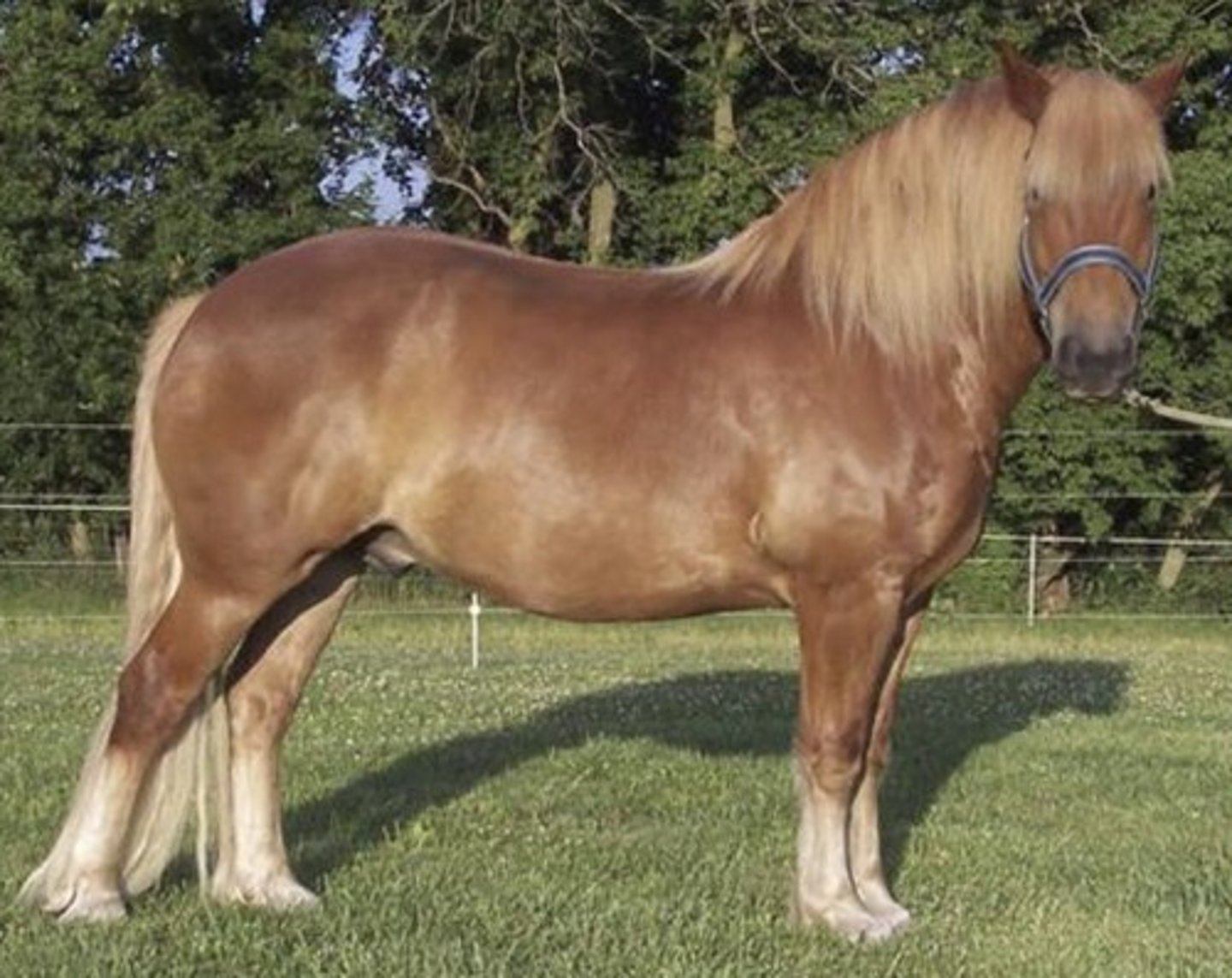
pony breeds
<14.2 hands, <800 lbs.
welsh
pony breed:
originated in Wales; ideal for young children; uses: work, athletic

pony of americas
pony breed:
(POA) Shetland stallion bred to Appaloosa mare or reciprocal cross; must have Appaloosa coloring

shetland
pony breed:
11.2 hands maximum; originated in the Shetland Islands (near Scotland)- cold, damp; used in coal mines; good pony for kids, can be short-tempered and stubborn

miniature horses
NOT ponies; pets, in circuses, expensive; no breeds, all colors, good temperament; maximum height 32-34 in.
paso fino
other breed horses:
South American origin
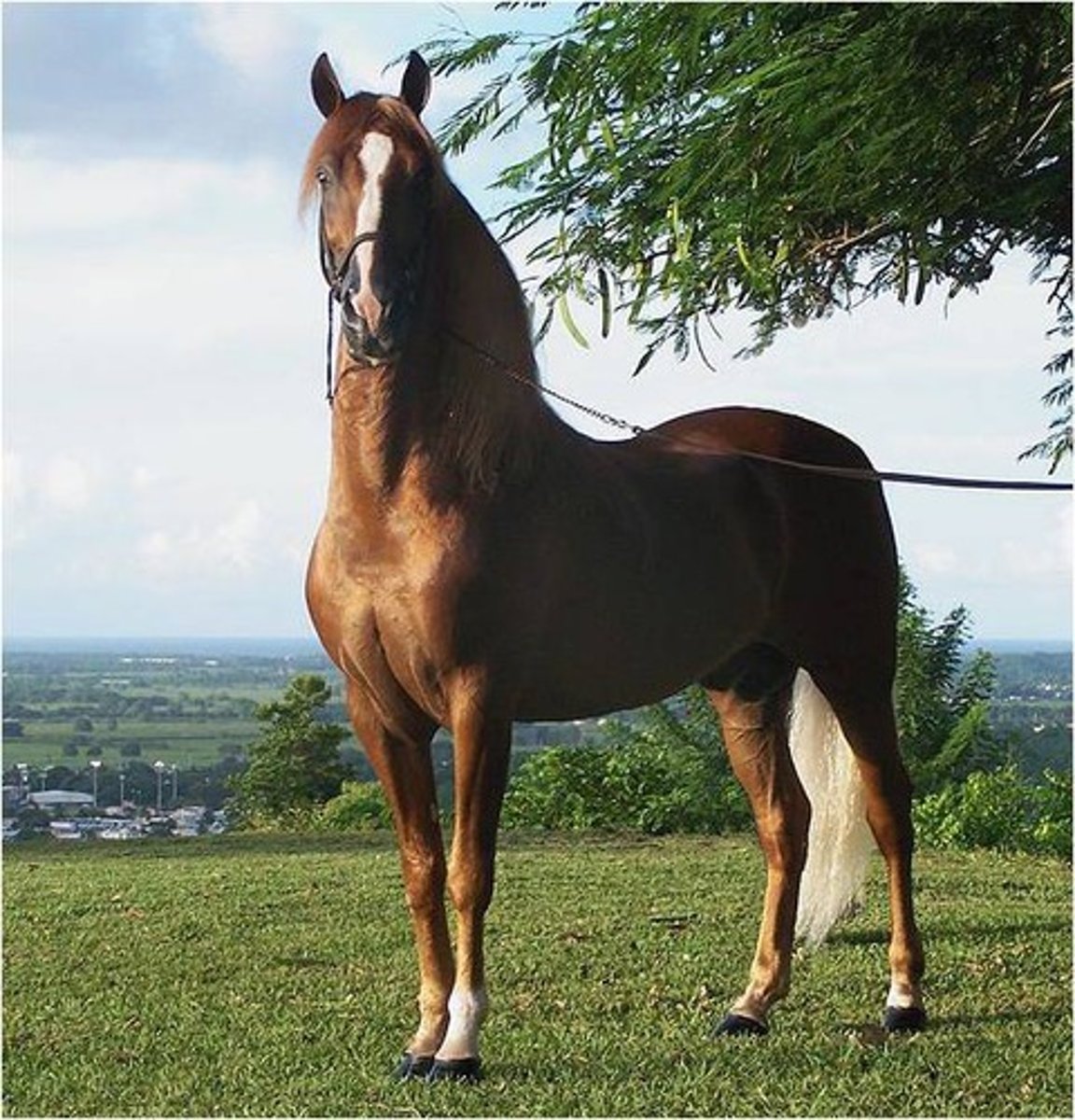
lipizzan
other breed horses:
(or Lipizzaner) gray (with age)→ white; from Lippiza, the imperial Austrian stud farm; warmblood
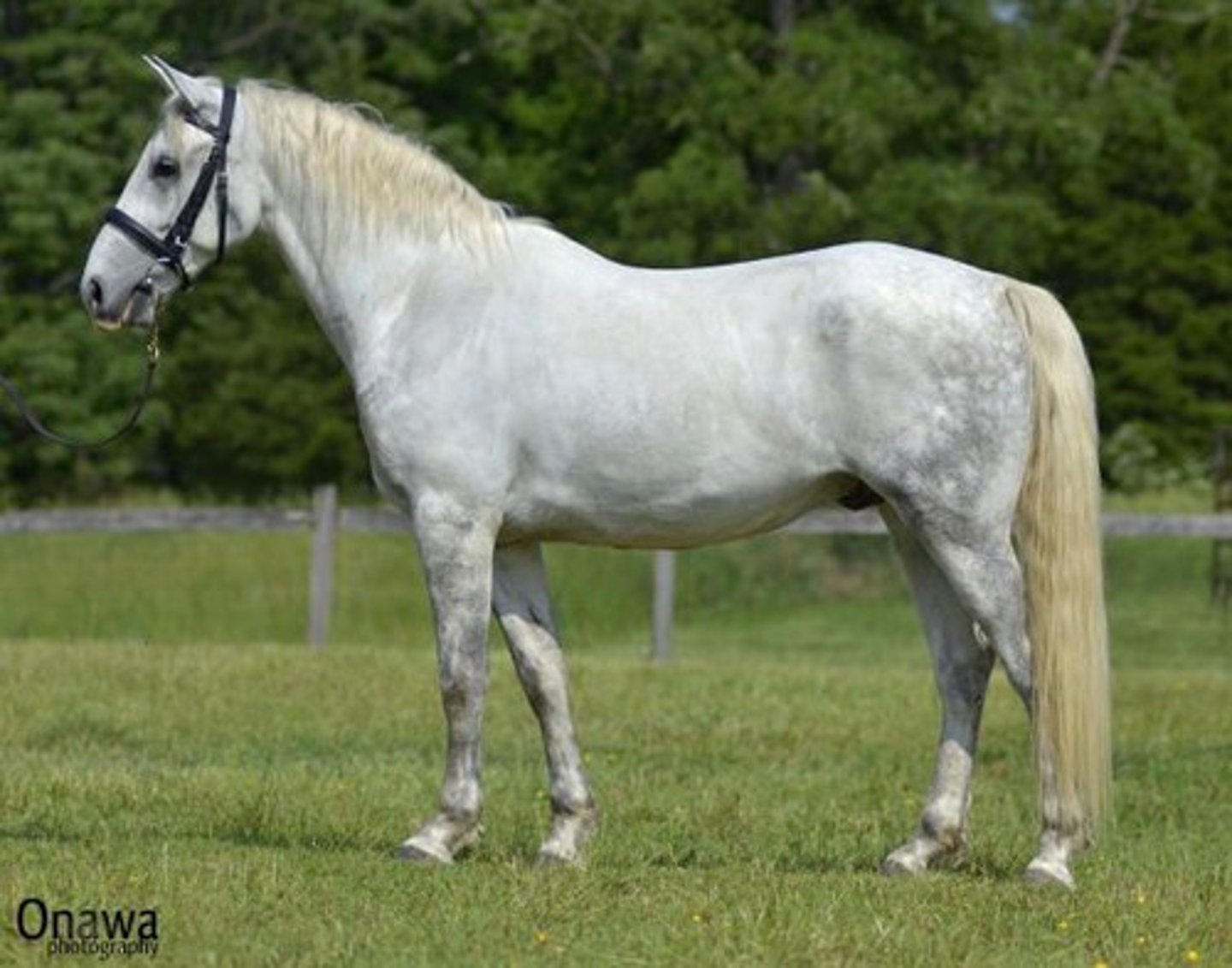
T
T/F:
many other breeds of horses are in existence around the world and are less important in the U.S.
gray variations
color?
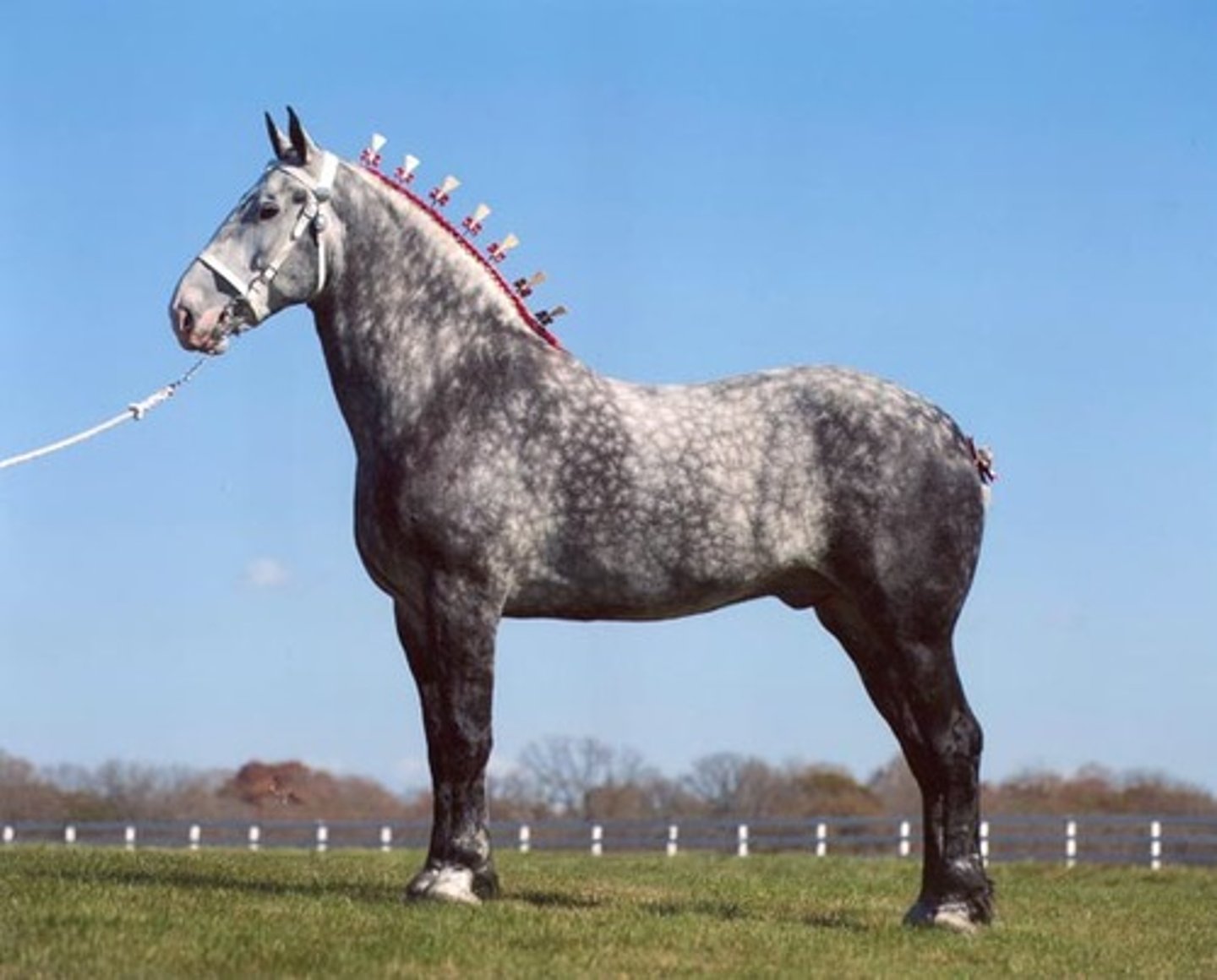
bay variations
color?
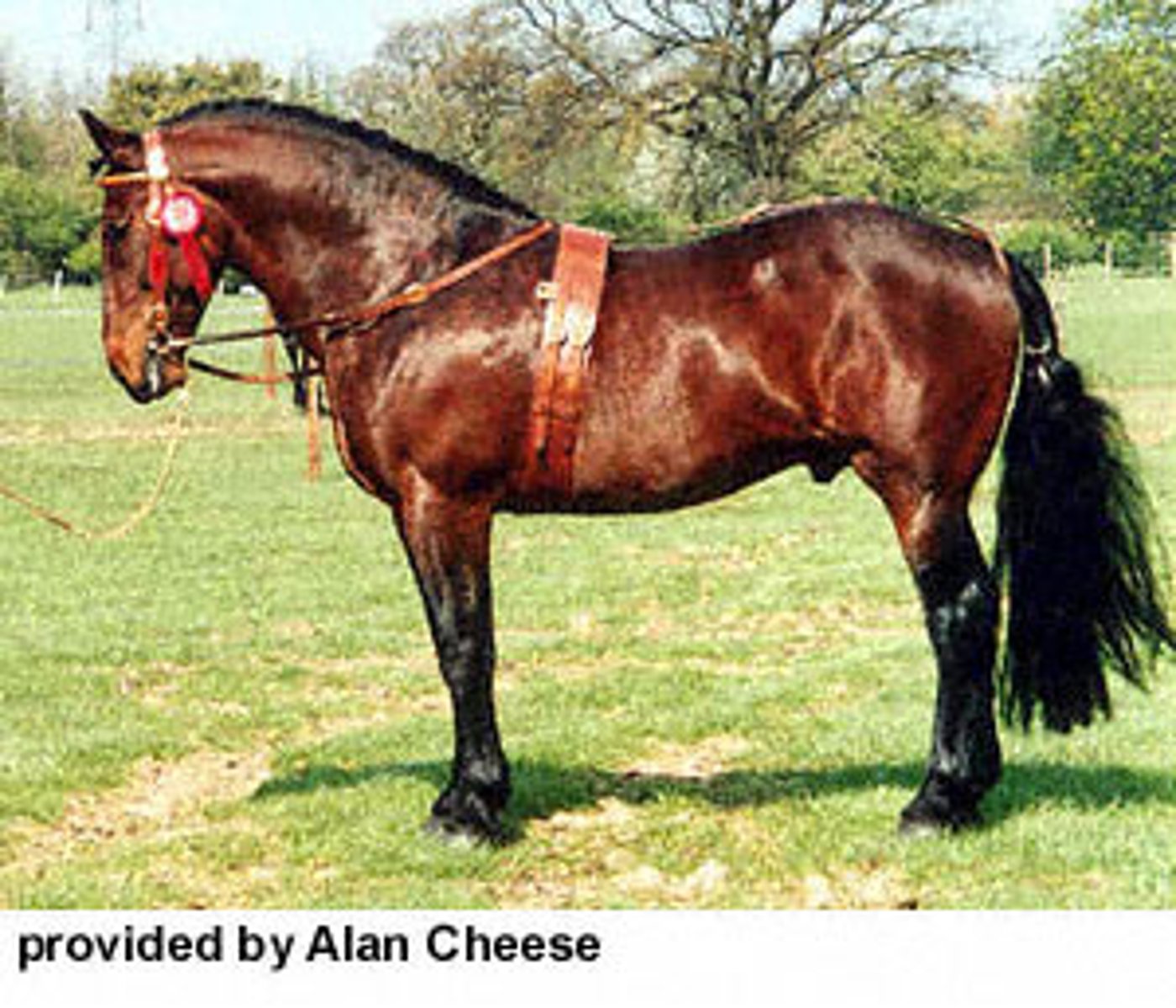
chestnut/sorrel variations
color?
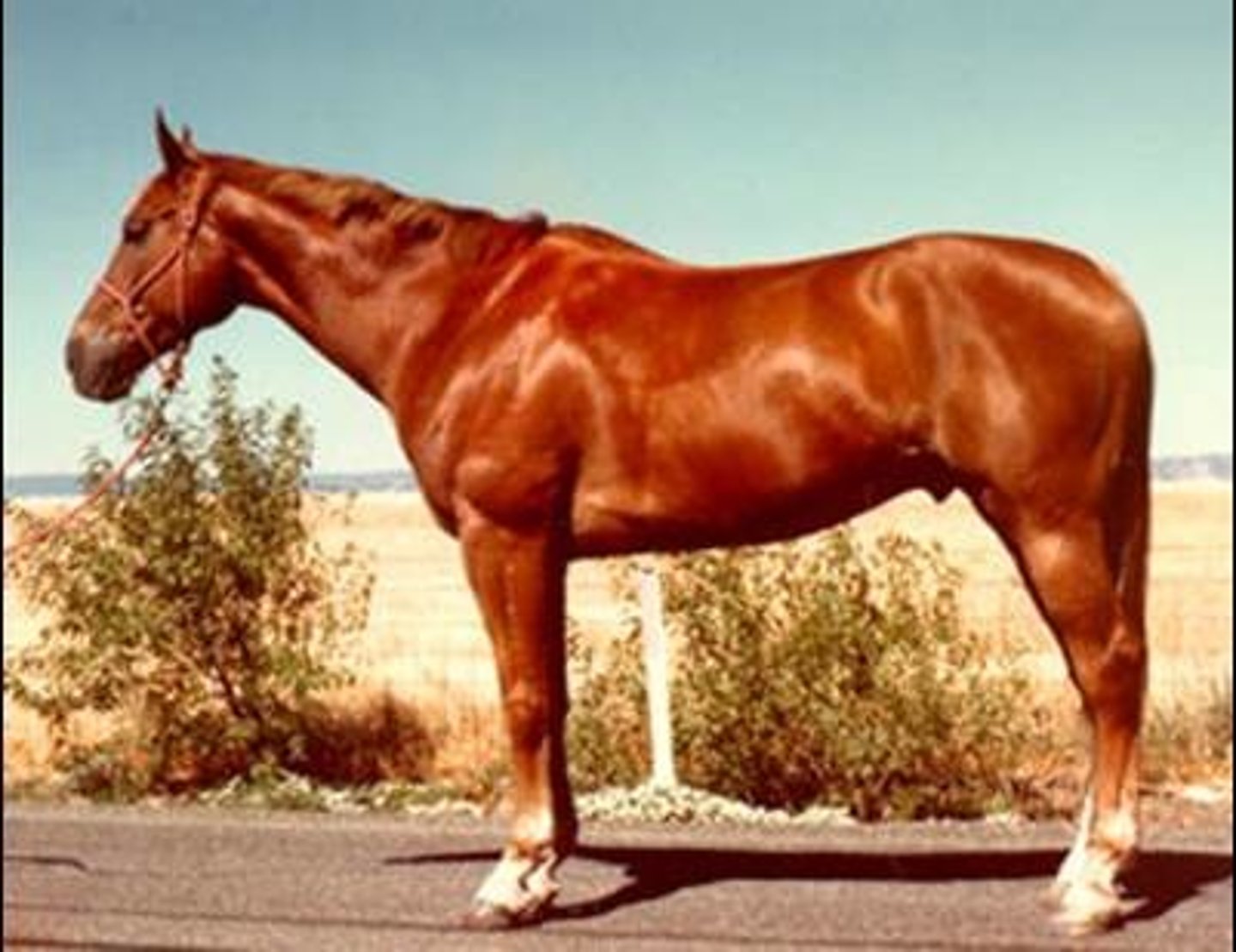
black
color?
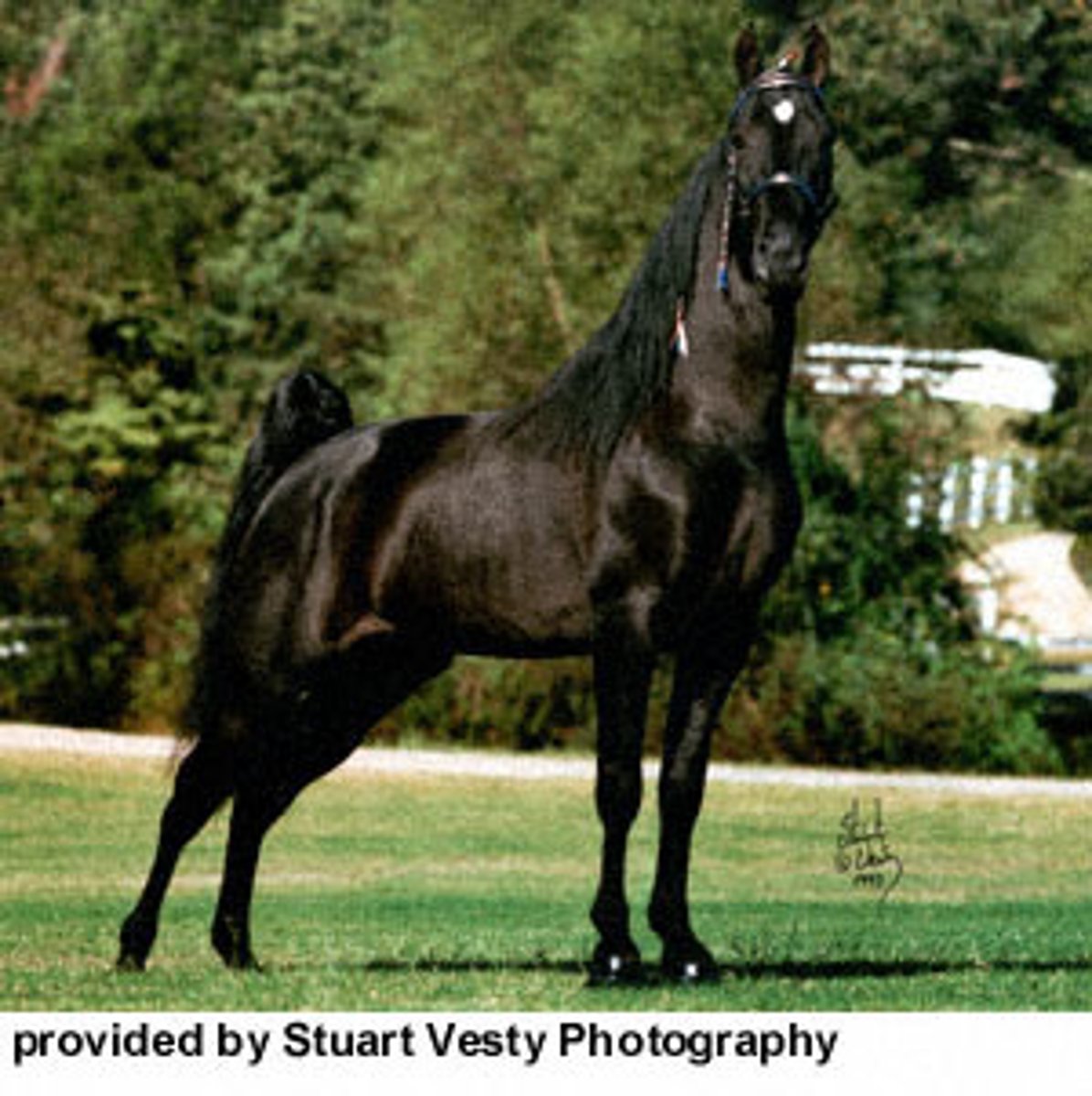
brown
color?
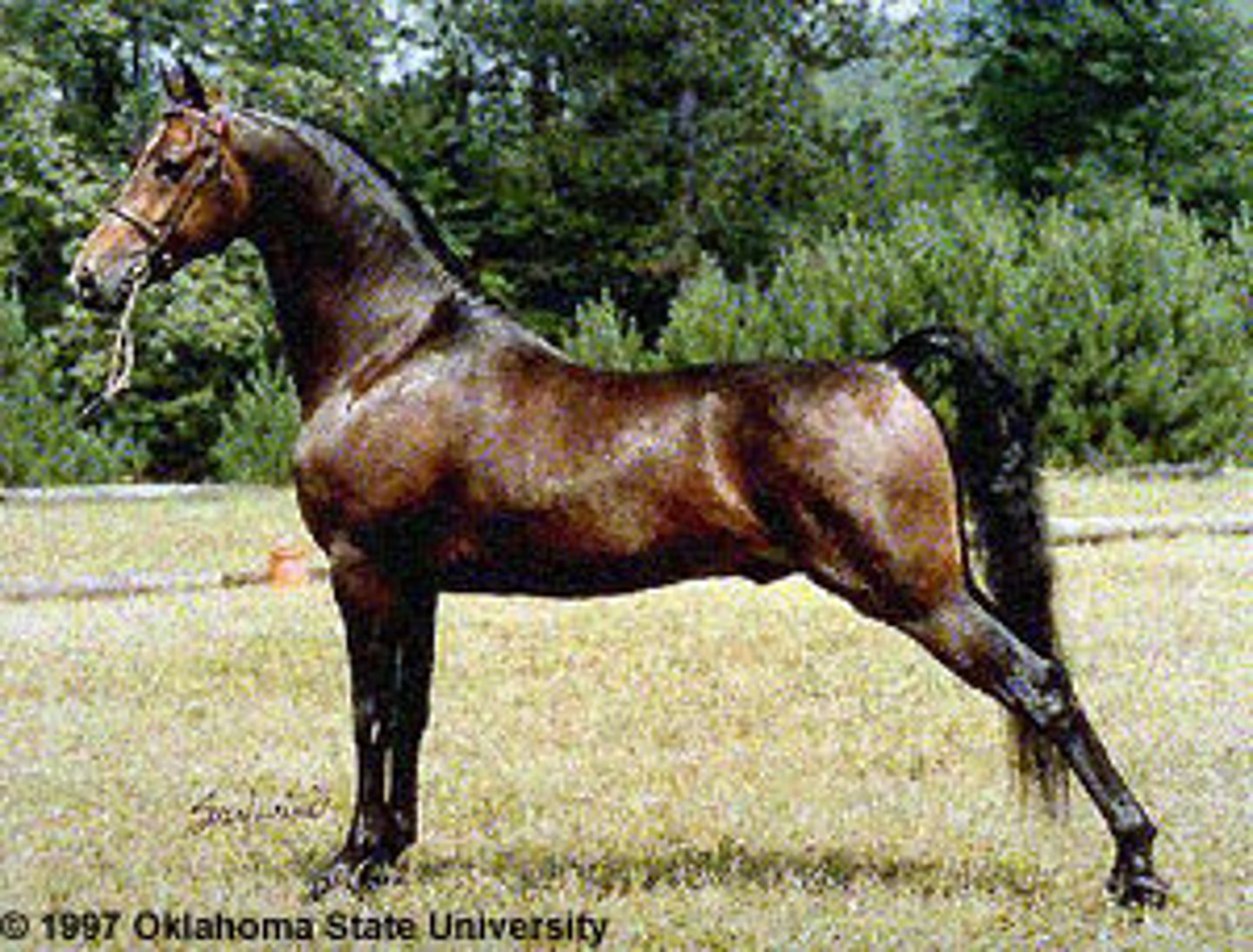
roan
color?
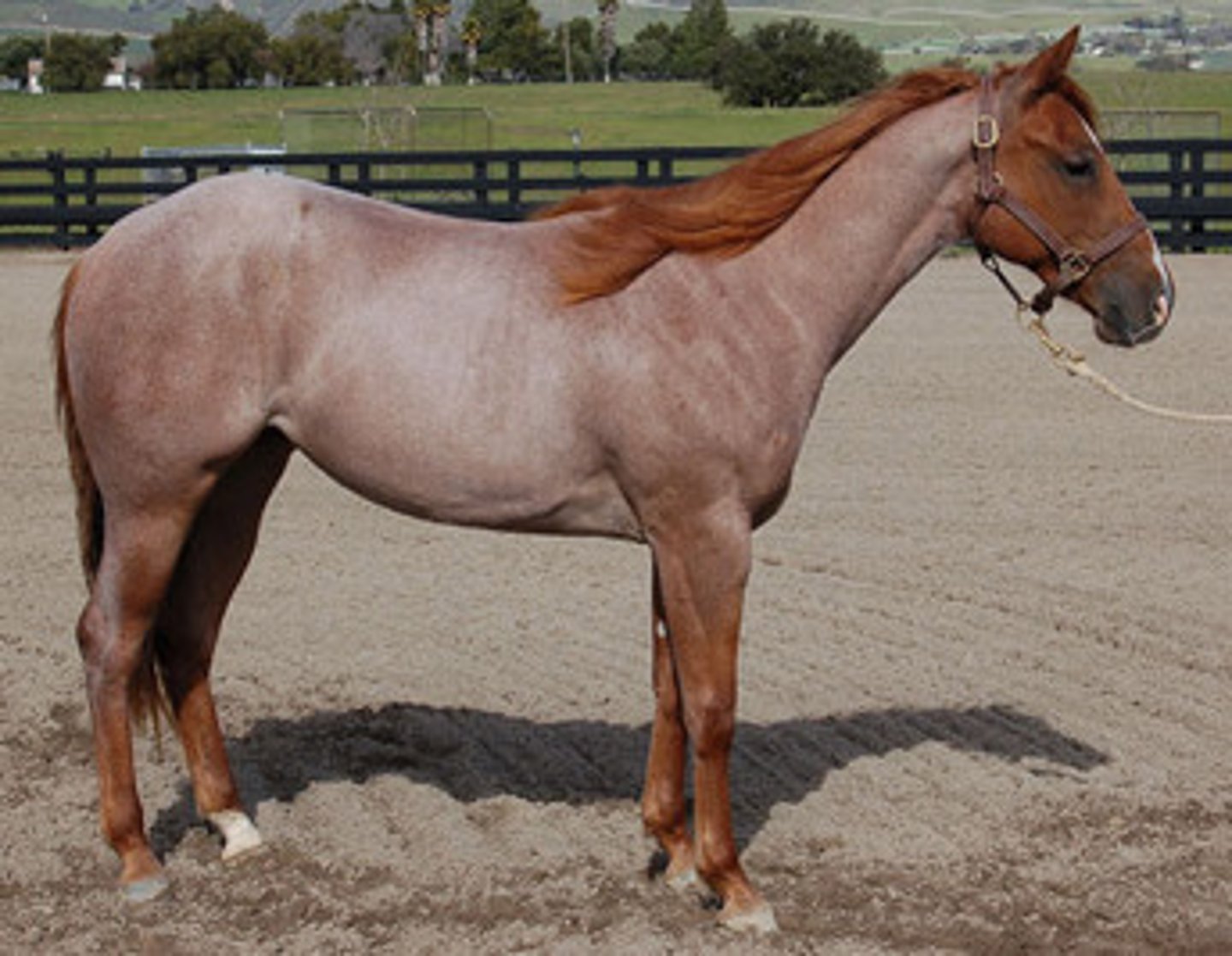
ram (buck)
intact (uncastrated) male sheep, any age
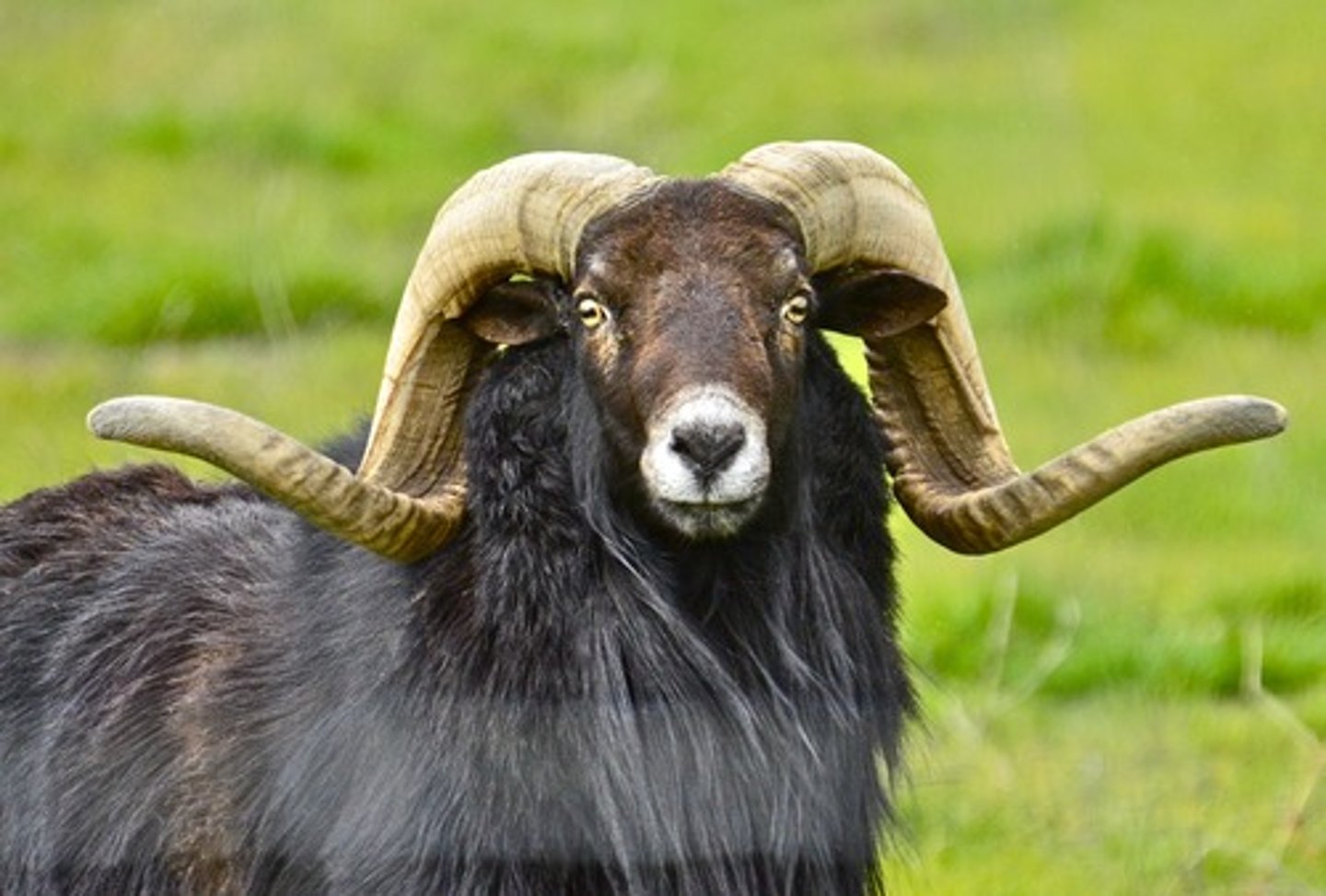
ram lamb
intact male sheep less than about 1 year of age
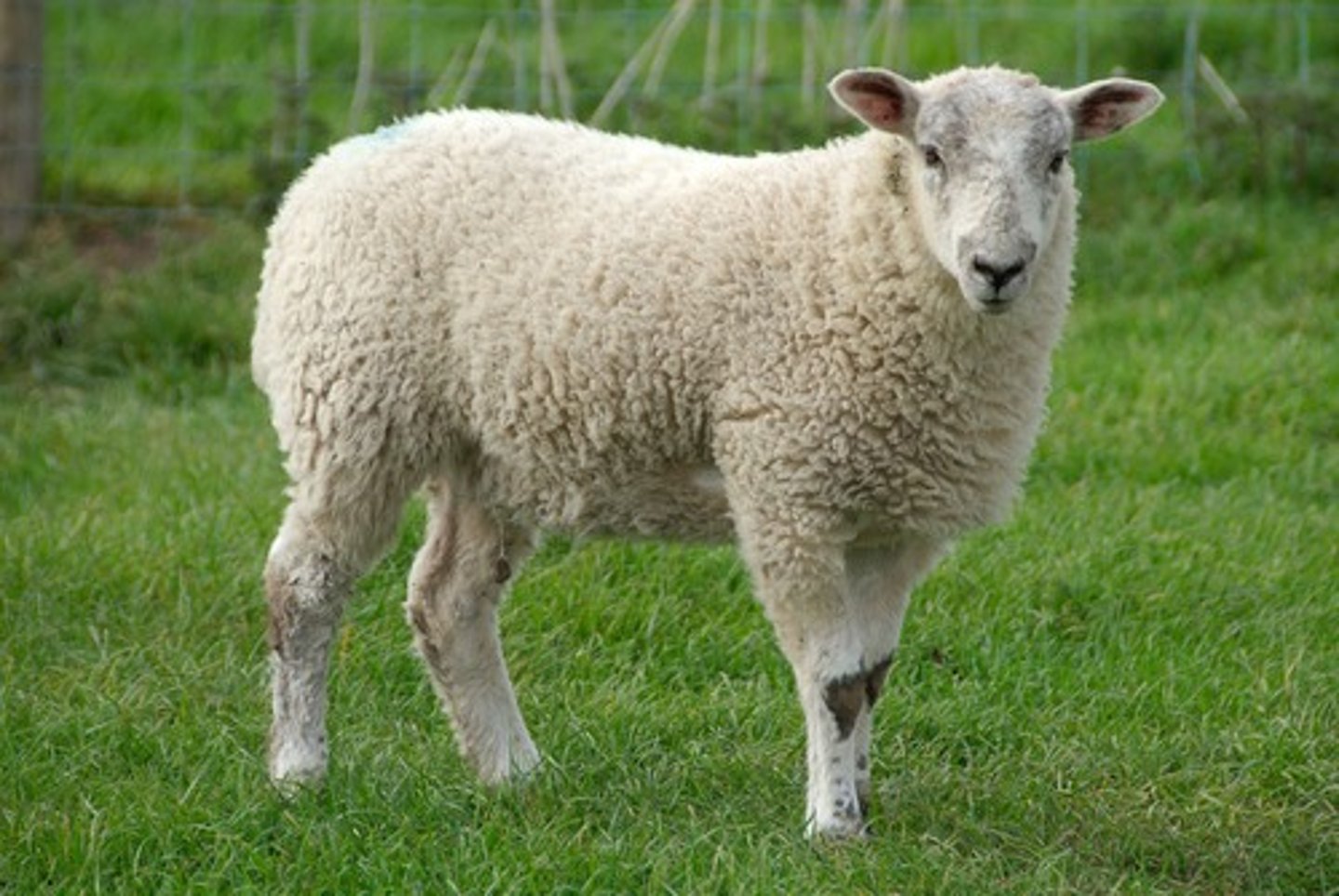
ewe
female sheep, any age (2 nipples)

ewe lamb
female sheep less than 1 year of age
lamb
offspring of sheep of either sex, less than about 1 year of age (look at teeth); joint breaks
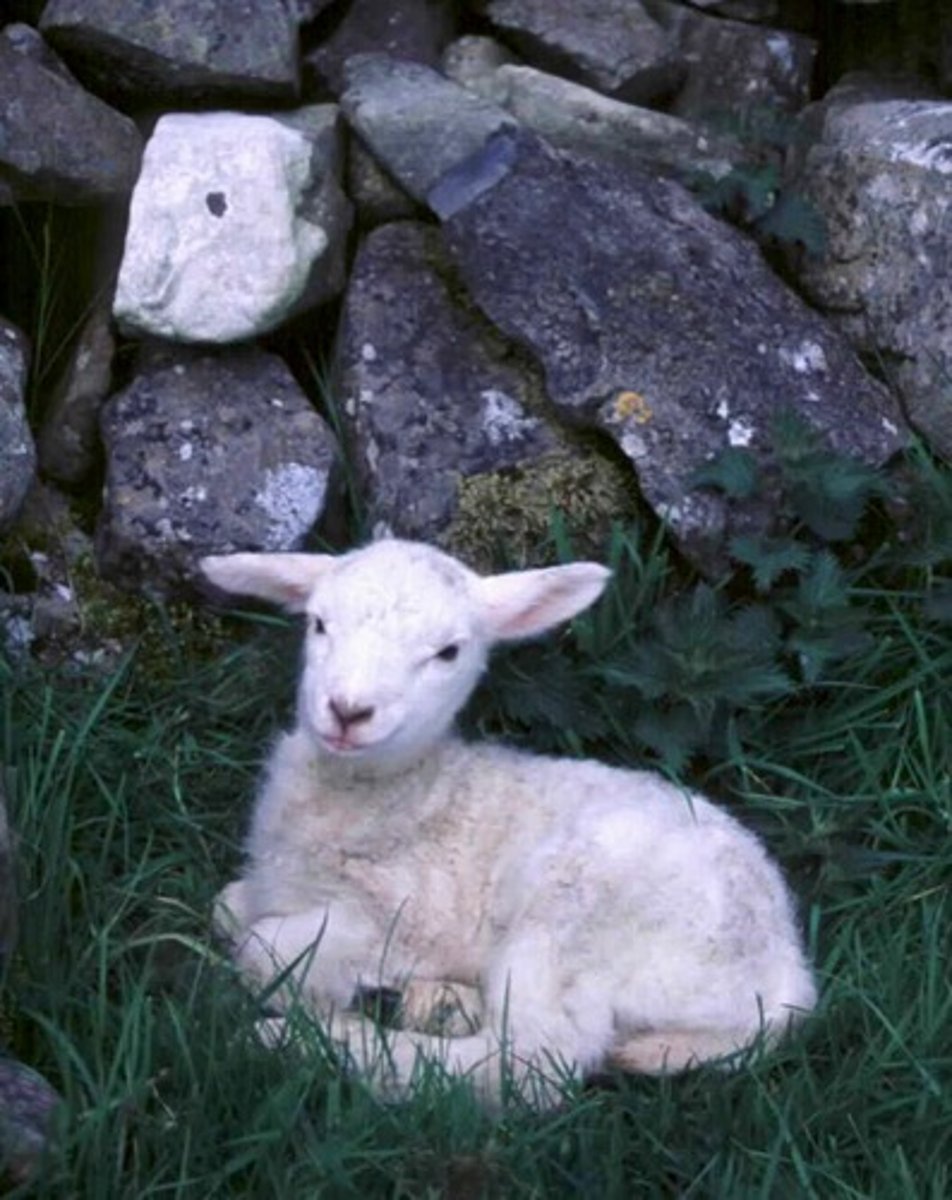
wether
male sheep castrated before reaching sexual maturity
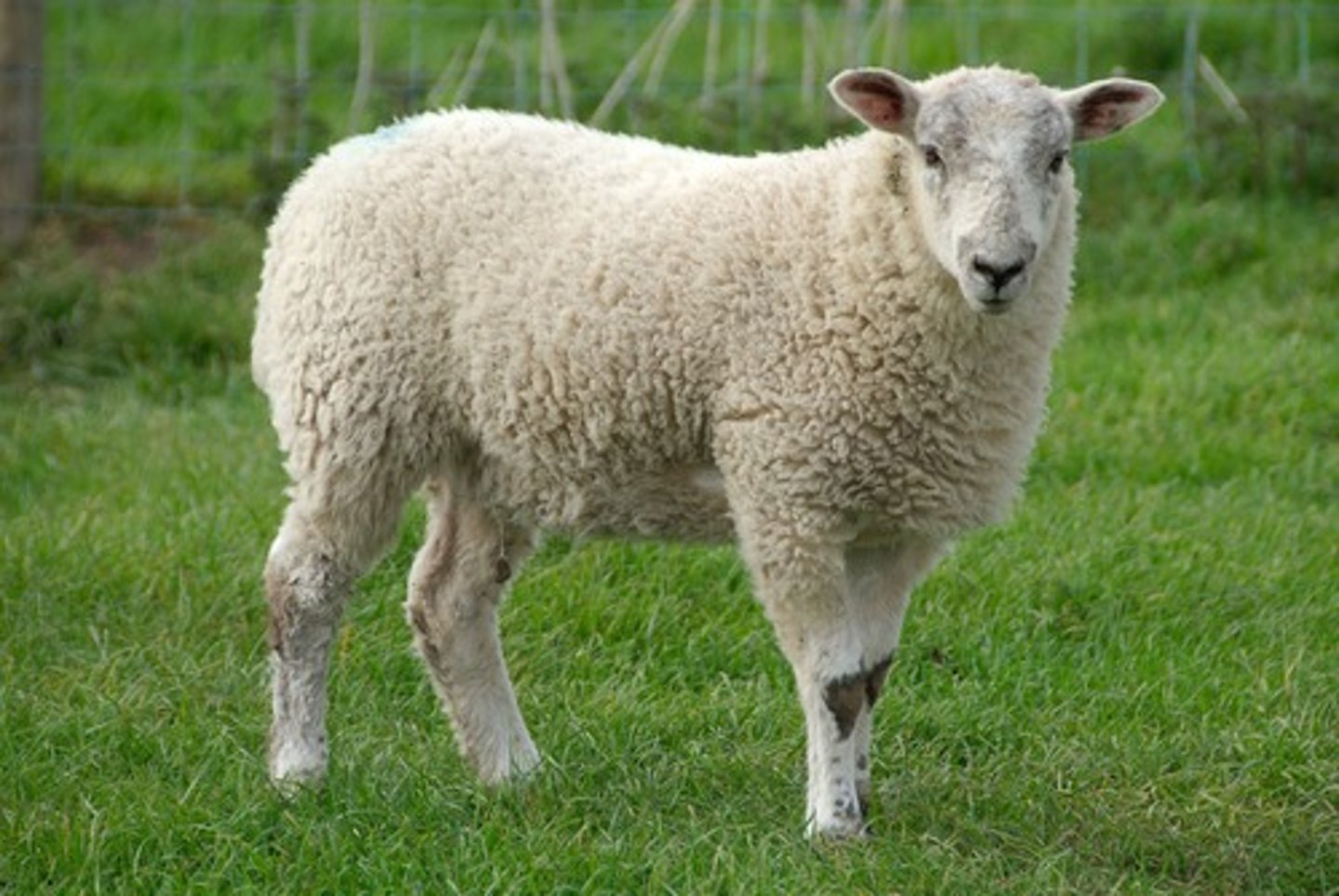
ovine
refers to sheep; species name
wool
fibers produced by sheep (not all sheep)
flock
a group of sheep
fleece
wool produced from one sheep (1 year)
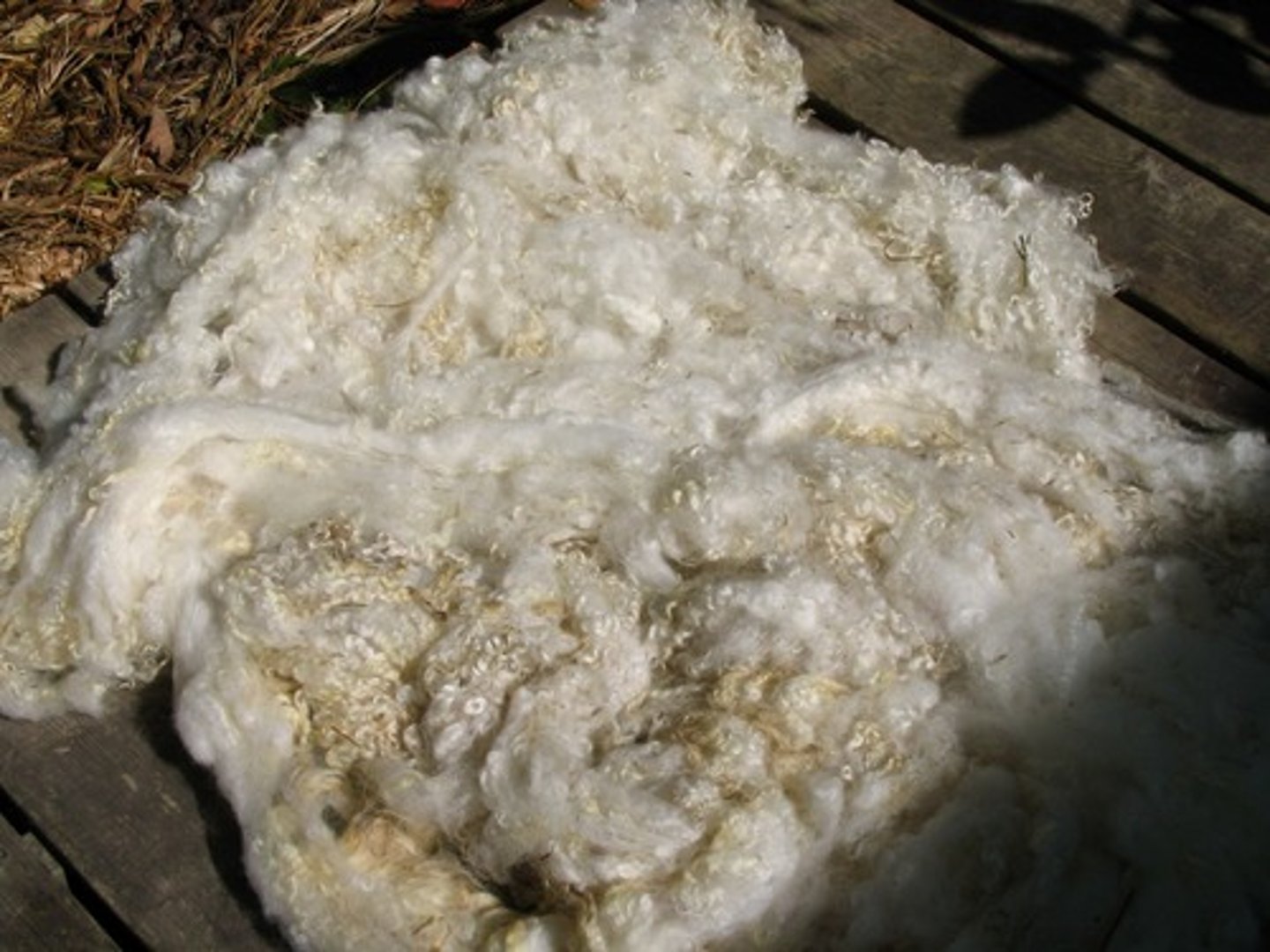
dock
to remove the tail of a sheep; area around the tail
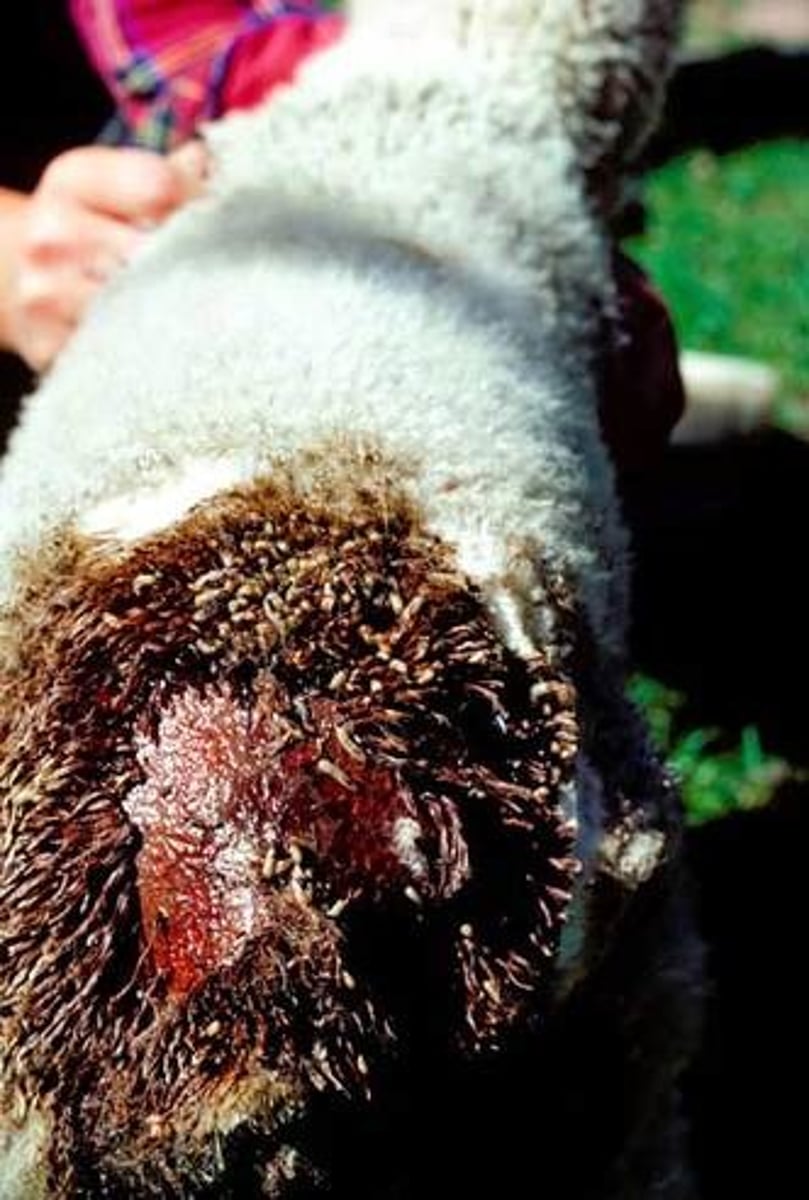
mutton
meat obtained from a mature sheep greater than 1 year of age; joint doesn't break
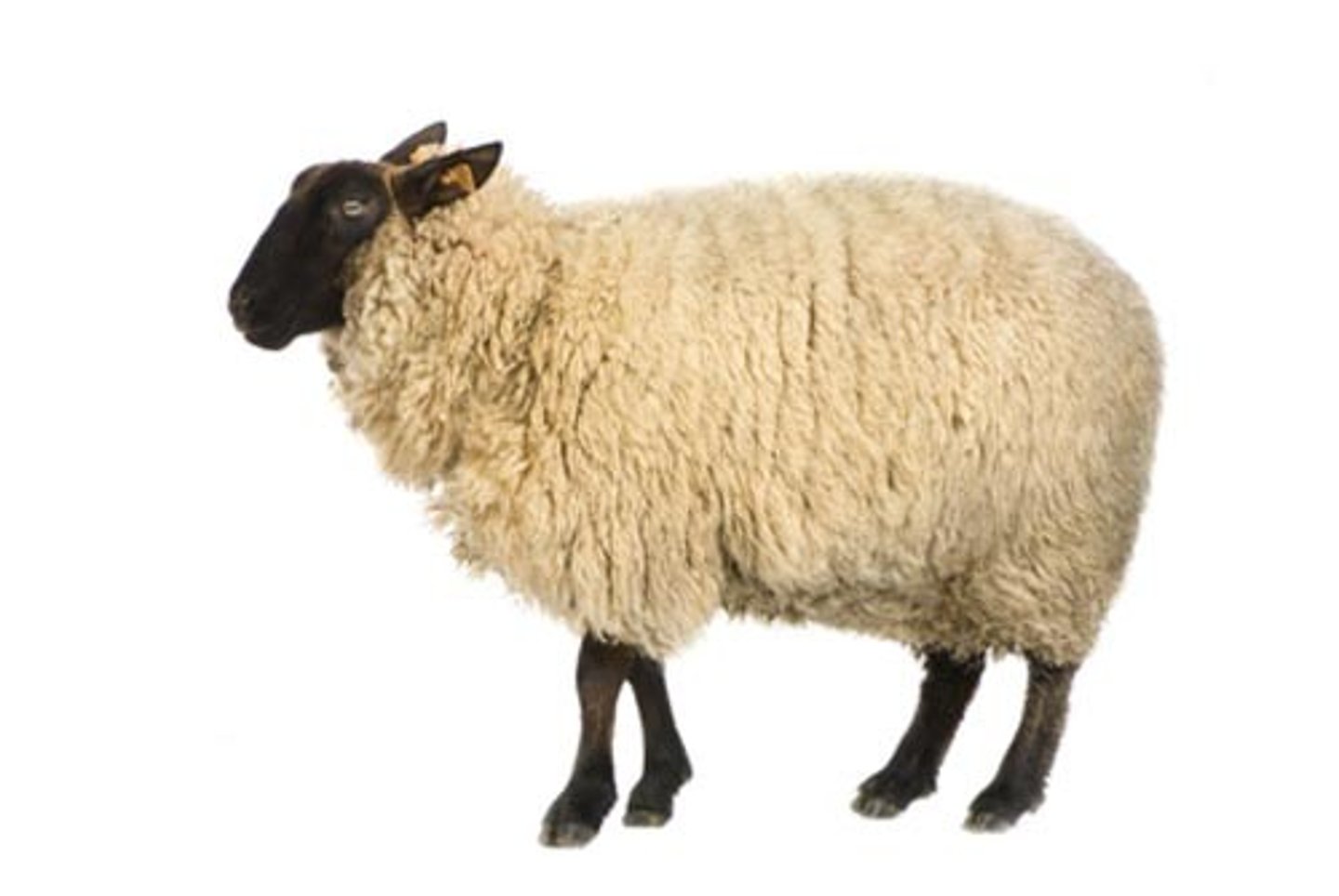
lanolin
oily substance obtained from wool that is used in cosmetics and ointments
adaptability
traits of sheep:
must be able to produce under conditions in which they are raised; can stand dramatic things such as weather and parasites (stomach worms)
prolificacy
traits of sheep:
number of lambs born per ewe
growth rate
traits of sheep:
faster growing lambs
carcass merit
traits of sheep:
2 tissues= muscle and fat (=liability); can change fat through feeding
fleece traits
traits of sheep:
grease fleece weight, clean fleece weight (10th inch back fat, 1/2 weight= dirt, grease), staple length (how long wool is (long= better/impacts weight); grade (fineness or diameter= how fine wool is/soft) finer fiber= higher $ per lb.
fine-wool sheep breeds
(primarily for wool production) white in color (absence of black/brown fiber); rams can be either horned or polled; advantages: wool quality and quantity, hardiness, adaptability to range conditions, out-of-season breeding (breed in western US); slow growth rate; optional castrated
rambouillet
fine-wool sheep breed:
France; horned (=harder to handle) or polled rams; dominate in numbers in the US; pink nostrils; low productive rate

merino
fine-wool sheep breed:
(delaine) Spain; major breed in Australia and New Zealand (spanish breed); finest wool (have more body folds); can be horned, heavy great weight; basis for the Rambouillet
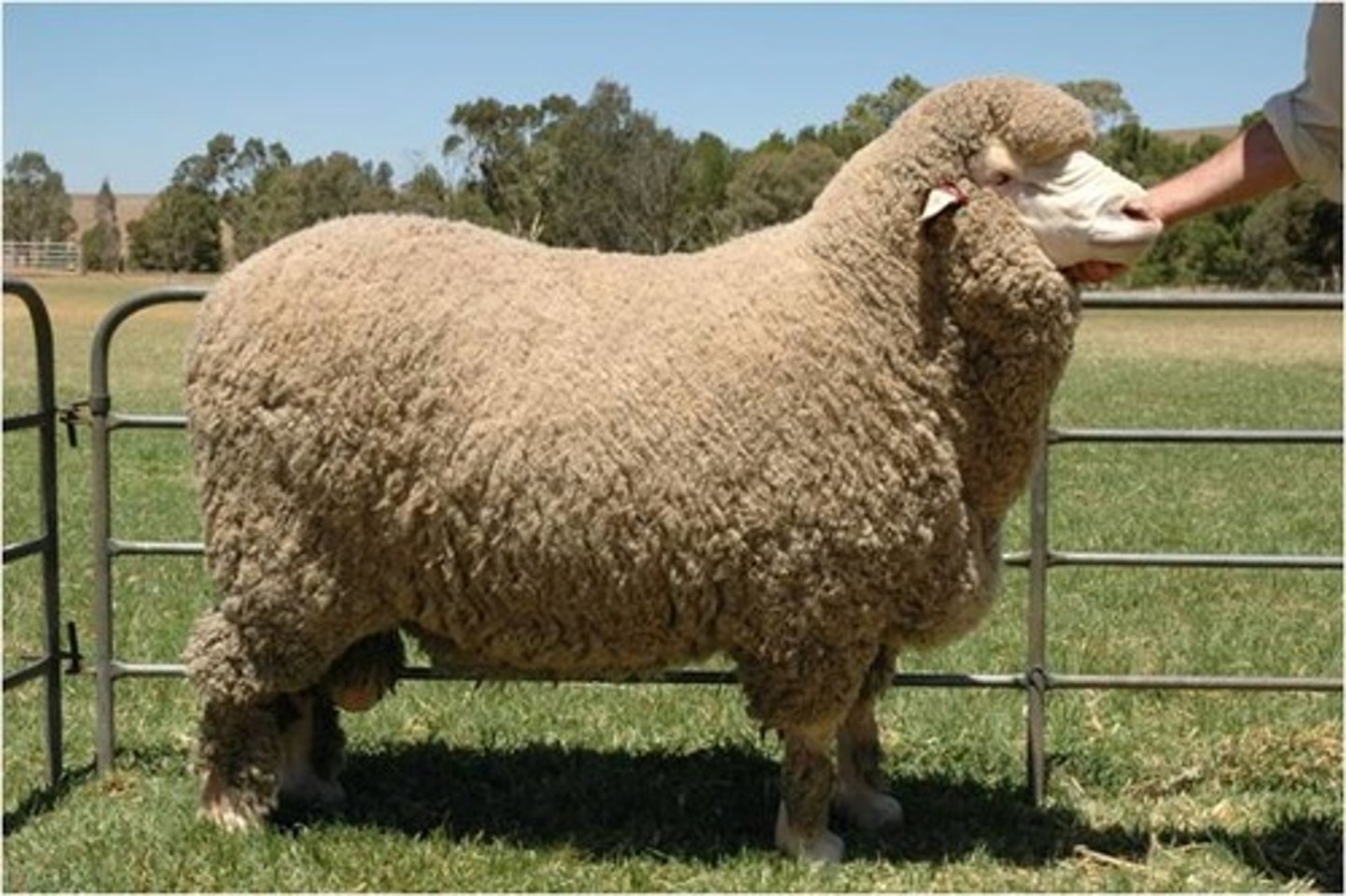
debouillet
fine-wool sheep breed:
Rambouillet x Merino; good sheep= functional sheep; similar to the Rambouillet
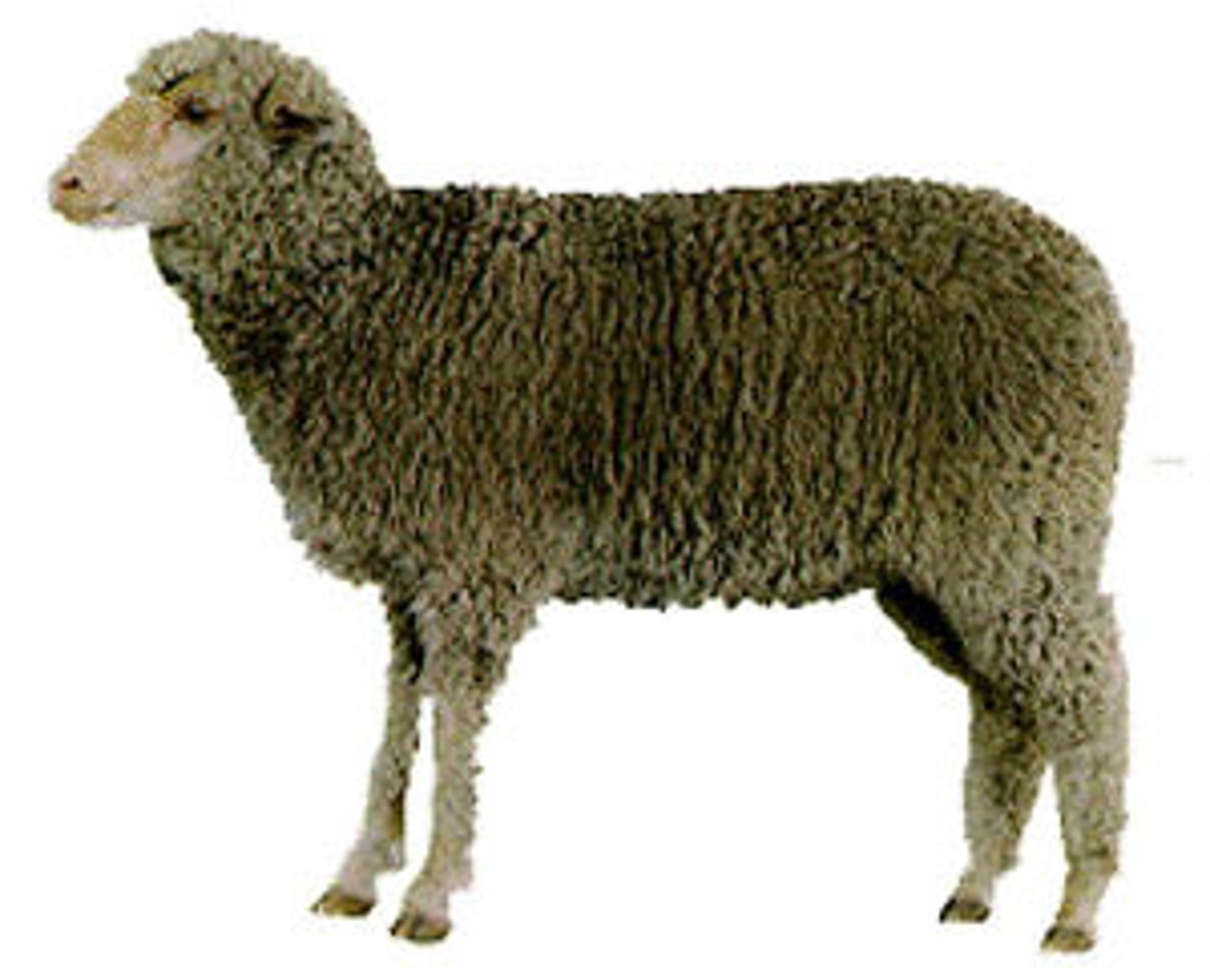
long-wool sheep breeds
originated in Great Britain, England; 6 in→ 1 ft. of wool per year; very long, coarse wool; advantages: 14-16 lb./sheep/yr.; long staple, high-yielding fleeces
lincoln
long-wool sheep breed:
big sheep= more wool/length
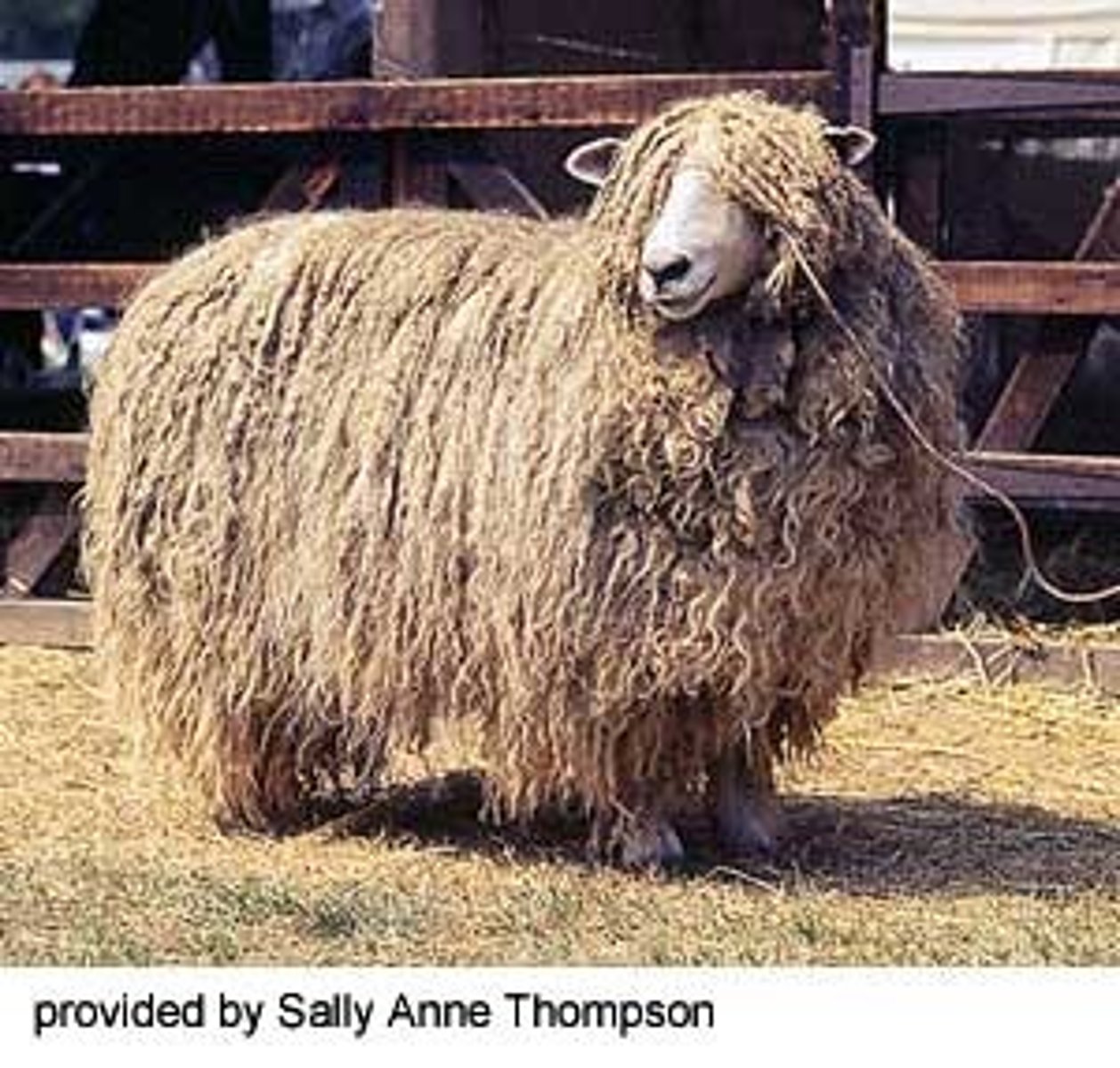
cotswold
long-wool sheep breed:
little low performing sheep
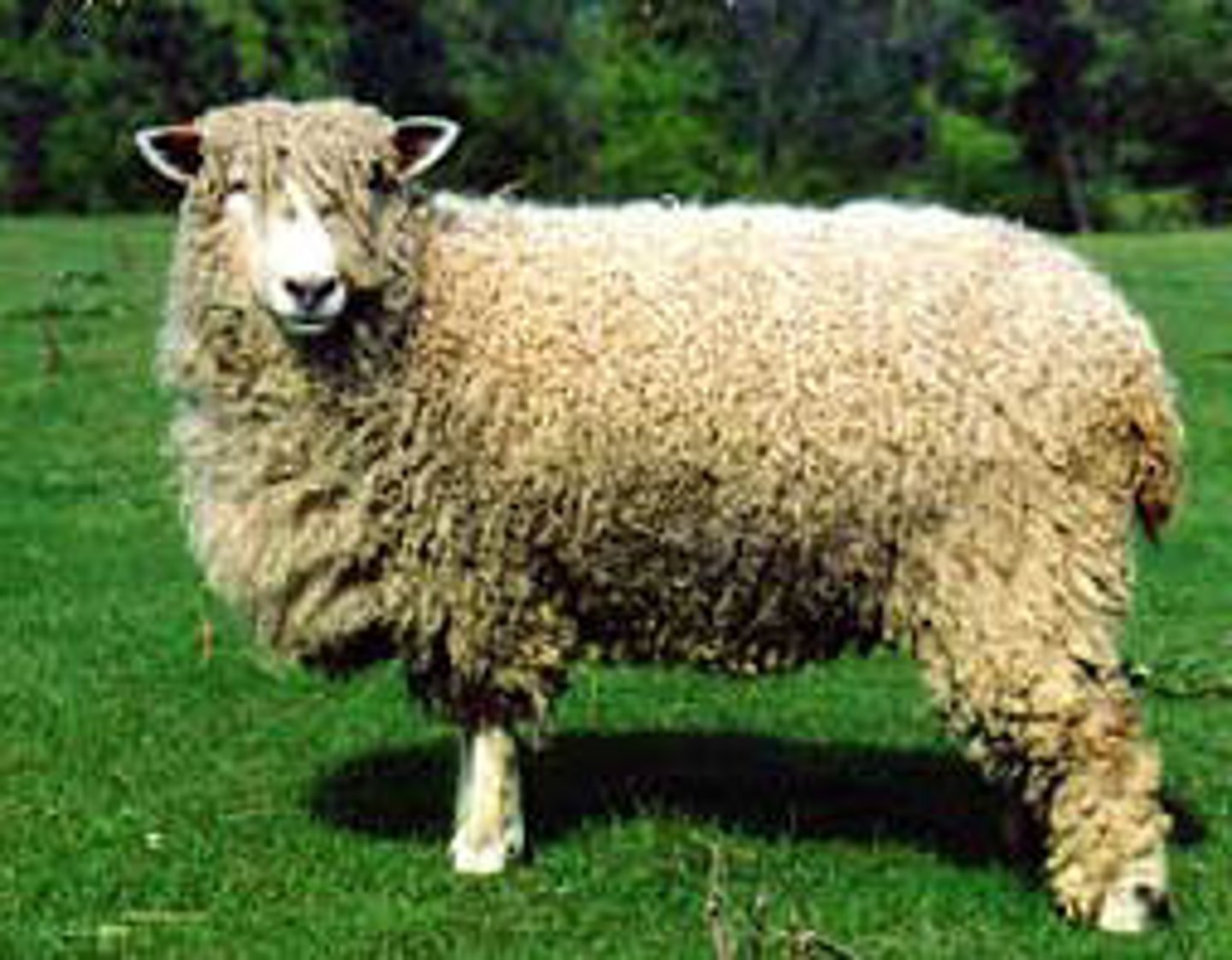
leicester
long-wool sheep breed:
important in Europe for breeding; bare-legged/silk headed
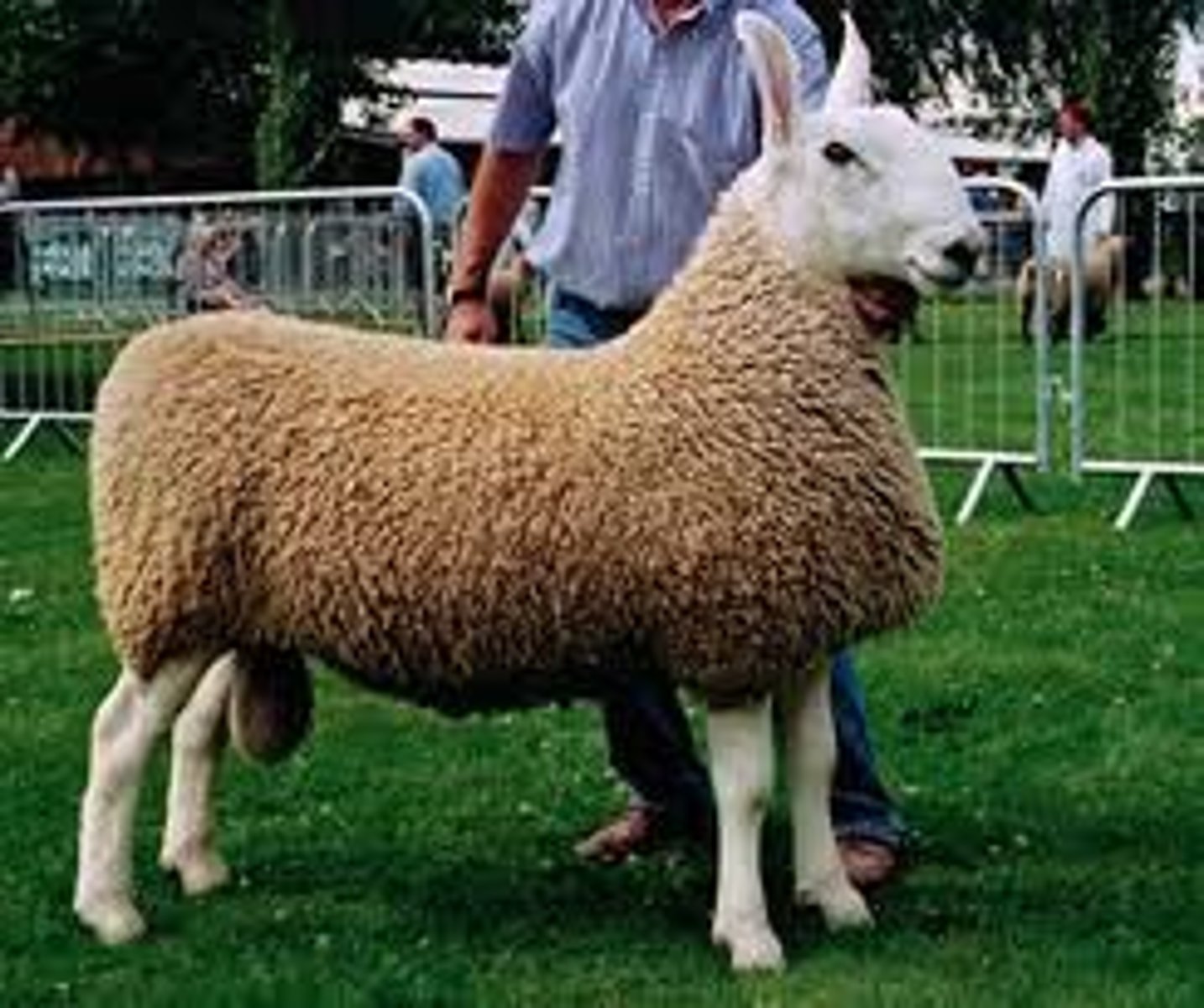
romney
long-wool sheep breed:
shorter staple; genetic resistance; no foot rod, black nostrils, dark pigmentation; wool is more open
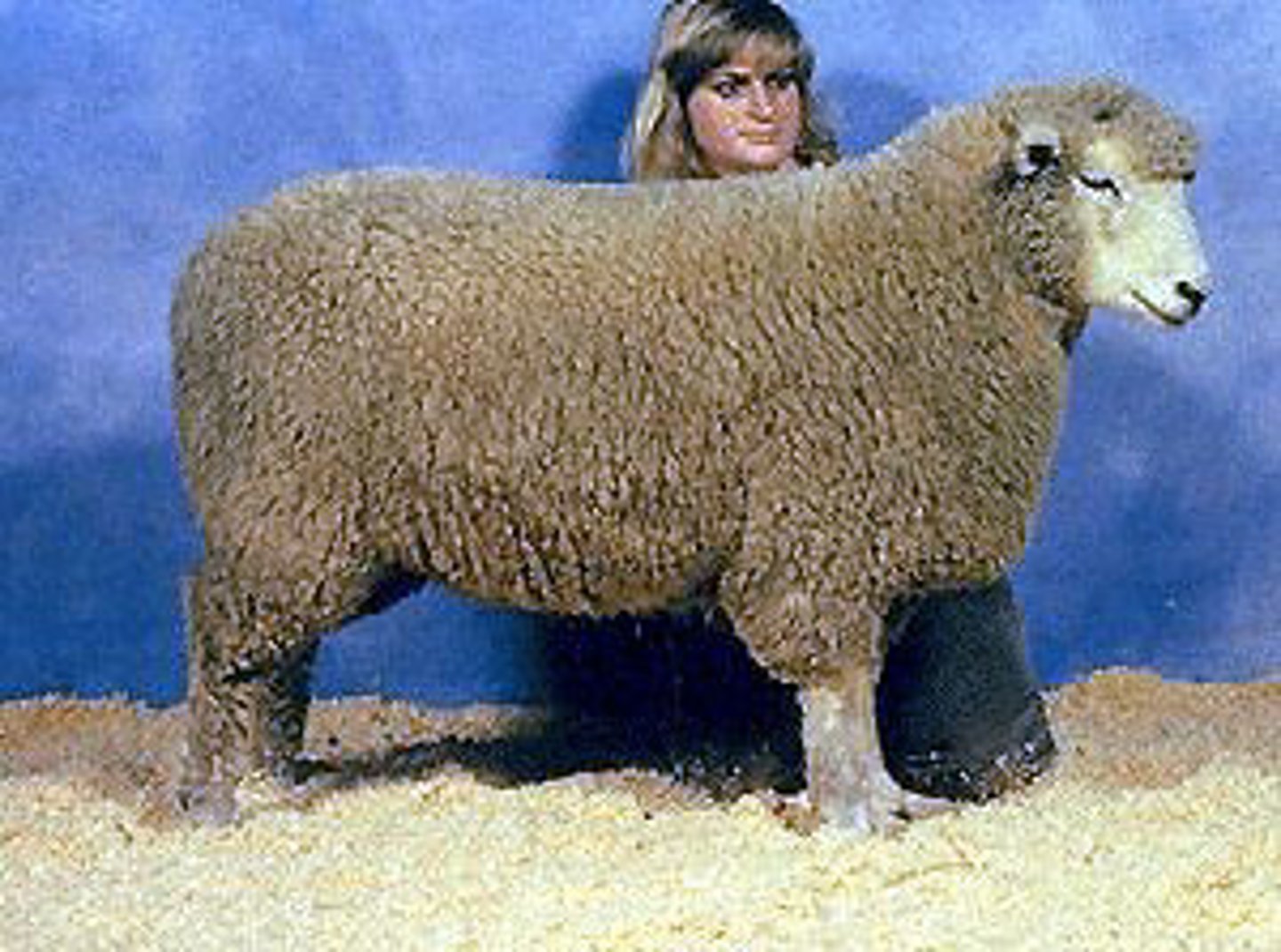
crossbred or medium-wool sheep breed
crossing a fine-wool breed with a long wool breed
columbia
crossbred or medium-wool sheep breed:
originated in Wyoming; crossing Lincoln rams with Rambouillet ewes; all polled; big sheep, long fleeces; most important
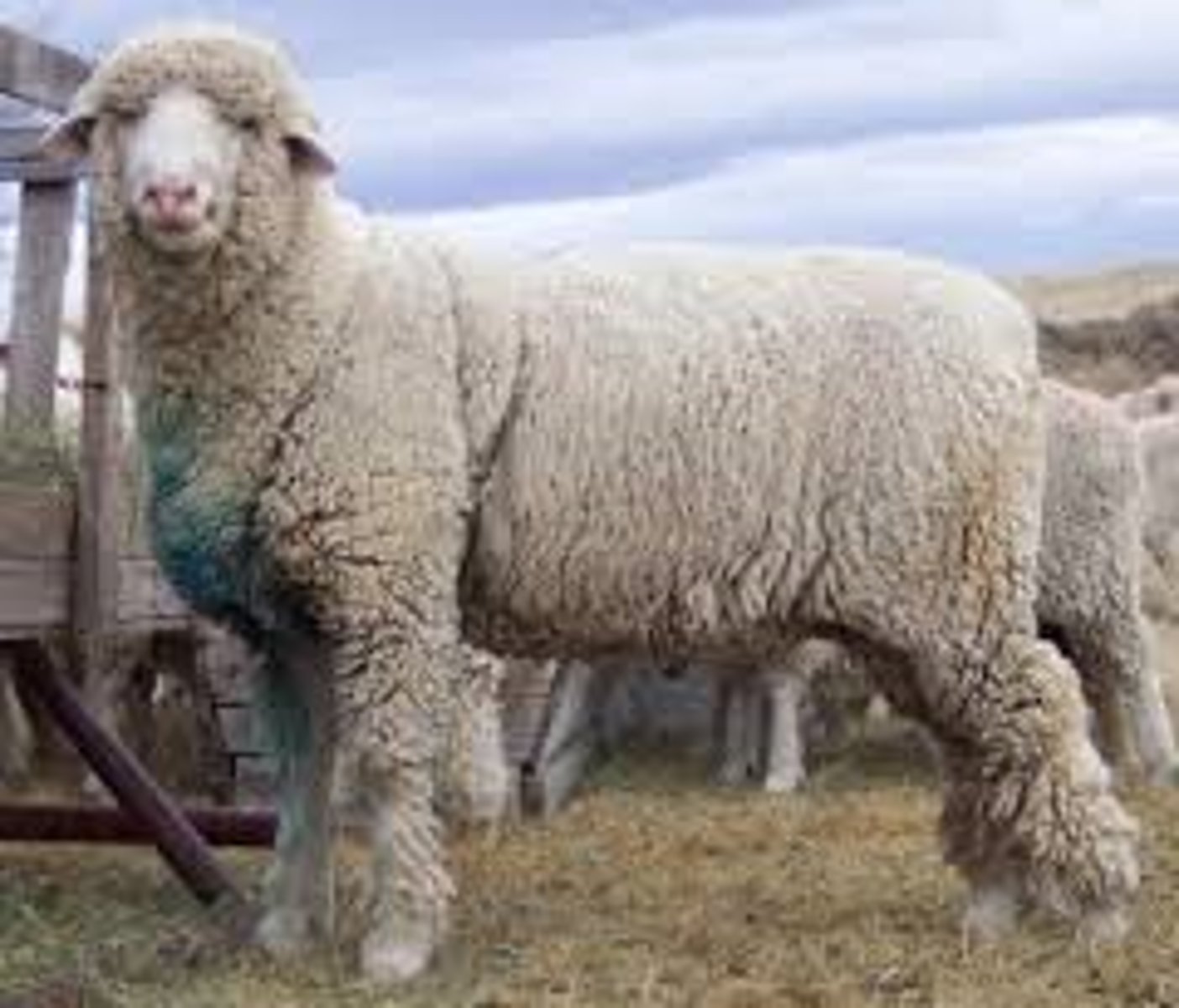
corriedale
crossbred or medium-wool sheep breed:
originated in New Zealand (less in US); crossing Lincoln rams with Merino ewes; dark footed= hooves, faces
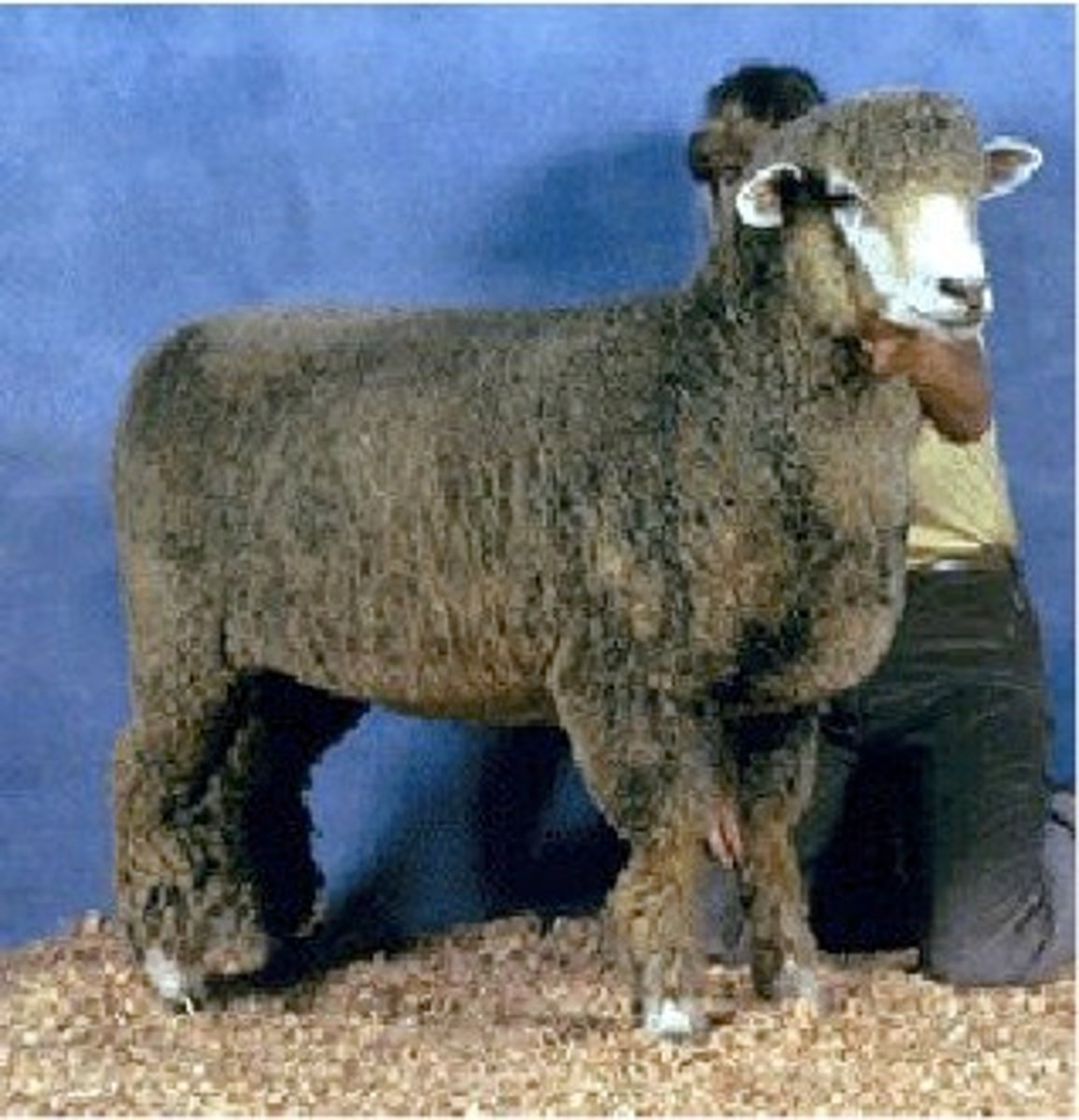
targhee
crossbred or medium-wool sheep breed:
originated in Idaho; crossing Rambouillet with Columbia ewes; 1/4 Lincoln
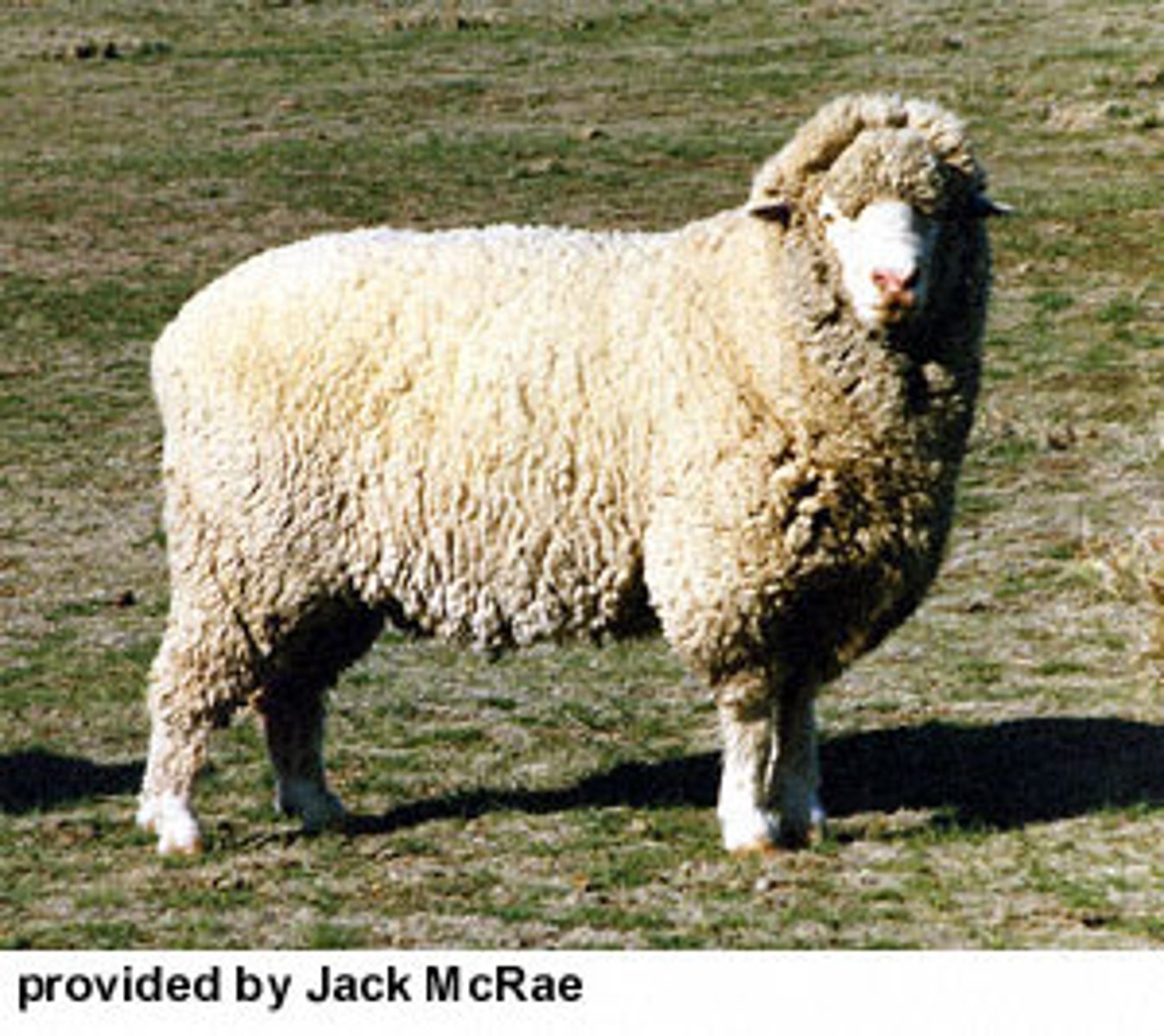
meat type or medium wool sheep breeds
most originate In England= imported sheep (not in US); advantages: fast-growing
suffolk
meat type or medium wool sheep breed:
largest of meat type breeds; black head, ears and legs with no wool on head and legs; impact transitional lamb market scheme
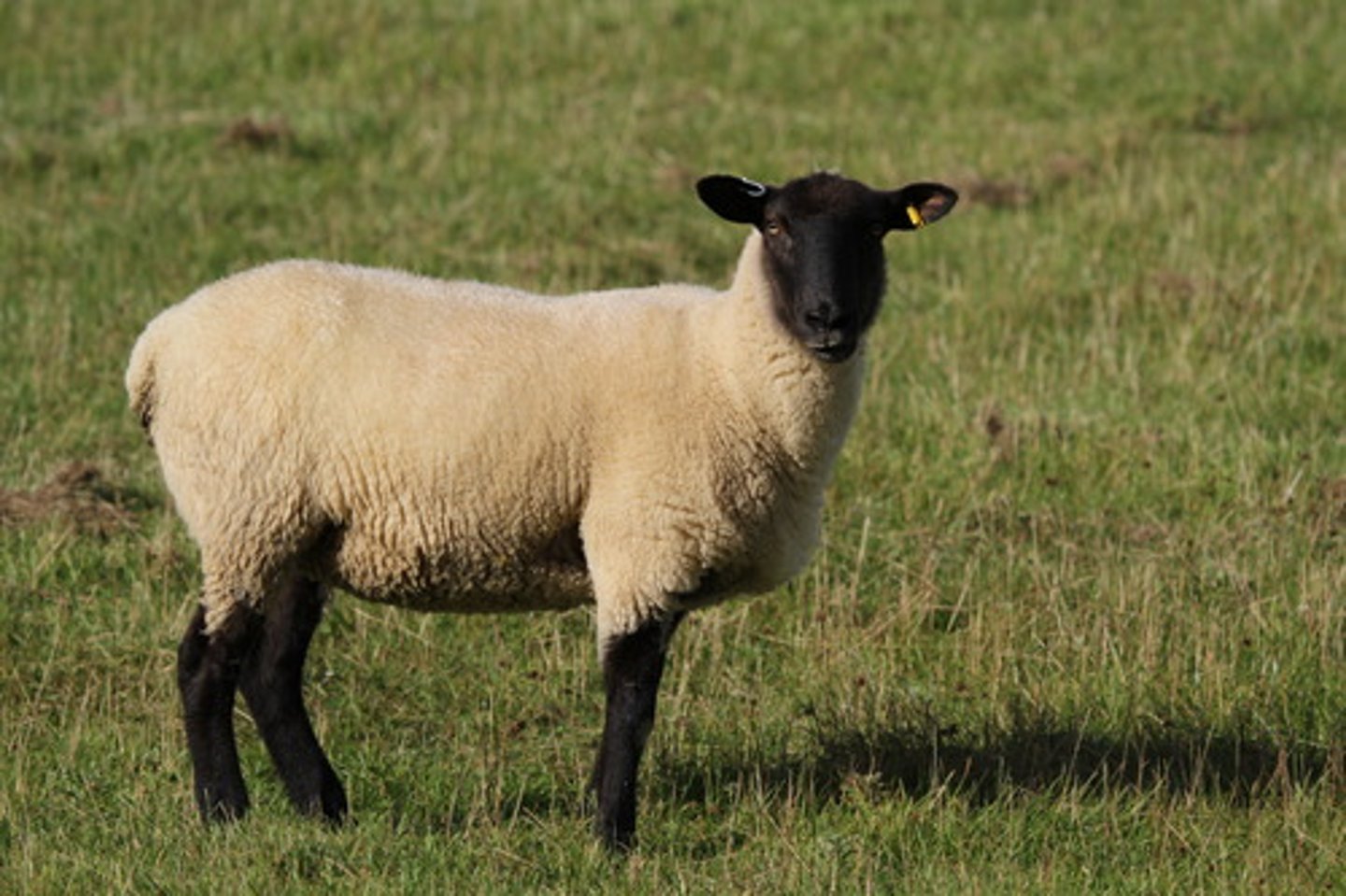
hampshire
meat type or medium wool sheep breed:
black head, ears and legs with wool on head and legs
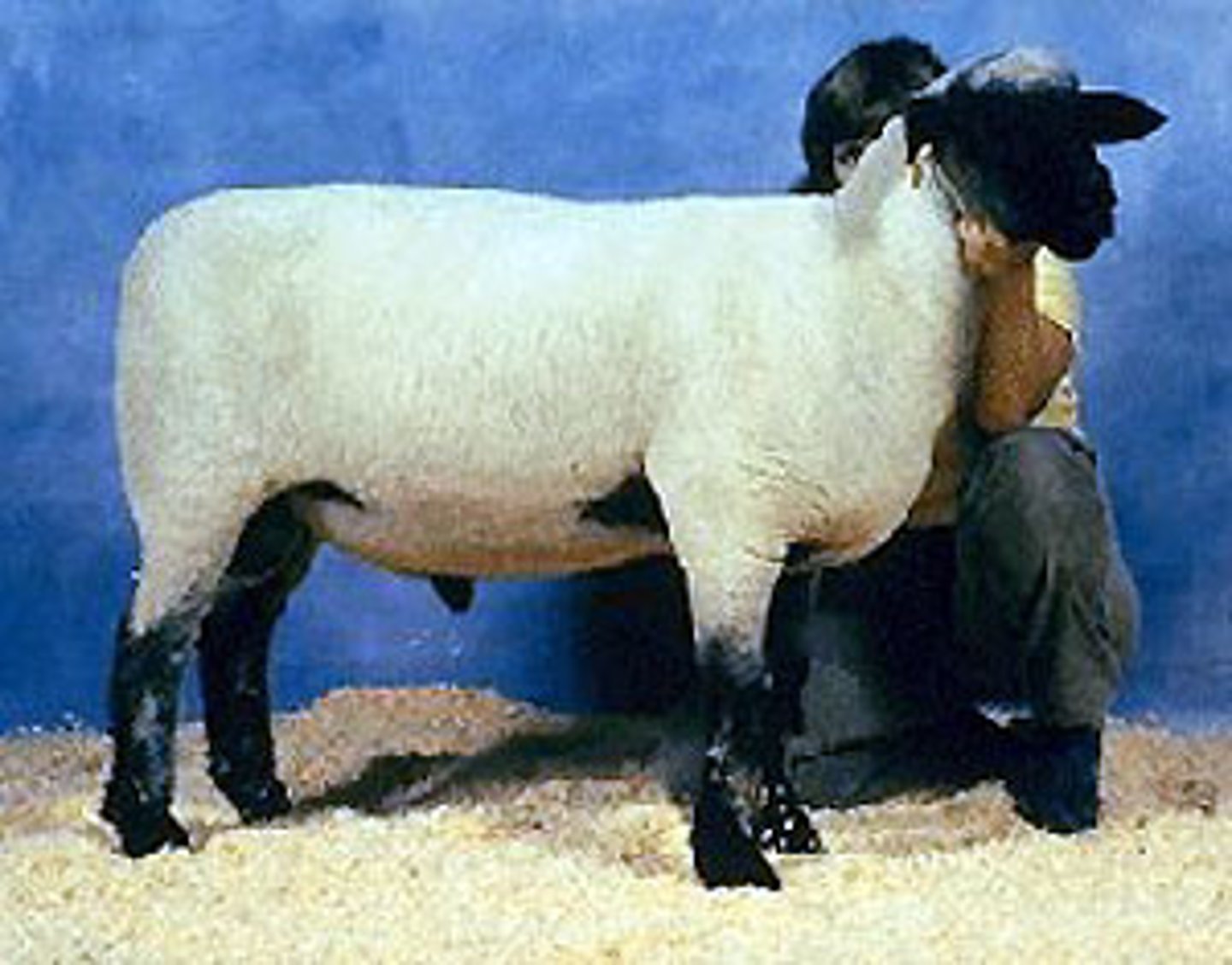
dorset
meat type or medium wool sheep breed:
white head; breed out of season (spring, summer); higher reproductive; horn/polled; farm folk
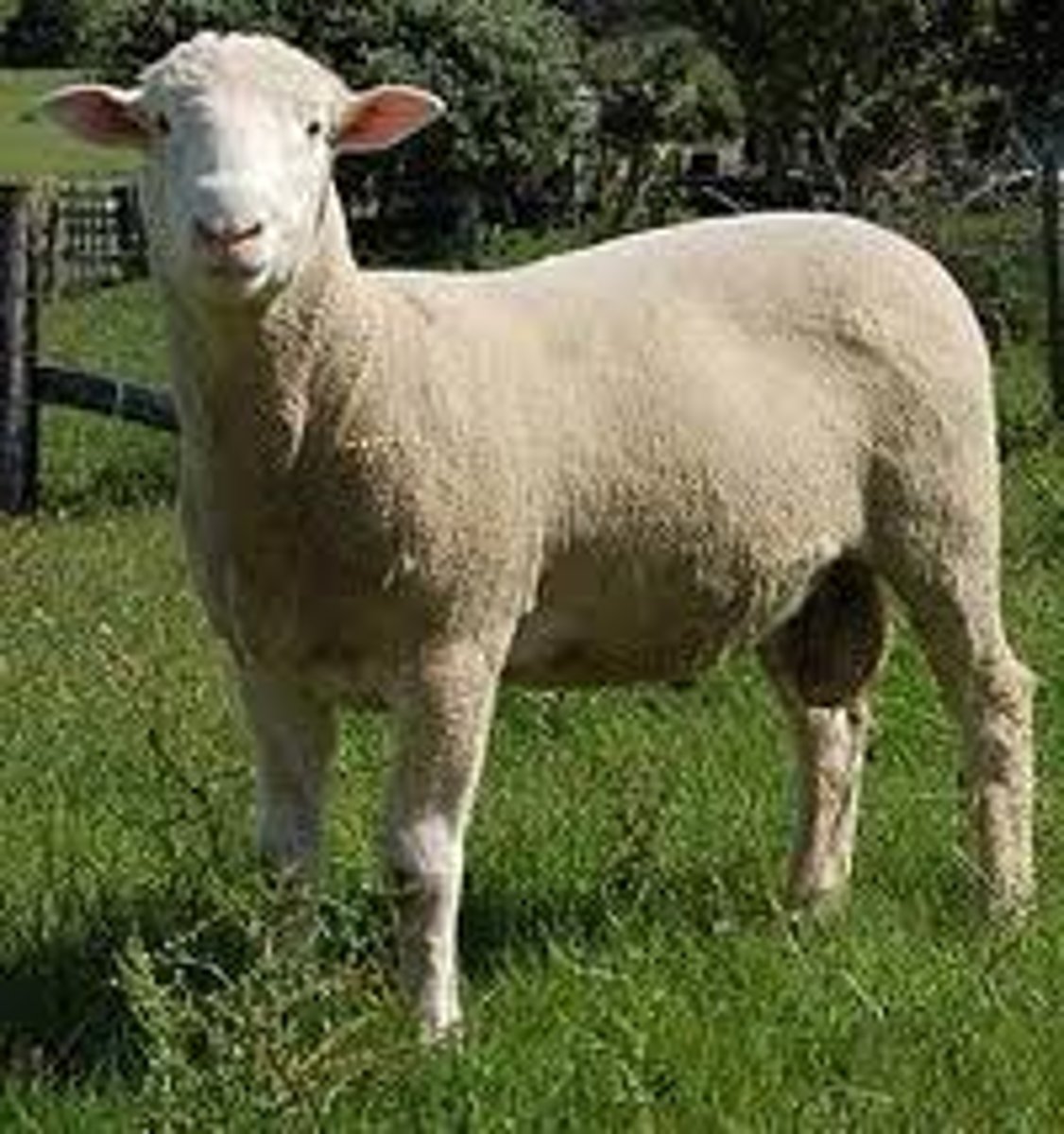
southdown
meat type or medium wool sheep breed:
smallest of meat type breeds; dark gray to light brown head, (furry) ears and legs with wool on head and legs (A LOT), black hooves

cheviot
meat type or medium-wool sheep breed:
white head, ears and legs with no wool, erect ears; tough, not good sheep; handle rough environments/bad conditions in England
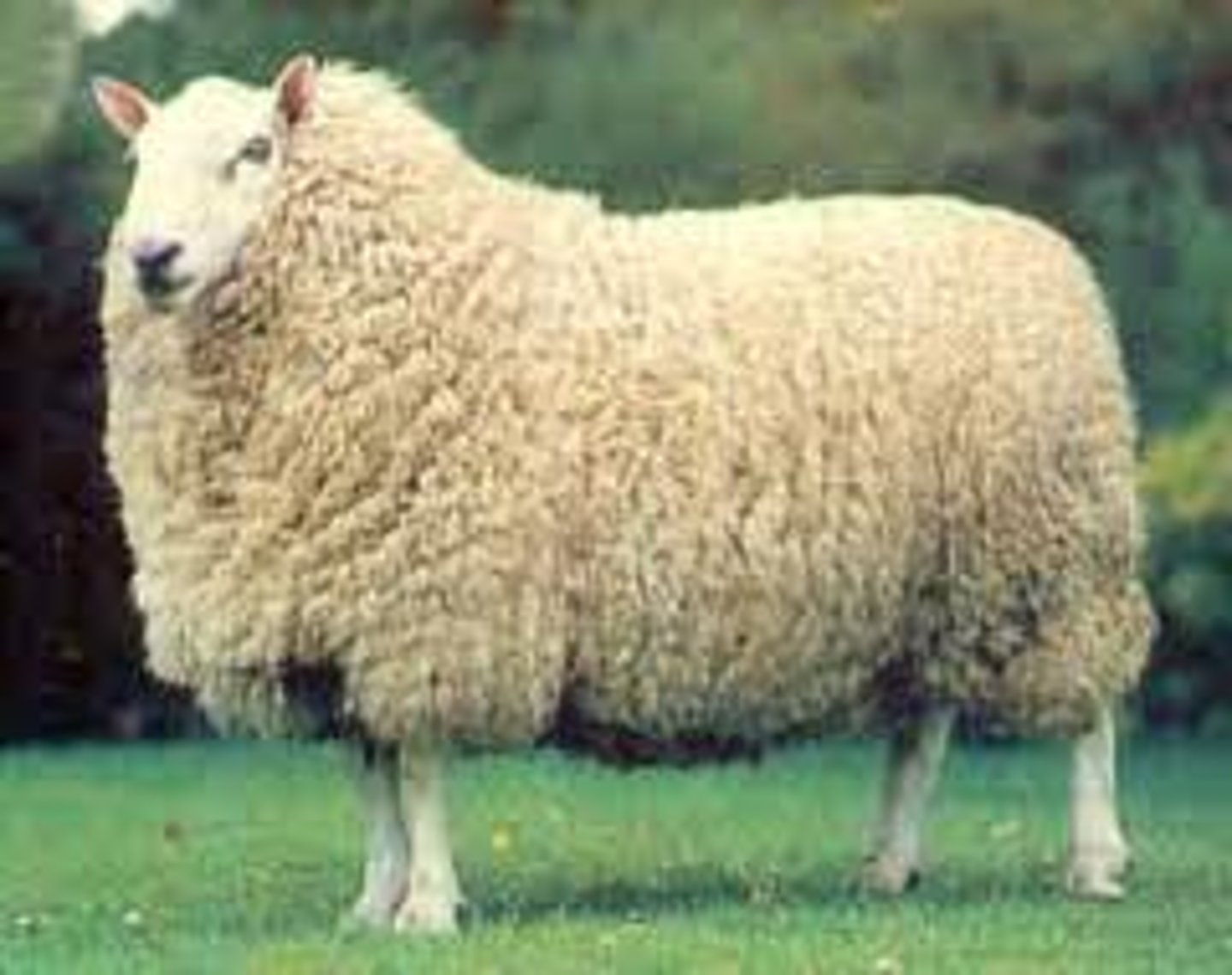
montadale
meat type or medium-wool sheep breed:
minor breed; originated in the US; crossing Cheviot rams with Columbia ewes
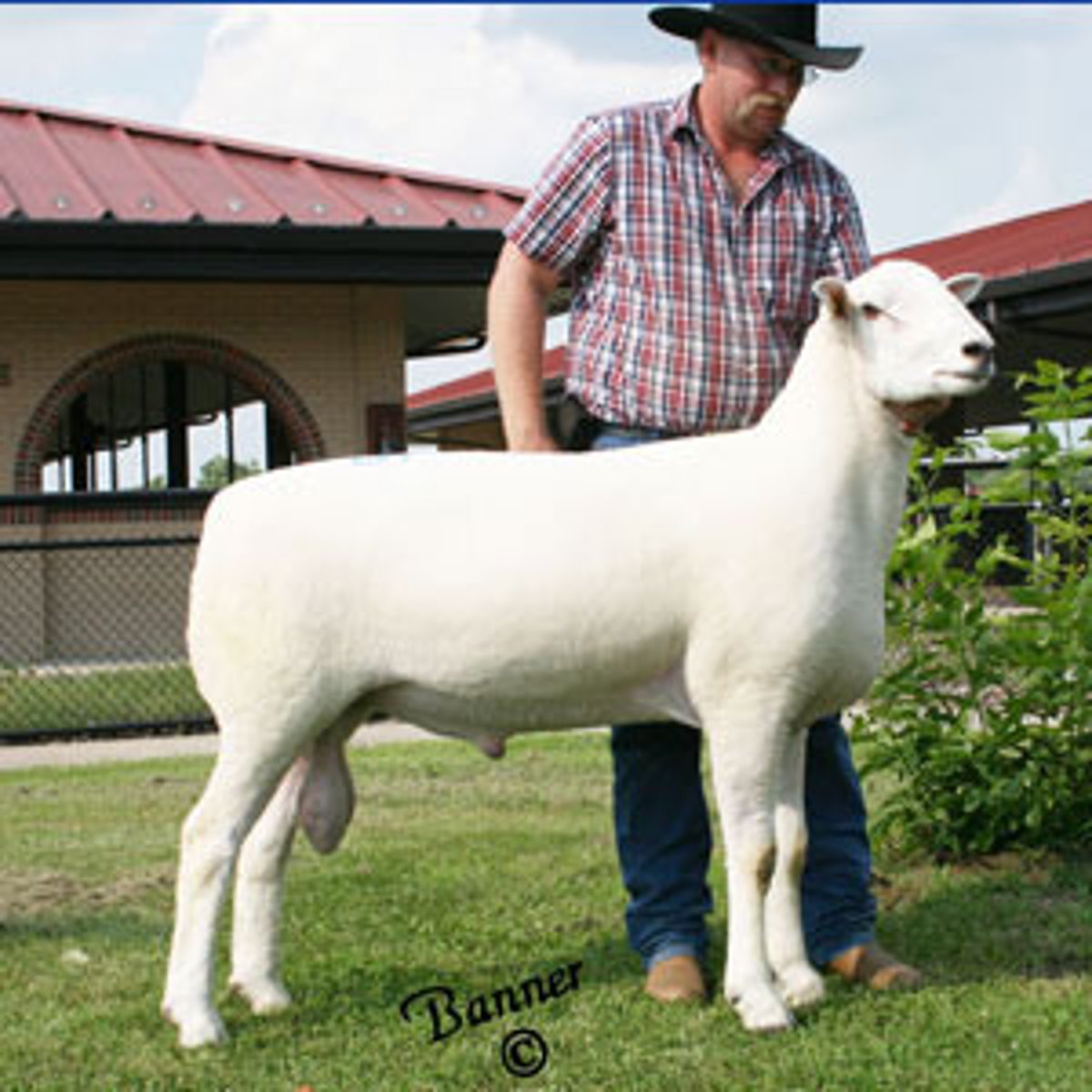
texel
meat type or medium-wool sheep breed: originated in Holland; white head, black nose, little muscular sheep; important meat breed
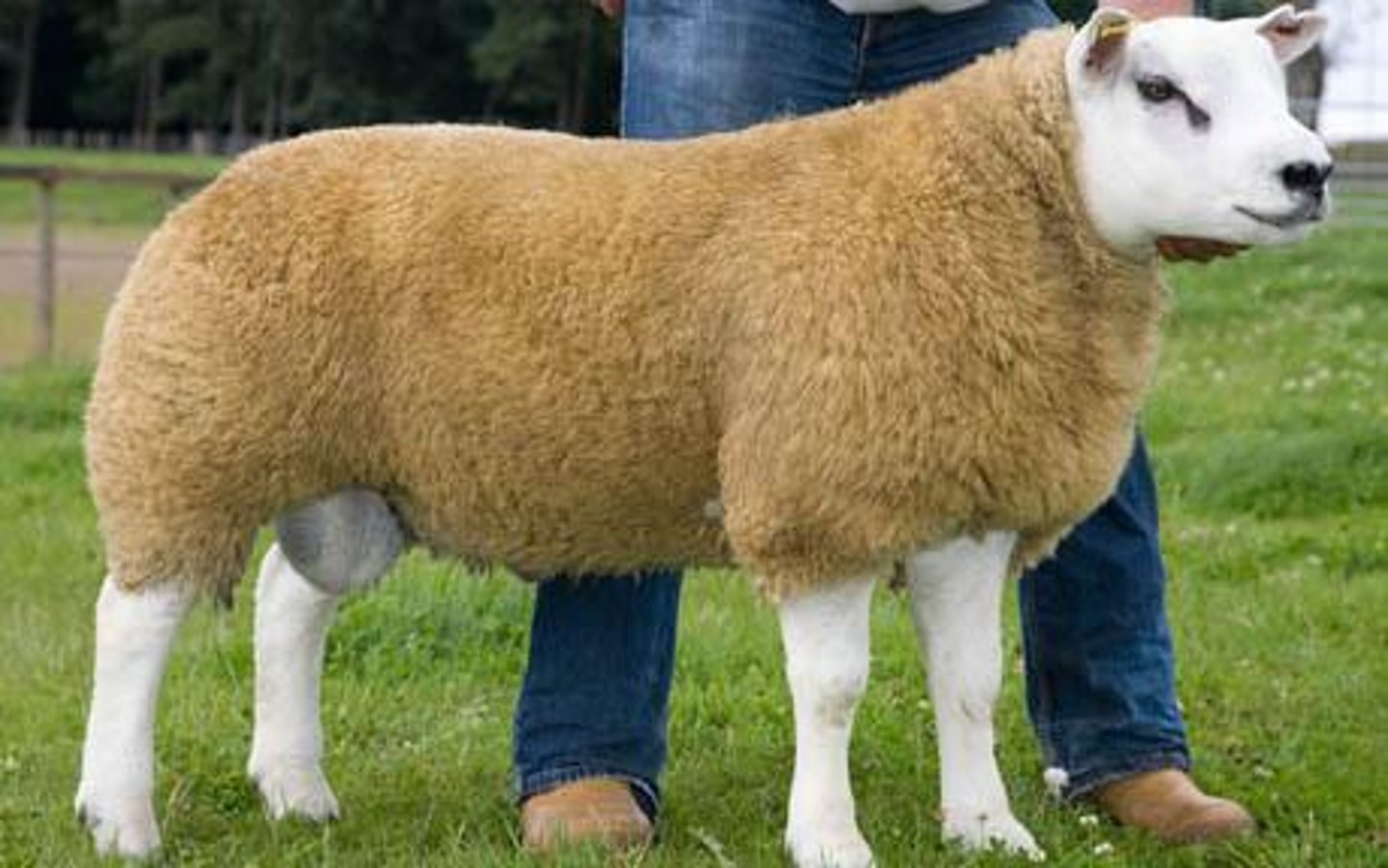
finnish landrace
other breeds- highly prolific/lightest muscle sheep:
(Finnsheep) white head; excellent milking and mothering ability; disadvantages: small, light-muscled carcasses, tail; low maintenance, high reproductive rate; critical period= 1 week
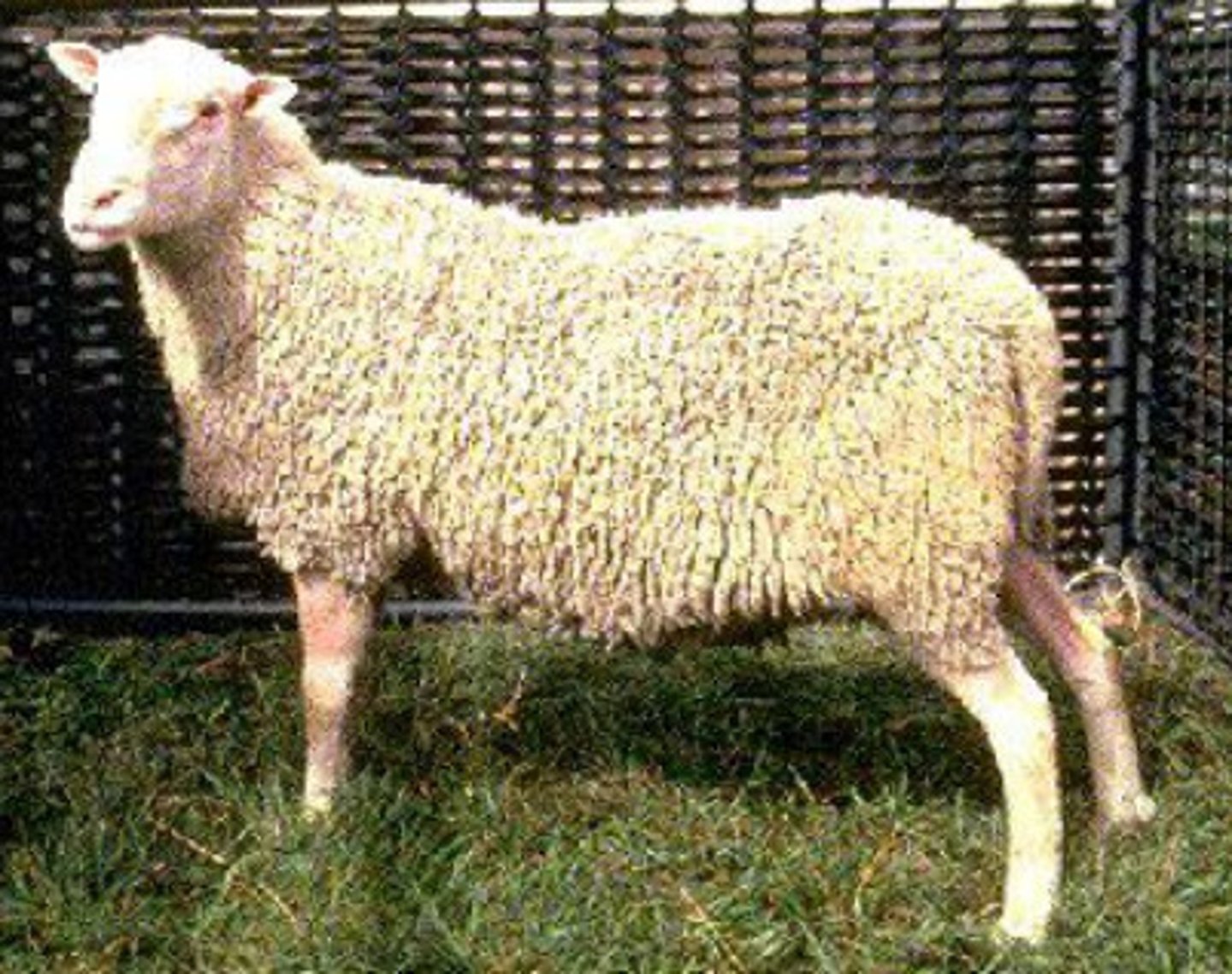
polypay
other breeds- highly prolific/lightest muscle sheep:
originated in US; crossing Rambouillet, Dorset, Targhee and Finnish Landrace (1/4 each); out-of-season breeding, hardiness (tough), acceptable wool (little value)
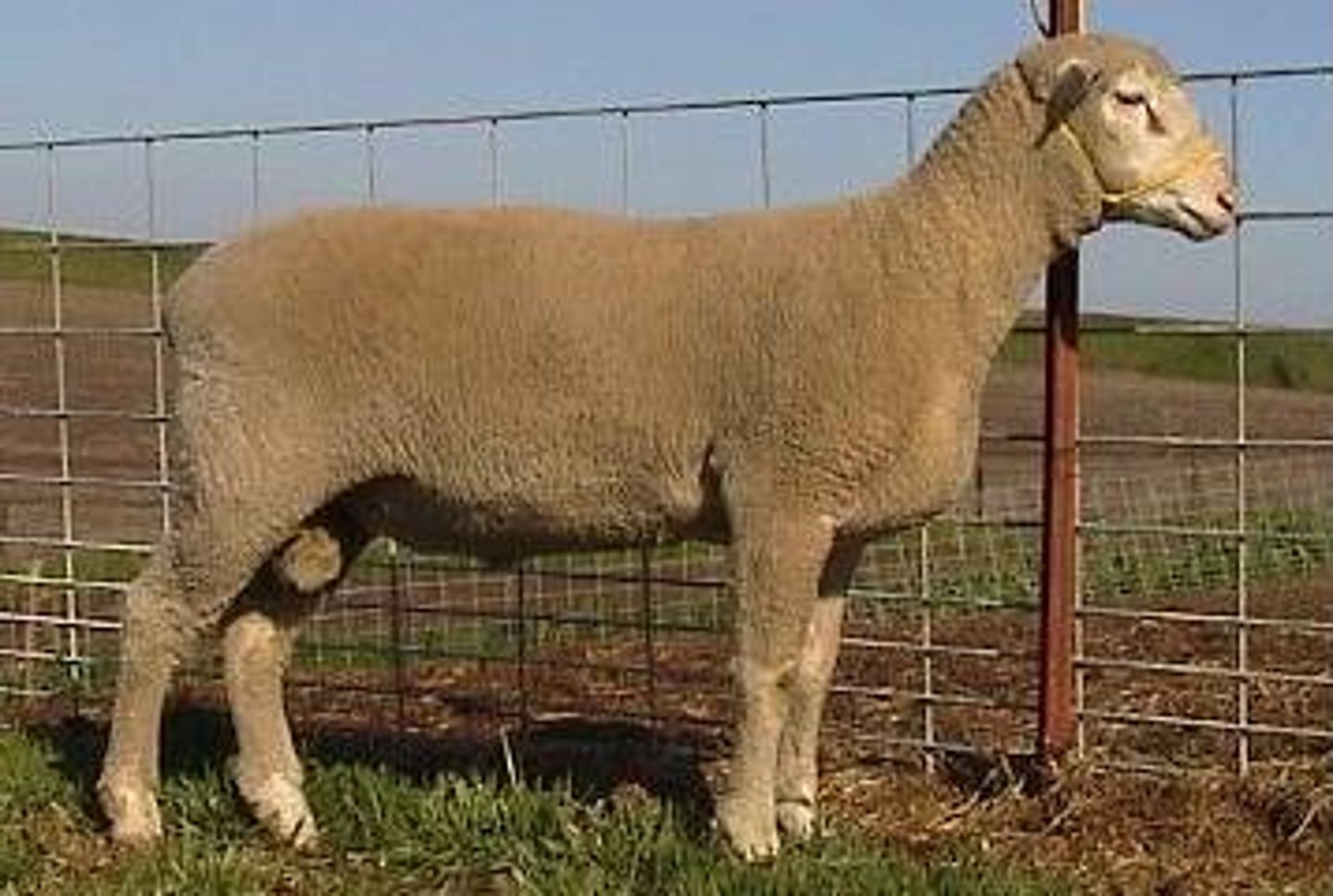
booroola-merino
other breeds- highly prolific/lightest muscle sheep:
originated in New Zealand; fine fleeces, small, inbreed; multiple (unique) genes= influence reproductive rate (F gene- responsible)
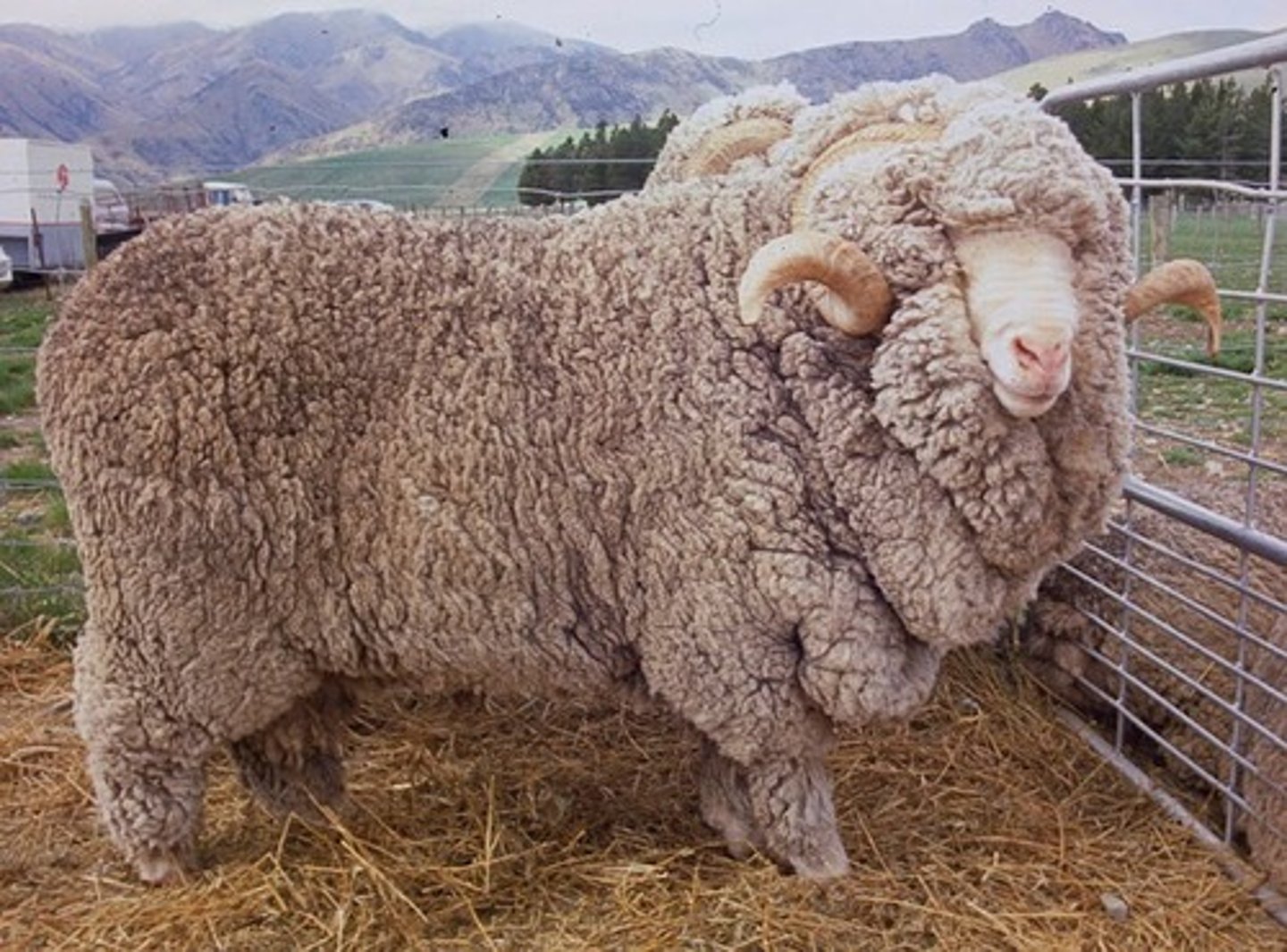
romanov
other breeds- highly prolific/lightest muscle sheep:
originated in Russia; light gray to black in color; high productive rate; babies= black, bad wool, tough, cross breeding
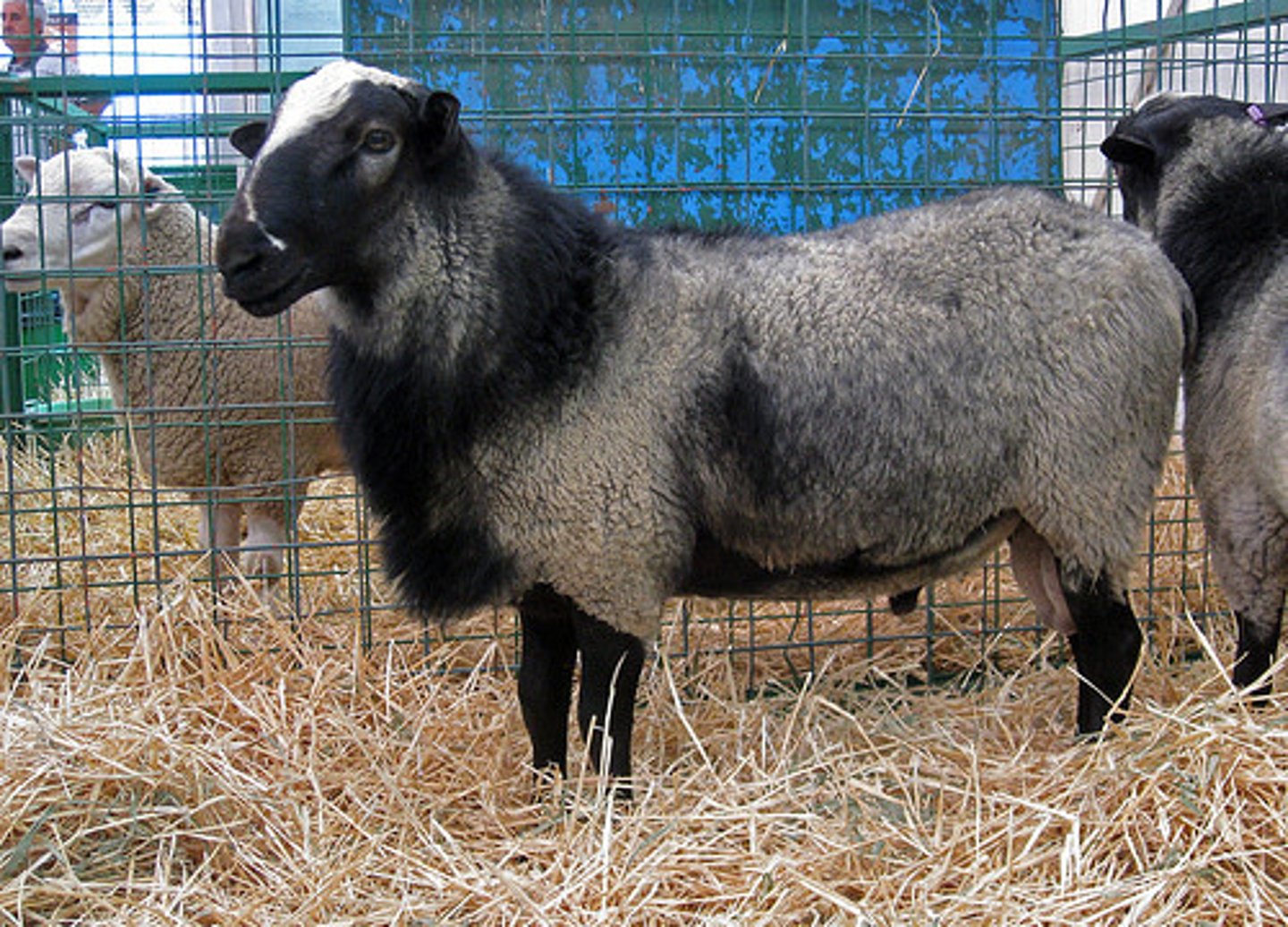
hair sheep and shedding breeds
advantages: adapted to hot/humid environments, have genetic parasite resistance, good under conditions; well suited to the needs of many ethic groups that buy more lambs in the US market; disadvantages: slow growth rate
dorper
hair sheep and shedding breeds:
originated in South Africa; crossing Dorset and Persian Blackhead (fat-tailed sheep); white body and legs with a black head; the most muscular of all shedding breeds, durable/tough; not a true hair sheep; fastest growing population in US
